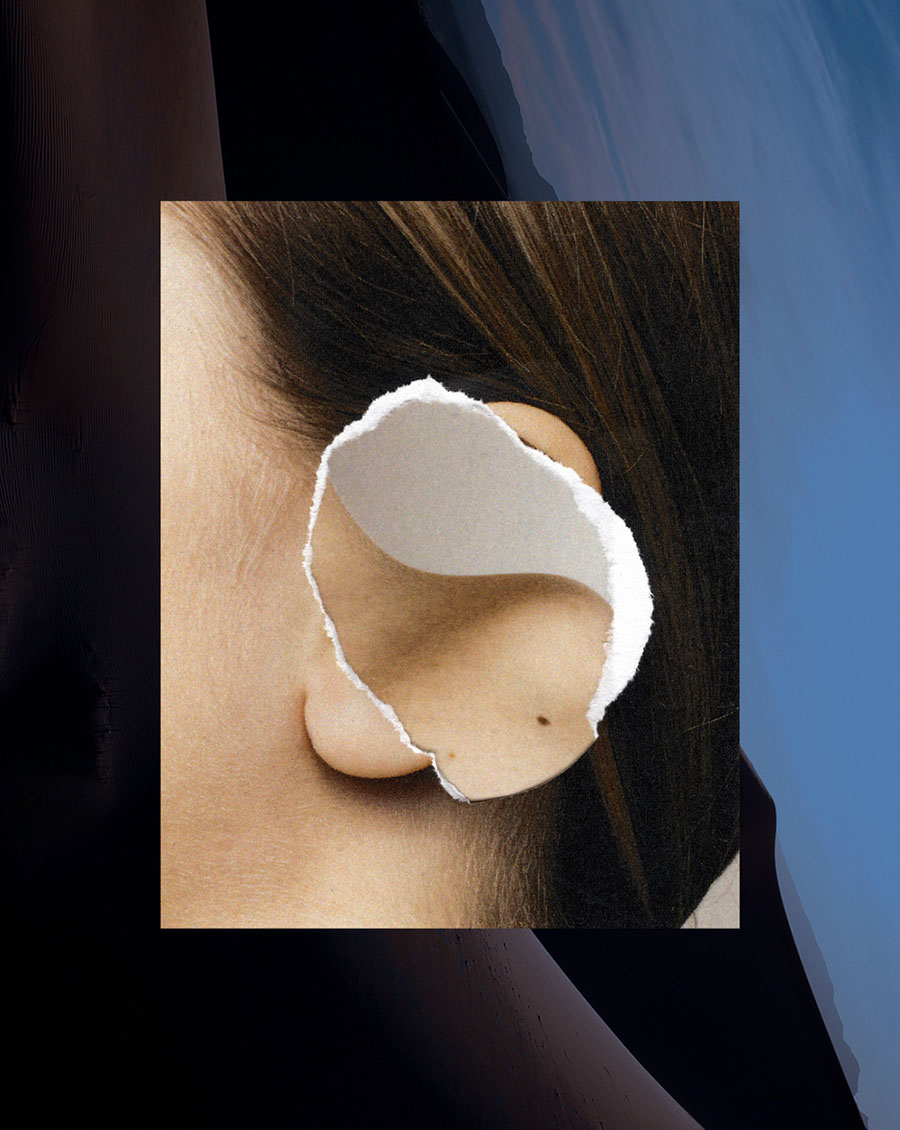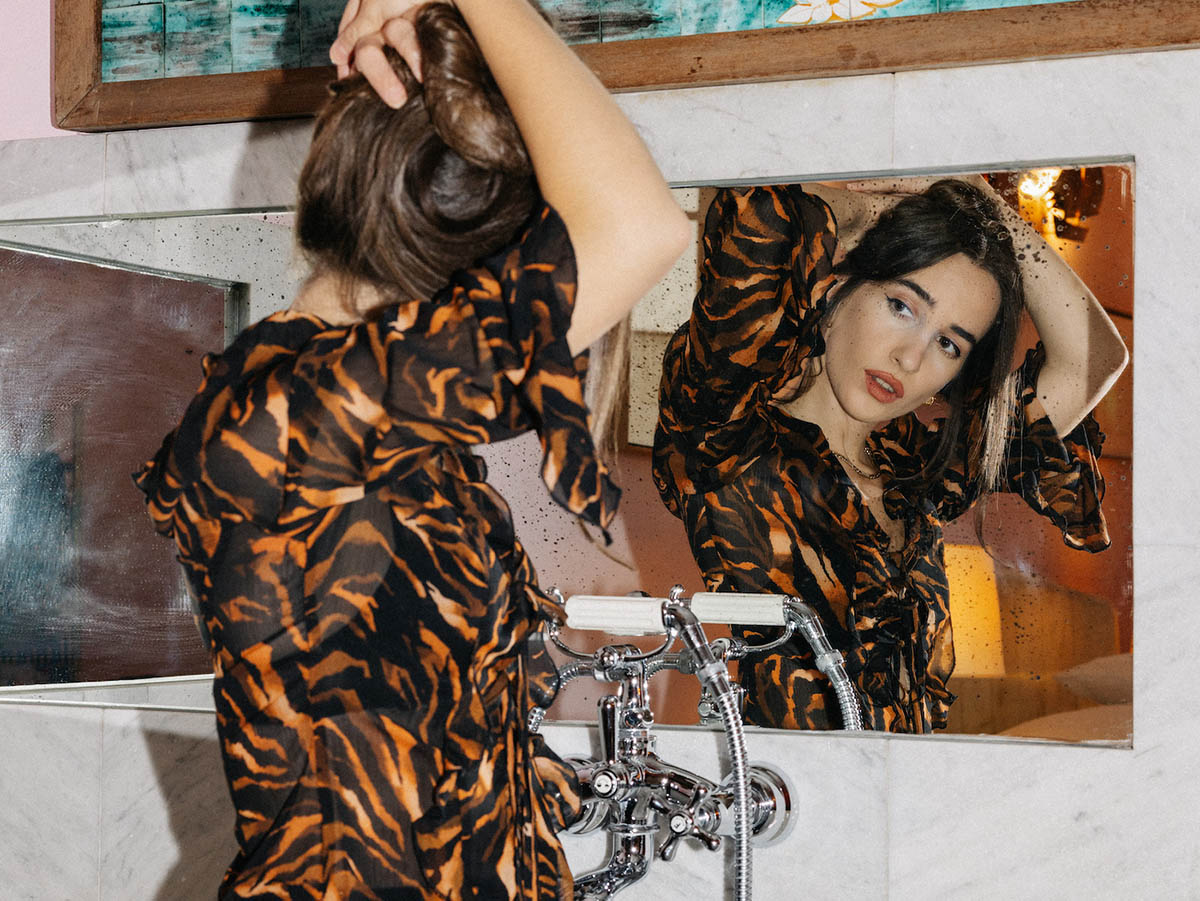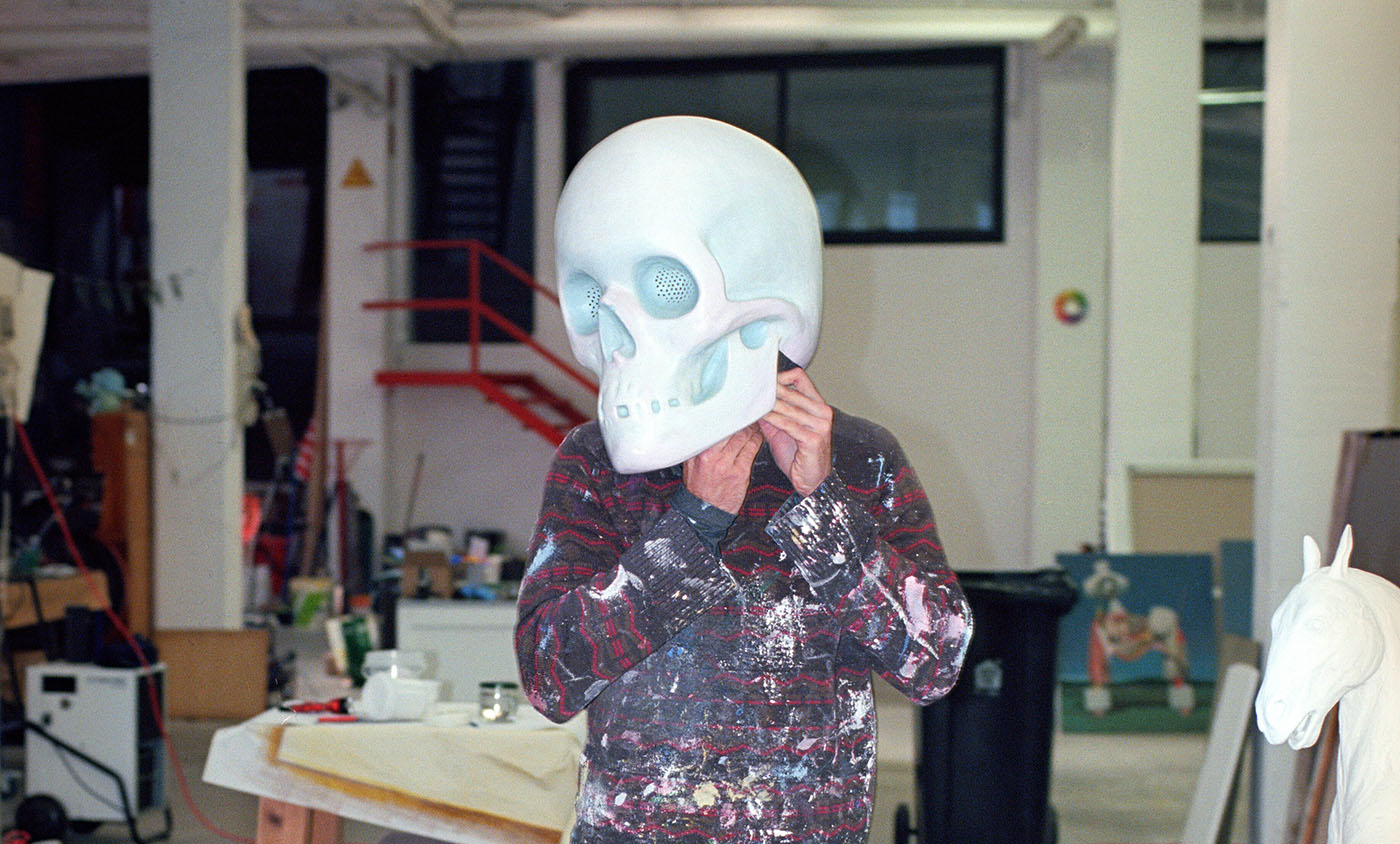Small is Beautiful: A Journey Into Miniature Art Debuts in Milan


artist: Hannah Levesque

artist: Gaspard Mitz
After captivating 250,000 visitors across Paris, New York, and Brussels, the internationally renowned exhibition “Small is Beautiful” makes its Italian debut in Milan. Housed by Milan’s leading cultural aggregation center Fabbrica del Vapore, this extraordinary showcase takes visitors on a journey beyond reality, immersing them into a world of miniature dimensions where one feels like a giant navigating a universe as small as the tip of a finger.
Collectively hosting the exhibition are Fever, the pioneering entertainment platform, and Exhibition Hub, producer of large exhibitions across the world, “Small is Beautiful” opens its doors on May 9, 2024. Curated by Serge Victoria, the exhibition transforms miniature art into a major artistic genre, presenting an incredible exploration through minutely detailed worlds, rich in poetic expression and unfettered imagination.
19 miniature artists from all over the world showcases their works in art forms such as painting, photography, sculpture and even crochet, incorporating different media from paper, food, pencil tips and even recycle materials. These pieces, some merely millimeters in size, require powerful magnifying glasses to fully observe their intricate details. Walking through the exhibition hall, it is hard to not appreciate the boundless imagination, remarkable patience and exceptional virtuosity these artists have dedicated to their works.
The exhibition burgeons from social network. Curator Serge Victoria noticed a decent number of miniature artists sharing their creations on social media, giving him ideas on building a platform to showcase the beauty of miniature art in all facets. “Small is Beautiful” not only aims to bring miniature art to a wider audience and offer a behind-the-scenes look at the creation of it, but also seeks to foster a community eager to embrace all dimensions of art.

artist: Derrick Lin


artist: Minimiam

artist: Kiu Mini Art
The title, “Small is Beautiful,” harks back to economist Leopold Kohr’s advocacy for human-scaled societies in his student Ernst Friedrich Schumacher’s 1973 book “Small is Beautiful: A Study of Economics as if People Mattered.” Kohr championed the idea of reducing scales in various domains—economics, ecology, governance—to counteract the norm of gigantism. The meticulous attention to detail and the diminutive scale of the artworks challenge our perceptions, guiding us to ponder the beauty and complexity of smallness in a world that often prioritizes the big.
“Small is Beautiful” will be at Milan’s Fabbrica del Vapore, in Spazio Messina from May 9th 2024 to September 22nd 2024.
Text: Yves Tsou
The Nth Self-Portrait
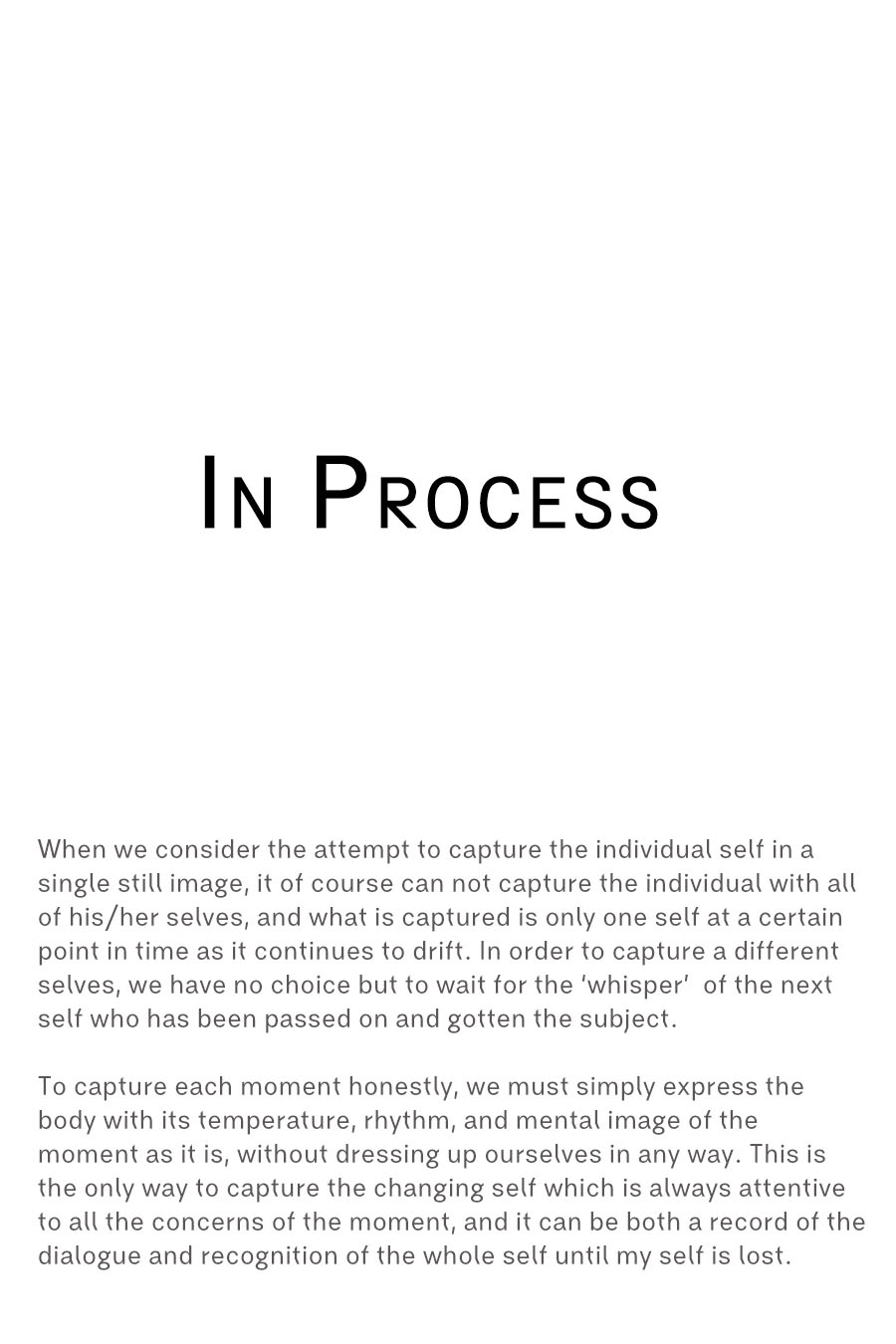
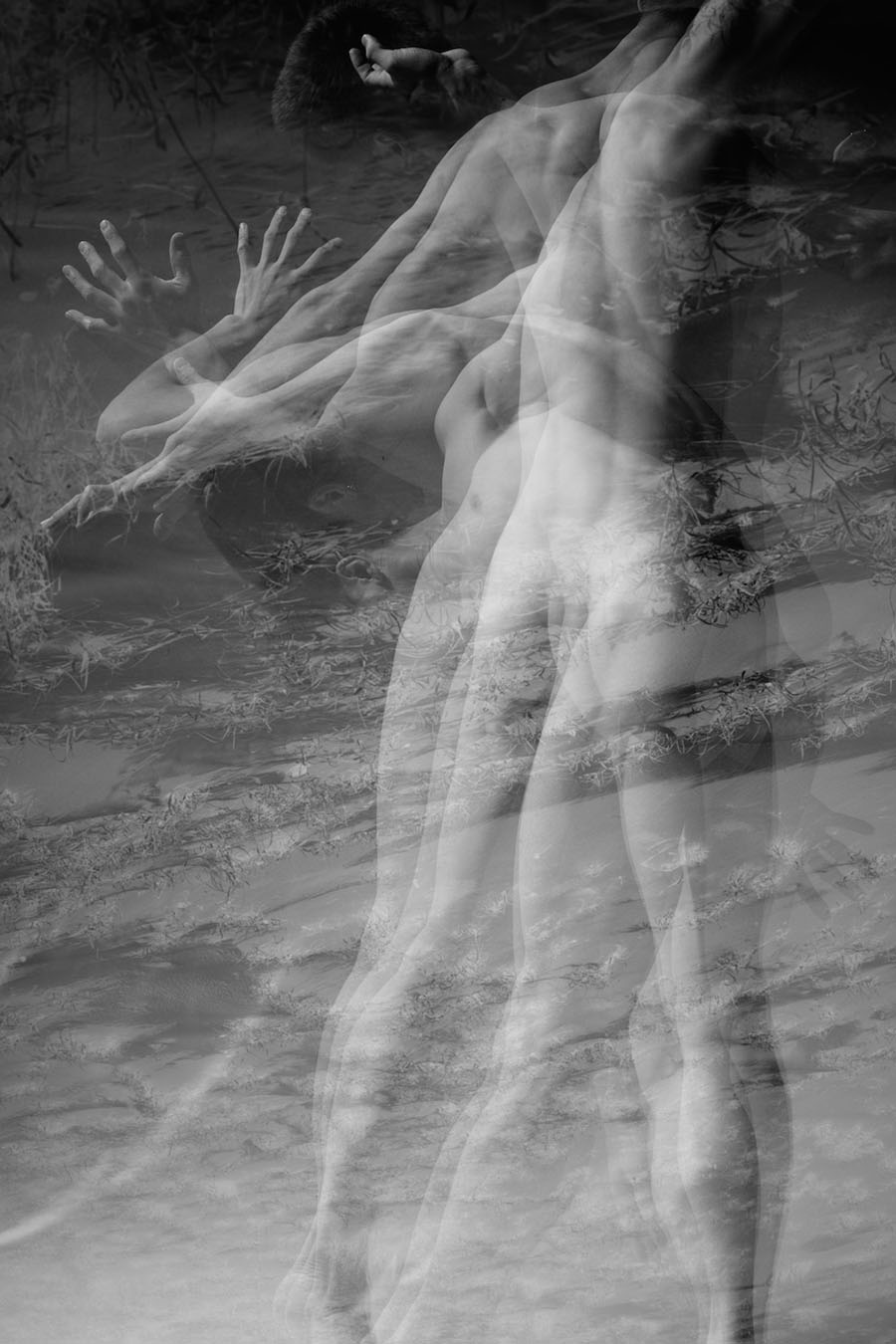
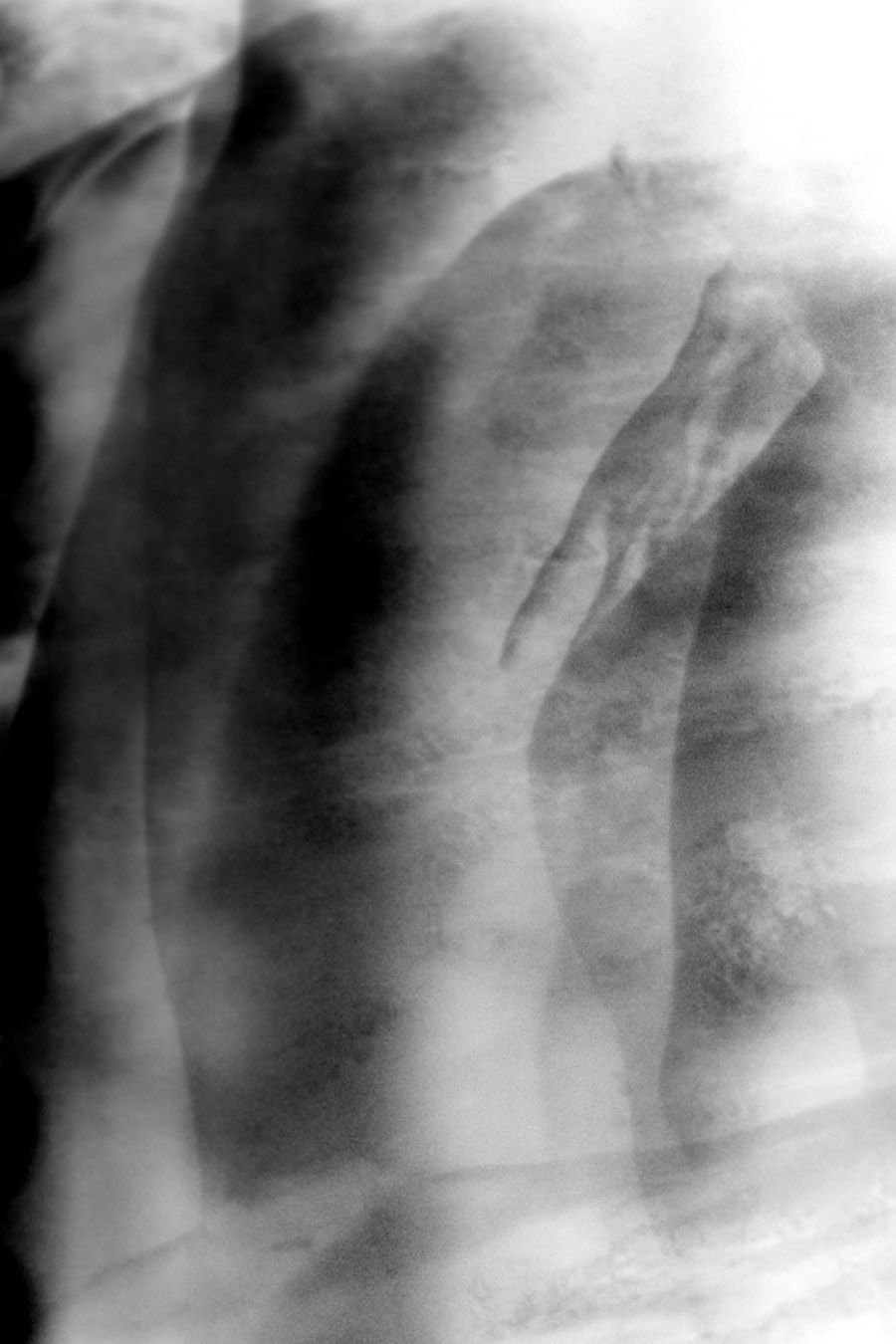
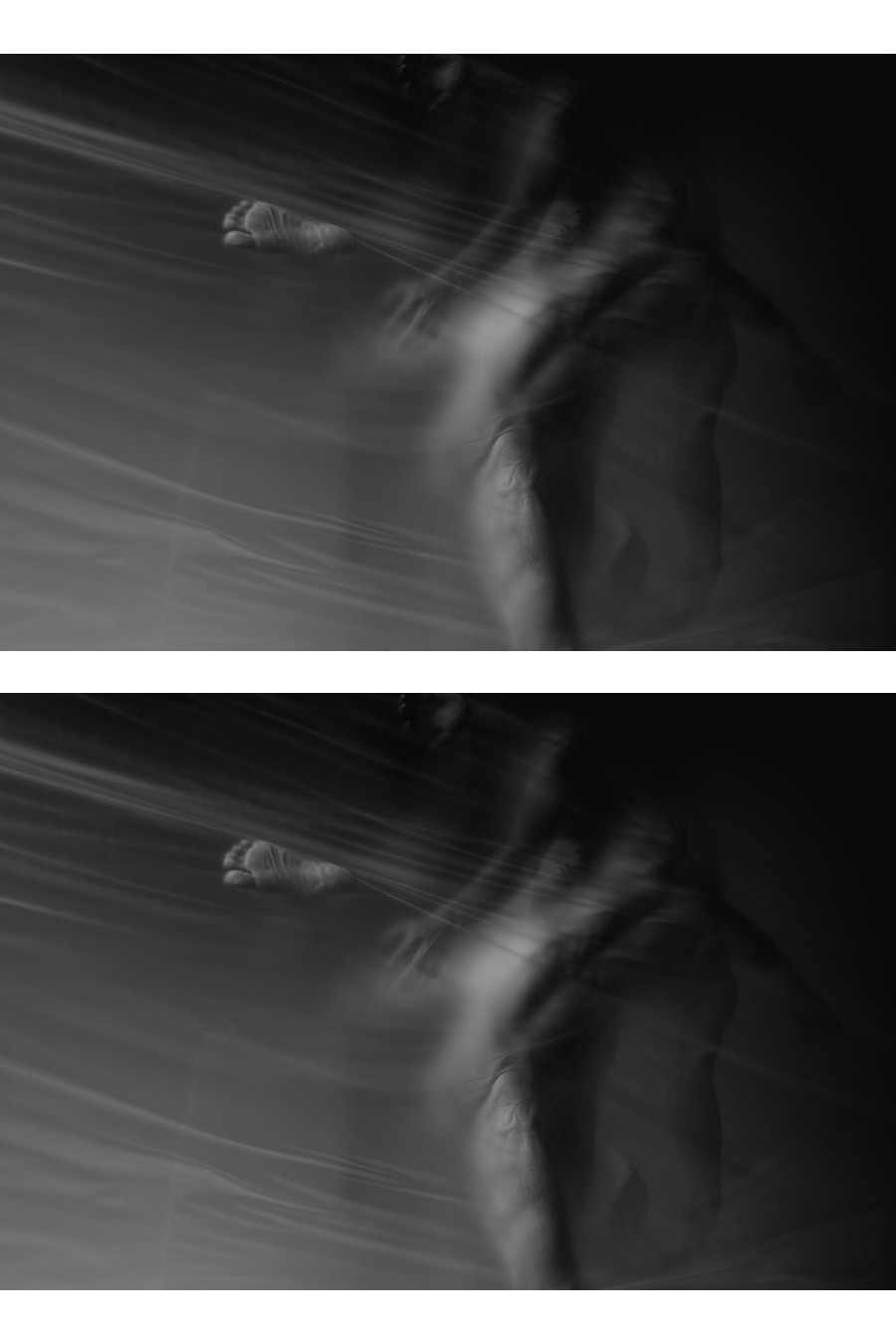
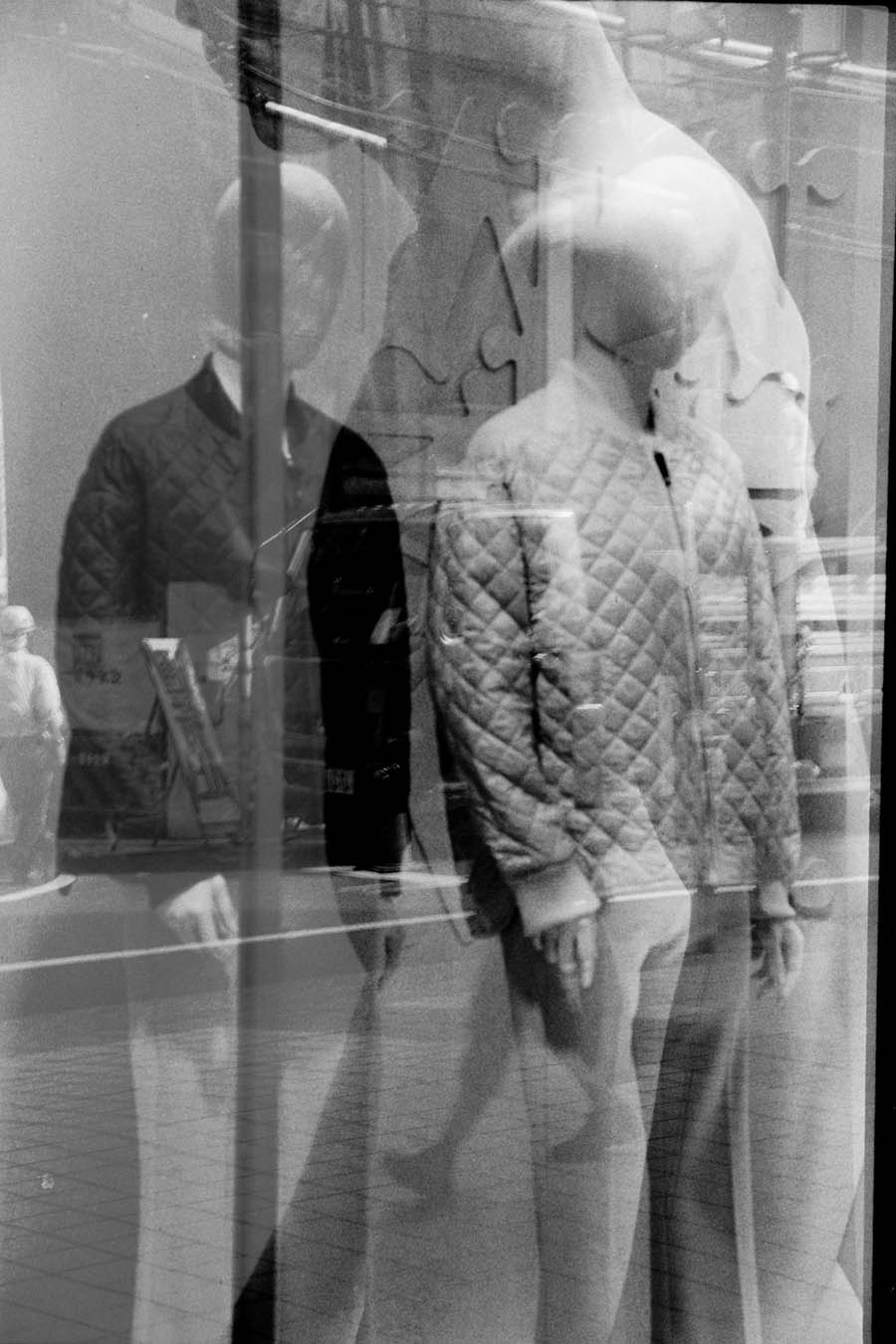
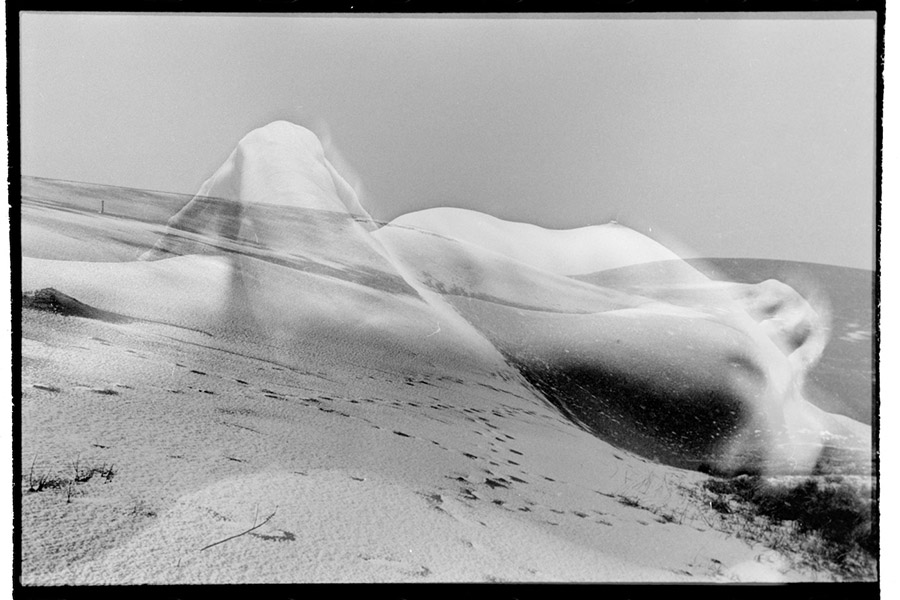
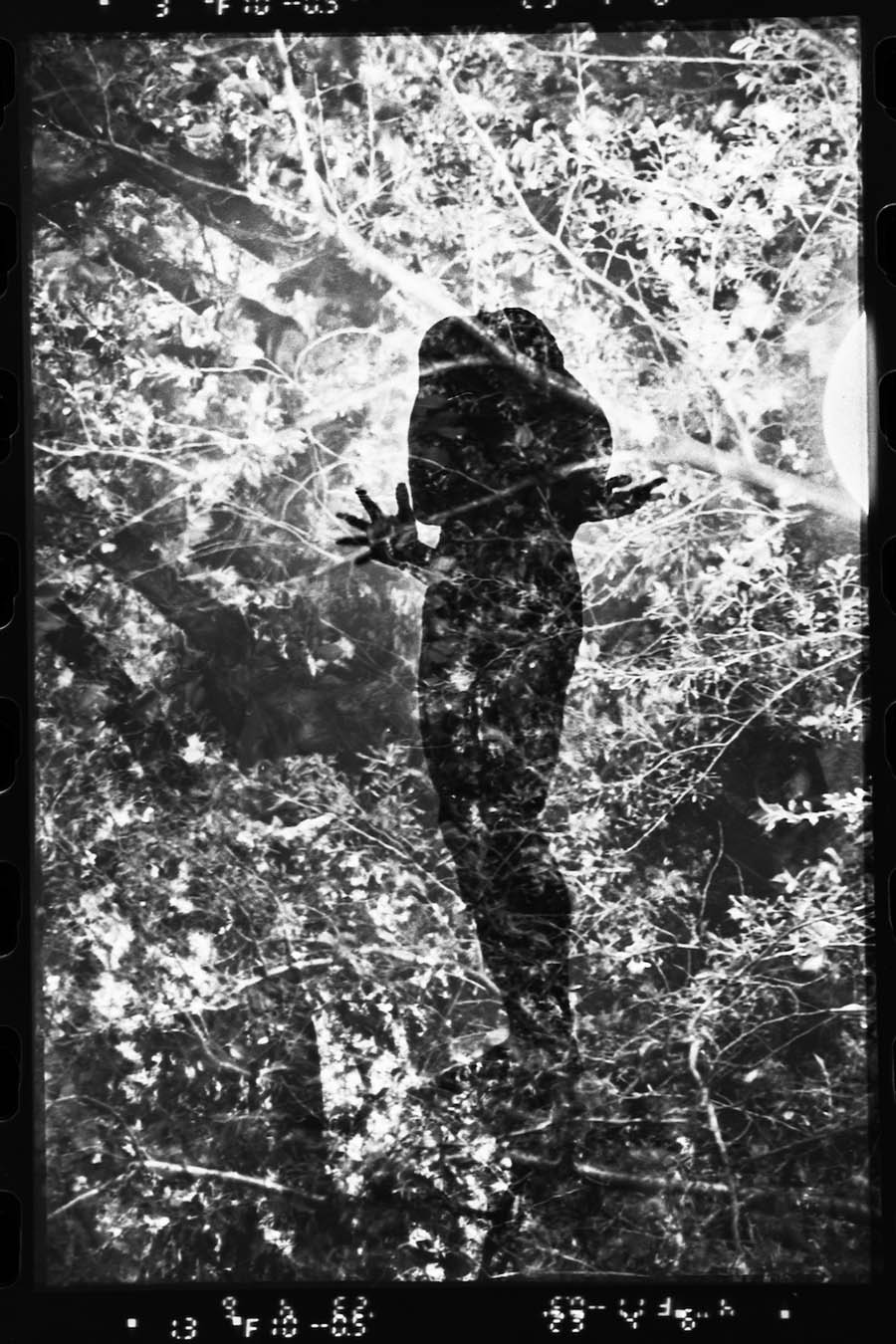
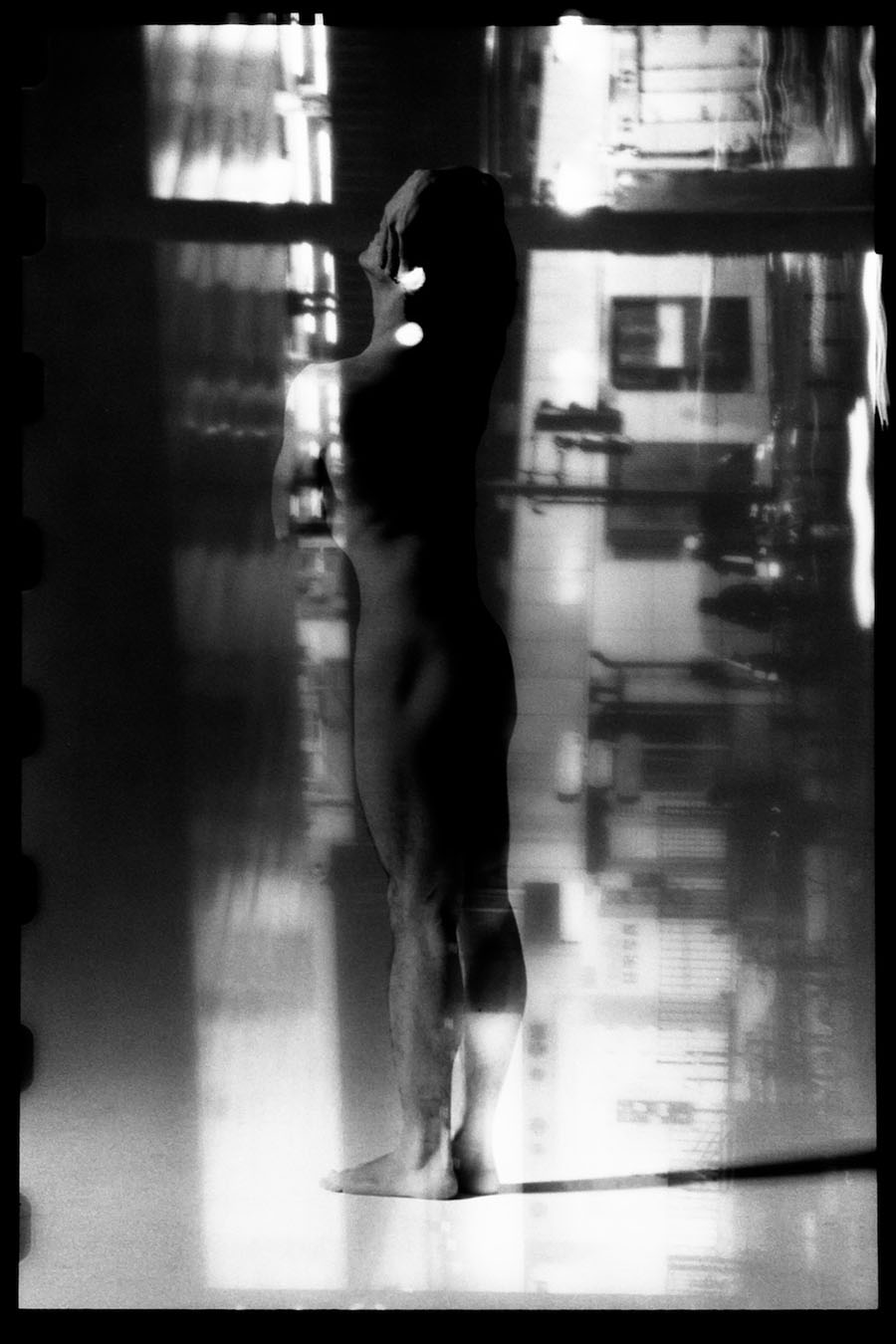
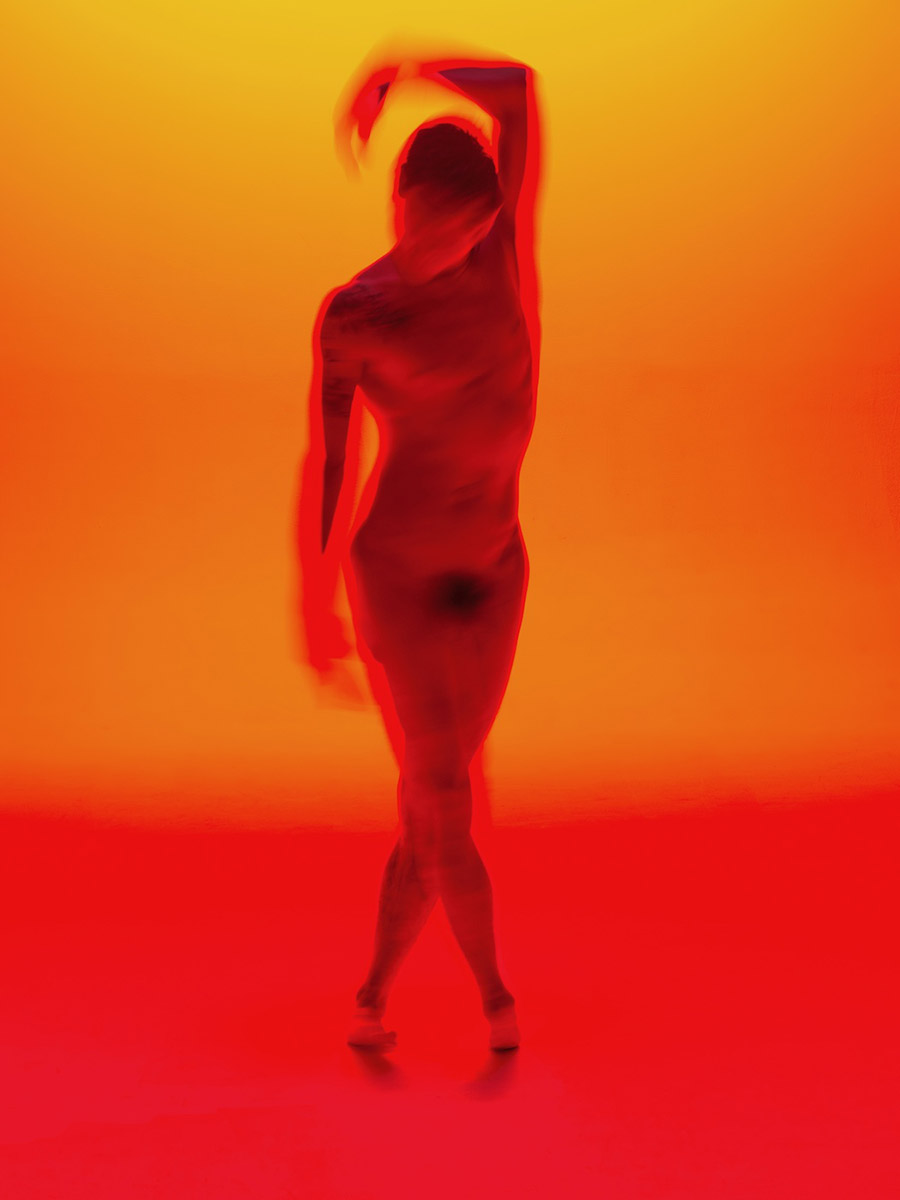
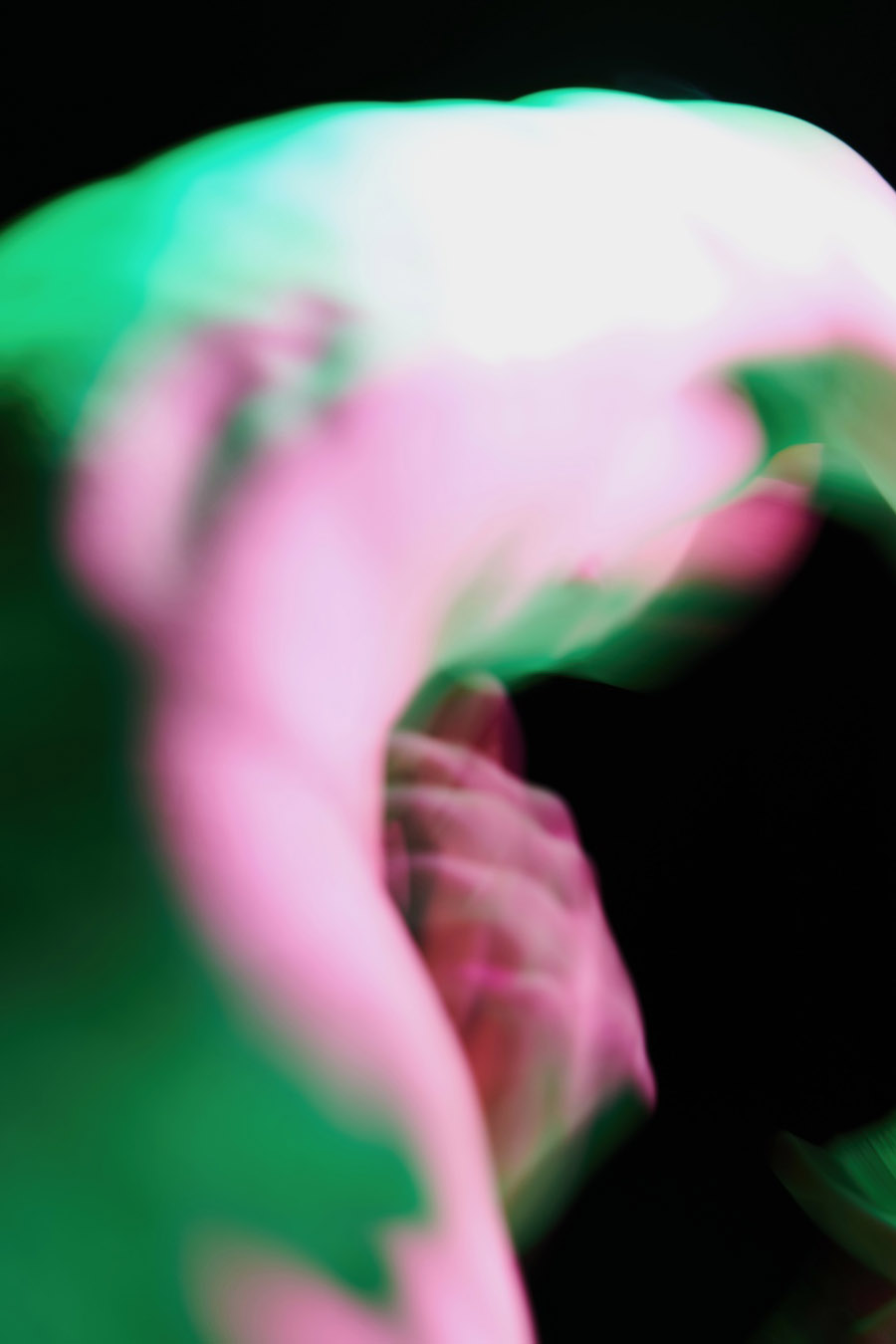
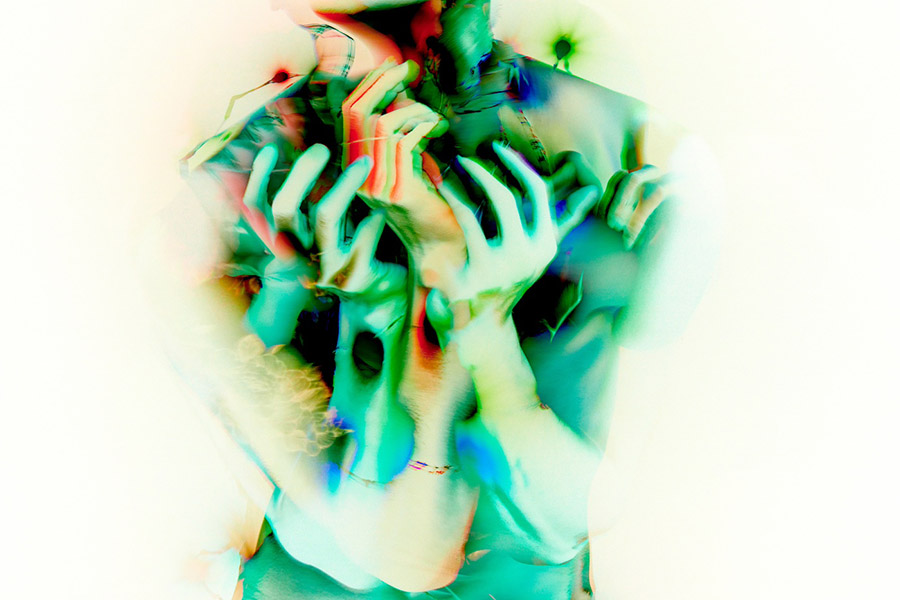
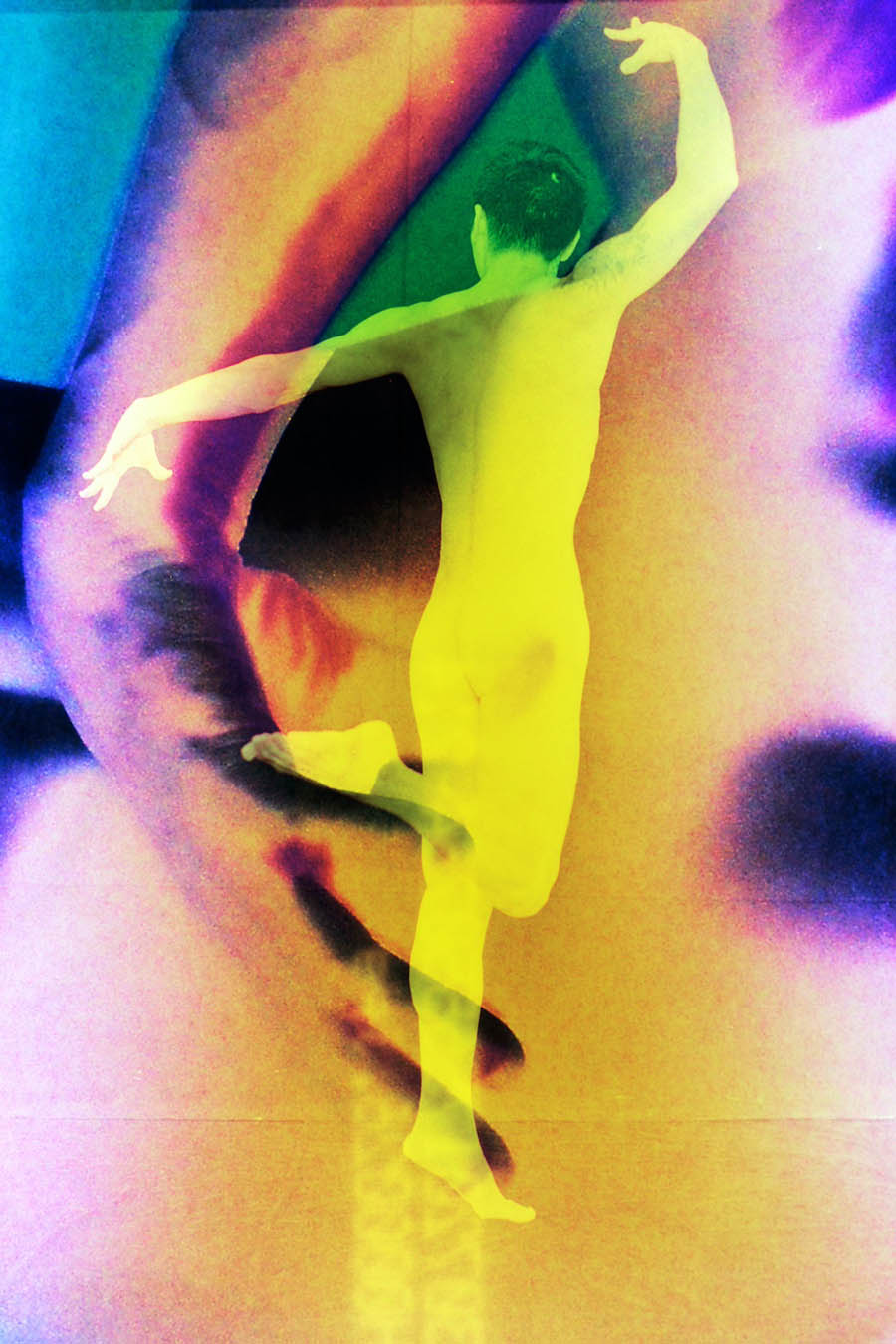
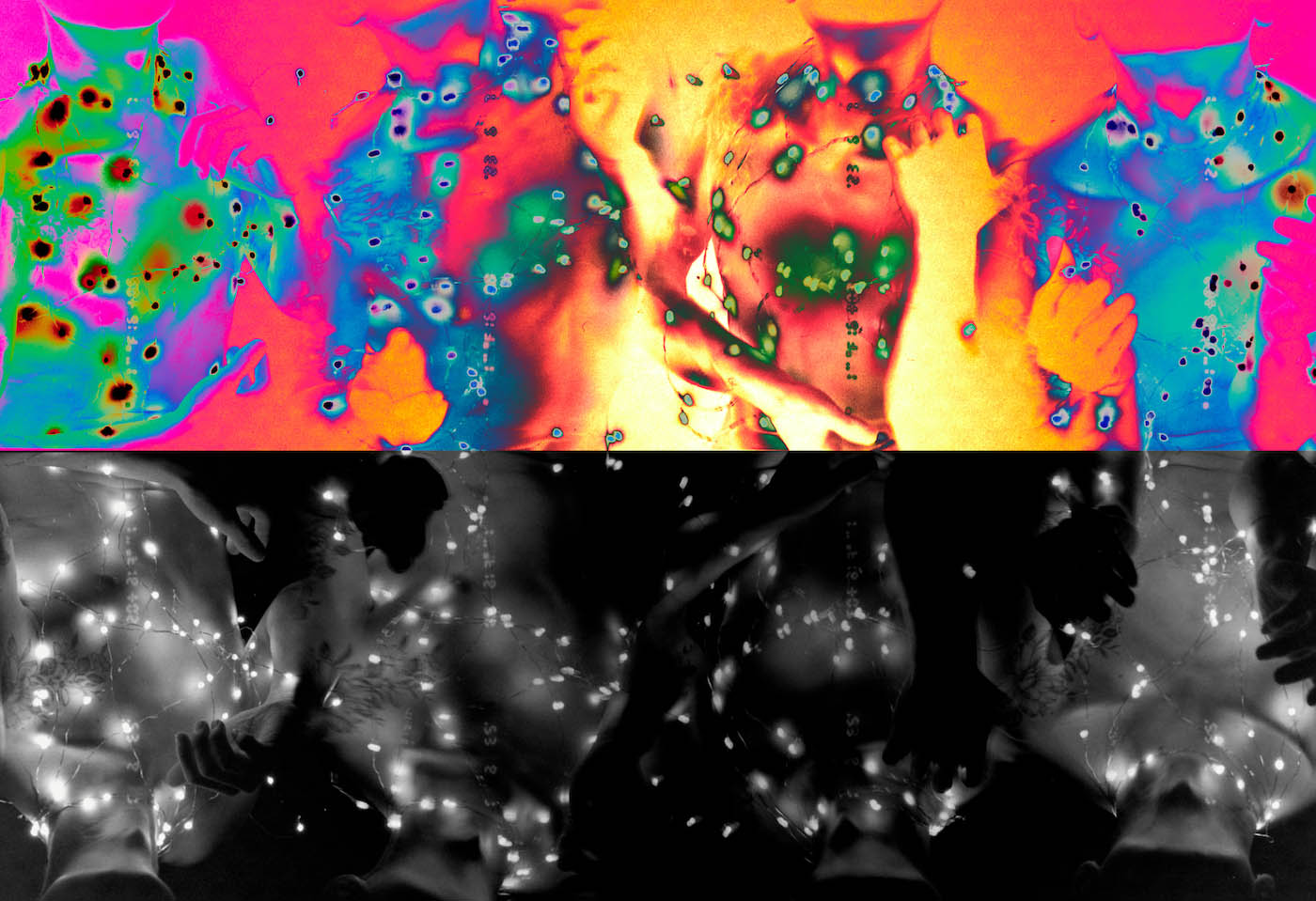
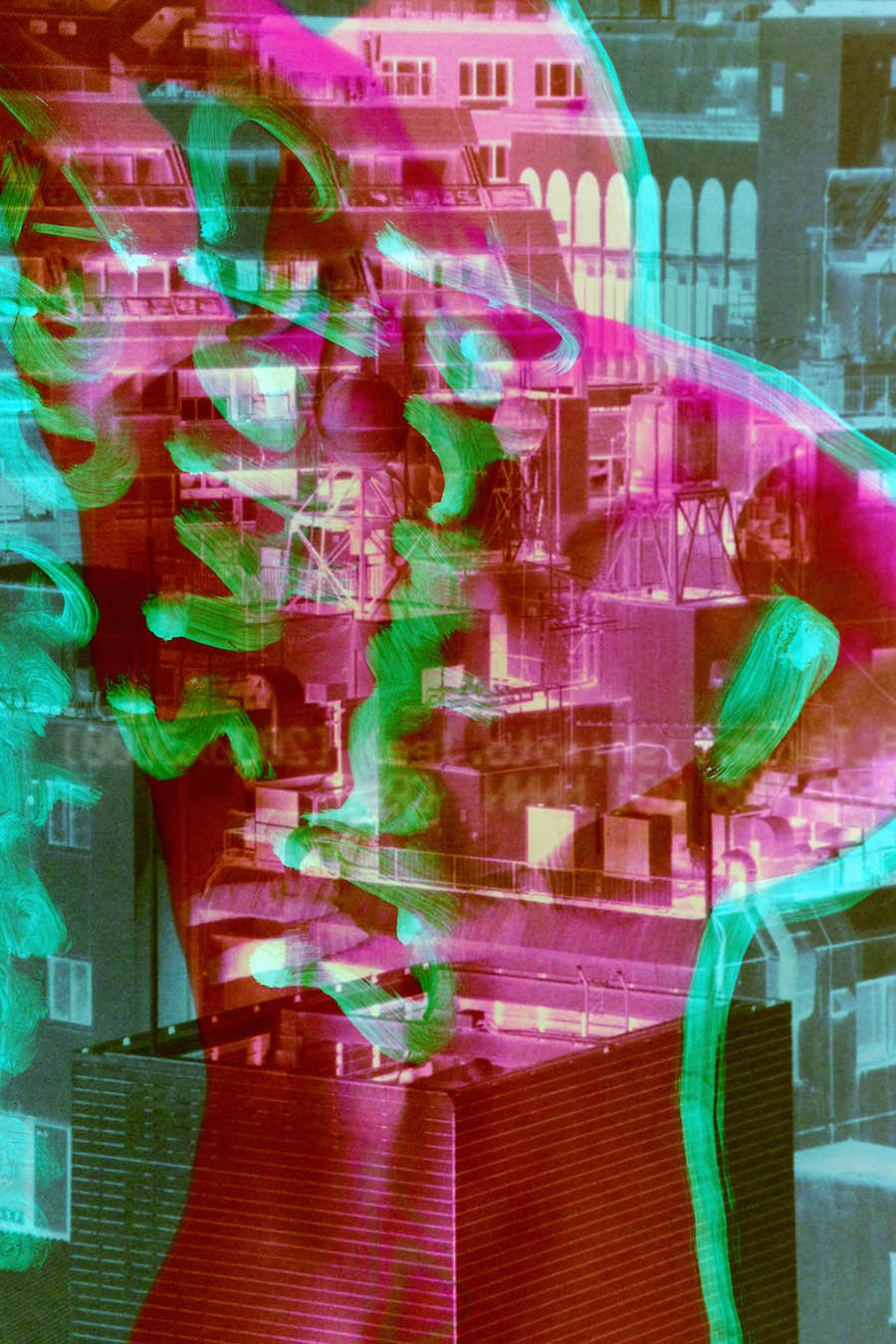
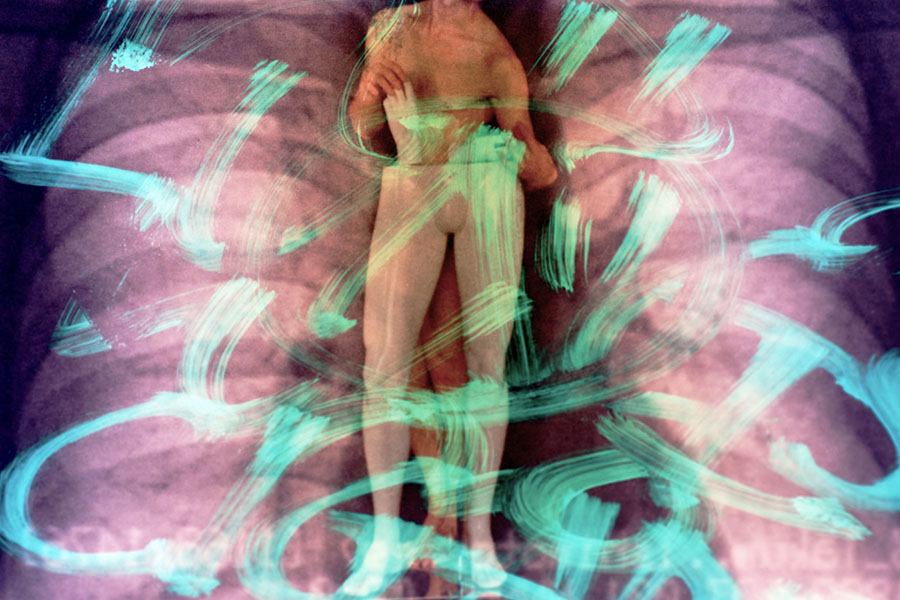
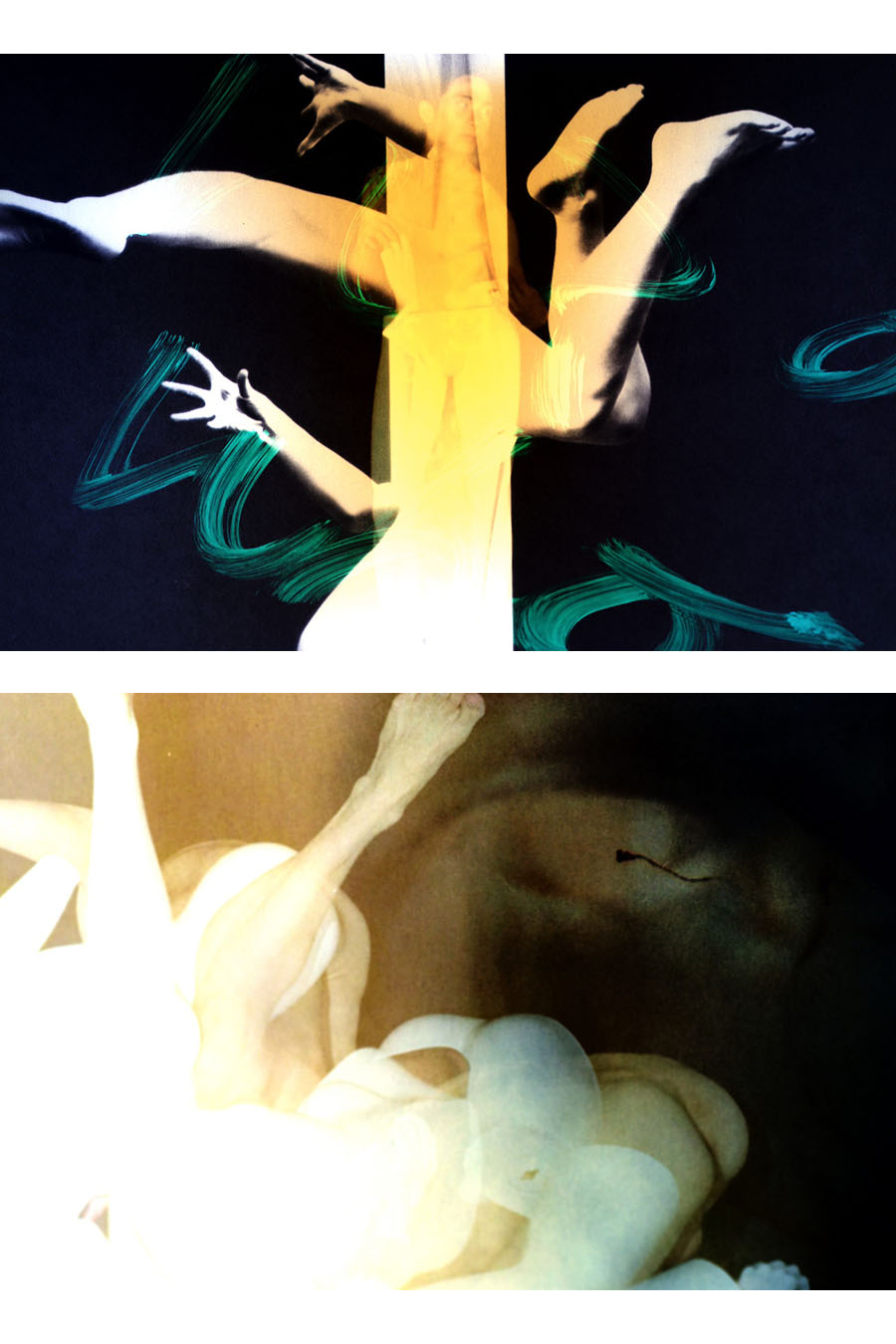
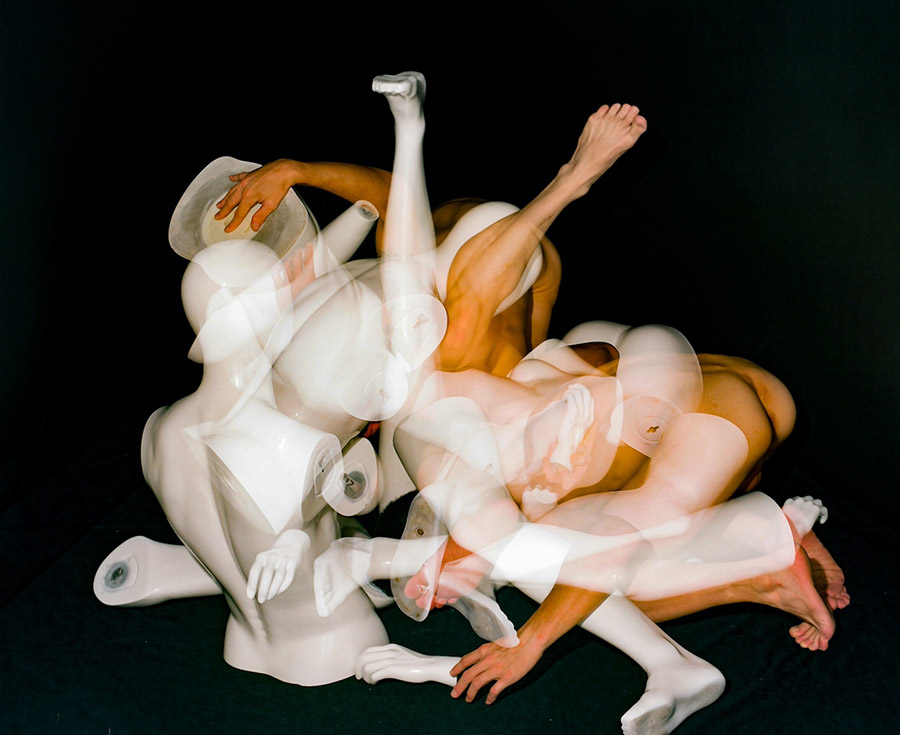
Photographer: Takumi Kishimoto (@1212_tkm_apm), Taiga Kawano (@taiga.kawano)
Director & Model: Takumi Kishimoto
Amanda Louise Macchia Brings Her Fashion-Heavy Pop Art to Milan
Amanda Louise Macchia Brings Her Fashion-Heavy Pop Art to Milan
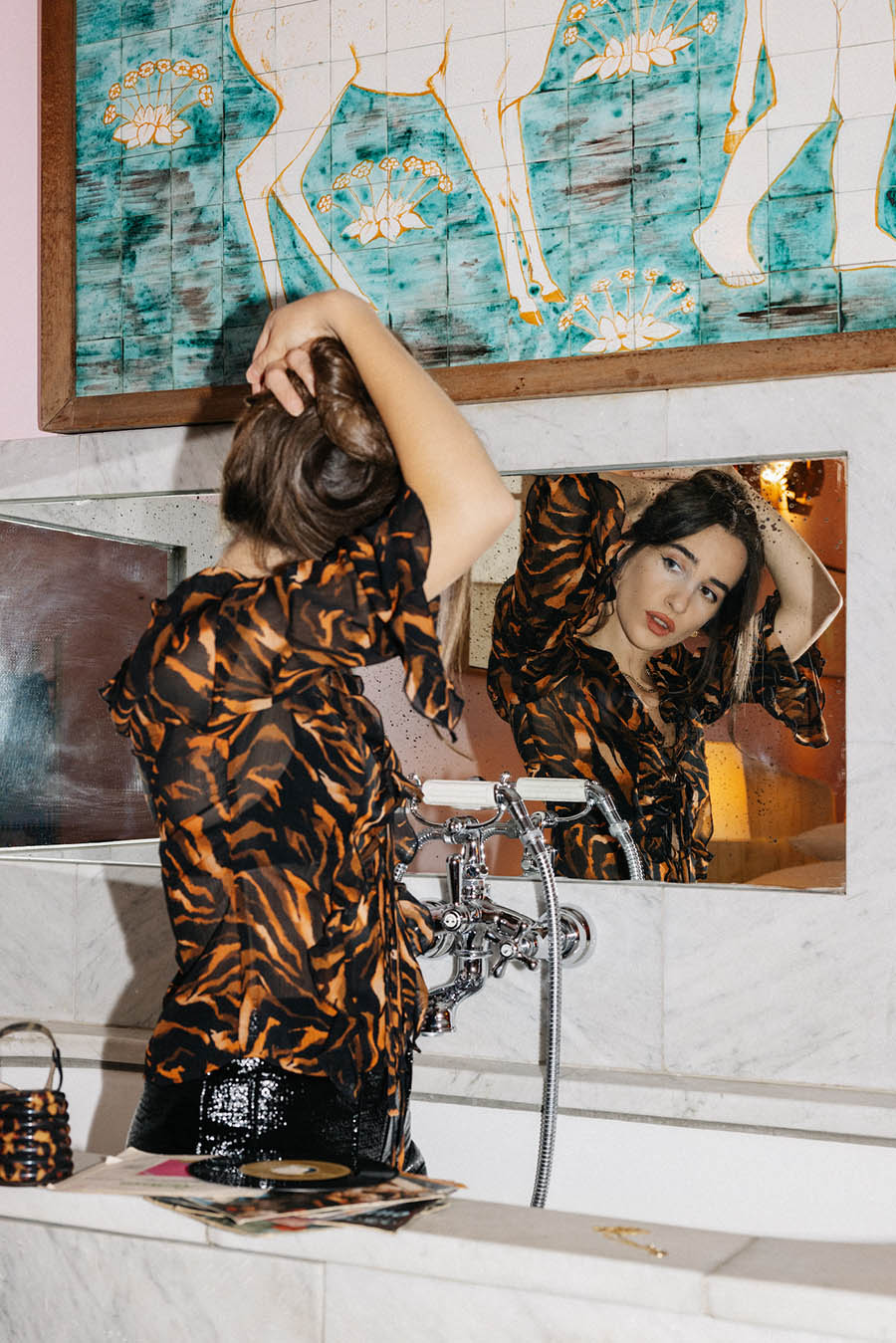
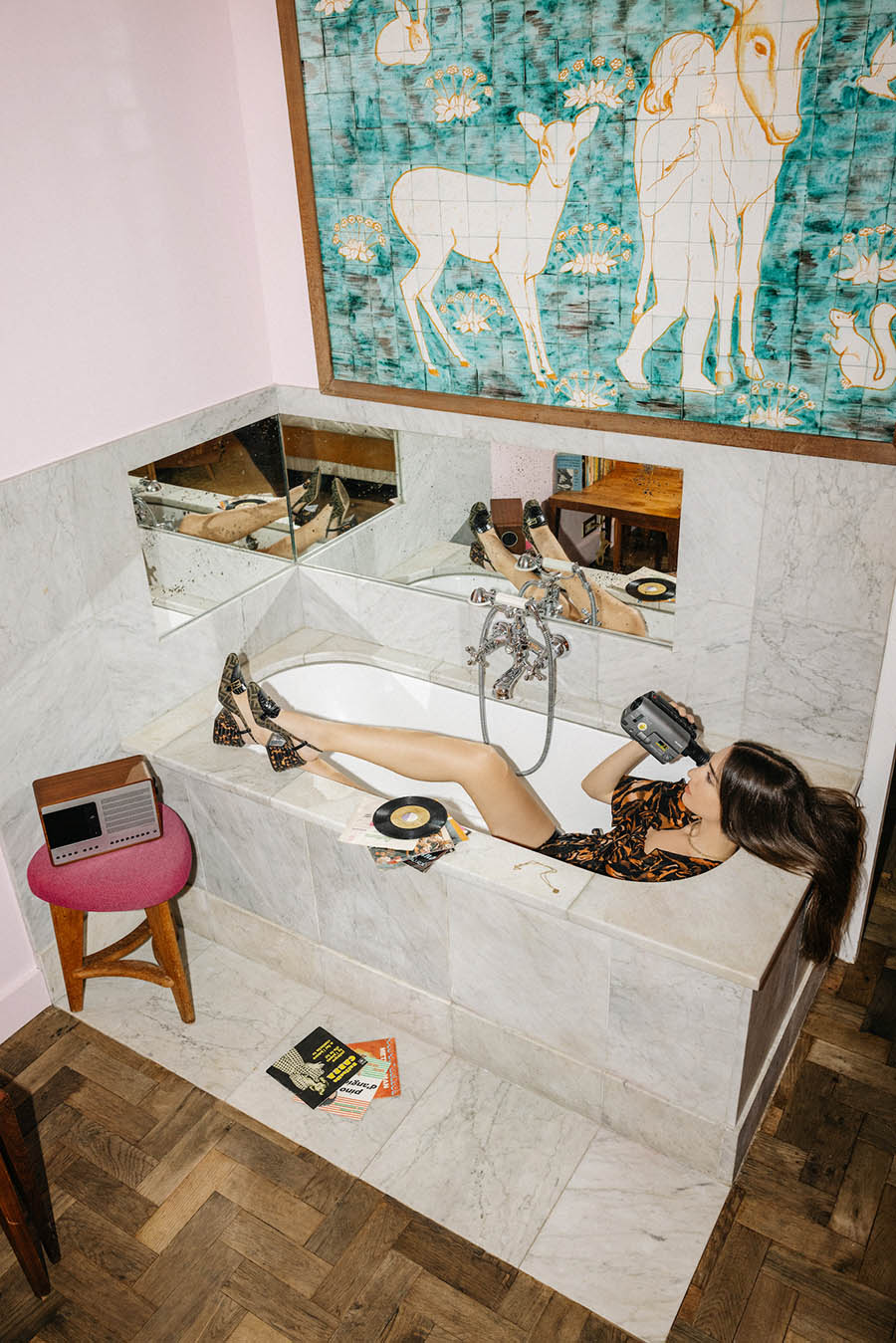
Amanda Louise Macchia © Dino Kužnik
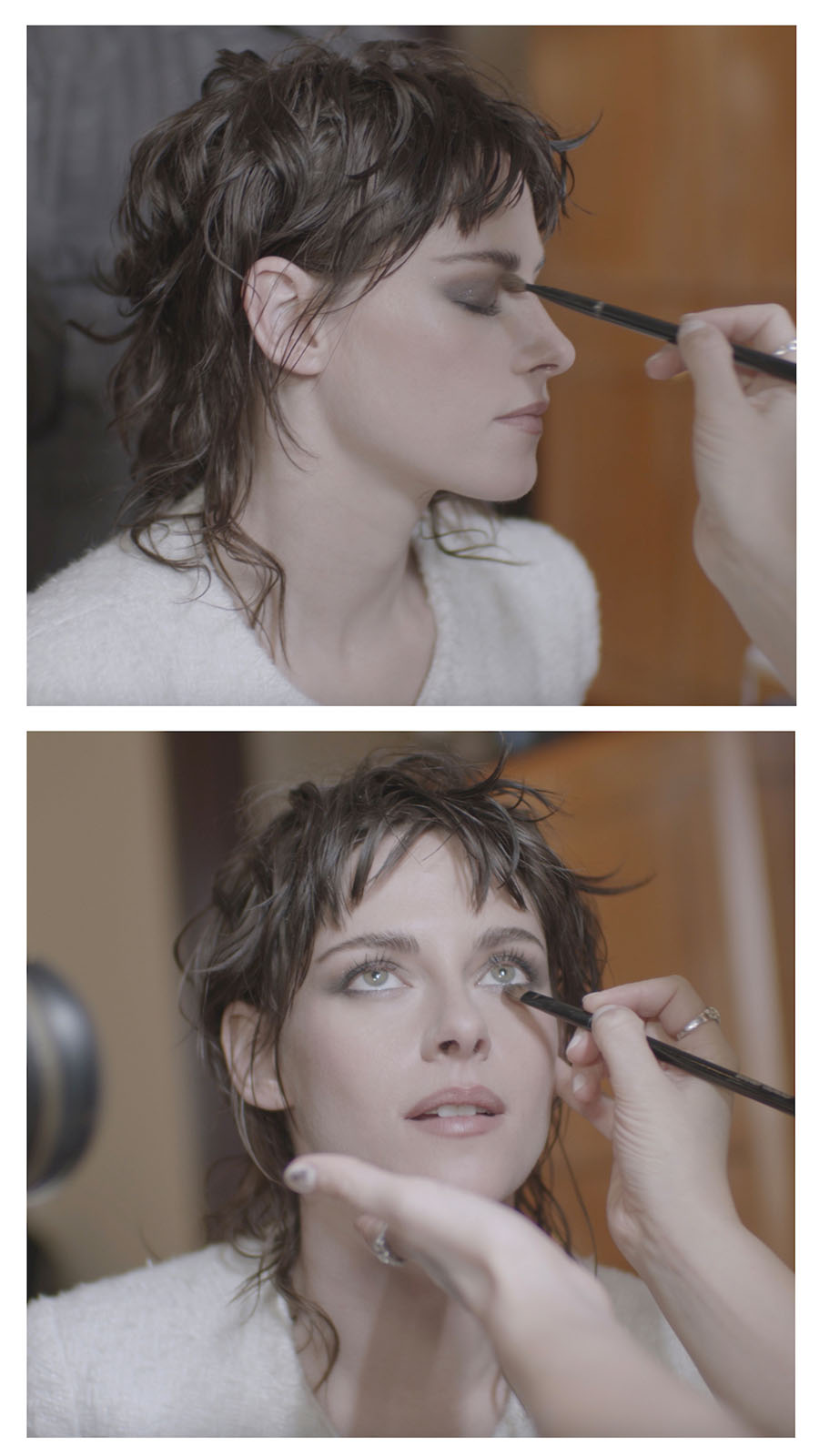
Kristen Stewart by Amanda Louise Macchia for Chanel Beauty
Amanda Louise Macchia is an emerging Italian-Canadian video director. After spending several years in the Paris fashion scene, she is now partially relocating to Milan for the first time, bringing a portfolio of high fashion and beauty videos with her.
Known for her retro pop art style, Amanda has developed new ways of digitizing mid-century ideas, by integrating stills into moving images using collage, instant film, and even regular office supplies, alongside her vintage video cameras, into creative content for luxury brands including Saint Laurent, Off-White, Audemars Piguet, and an on-going series with Chanel Beauty.
With Chanel Beauty, Amanda has profiled major talent including Margot Robbie, Lily-Rose Depp, and Kristen Stewart, the latter of which was just released in February 2024 alongside the Berlinale, with more content to come through the rest of the year around other prominent film festivals and award ceremonies.
The unique blend of high and low art in this work, which includes low-res photo scans and a handheld camcorder from the early 2000s, alongside standard beauty footage, has garnered the attraction of luxury brands globally, looking to recreate this careful and enticing balance.
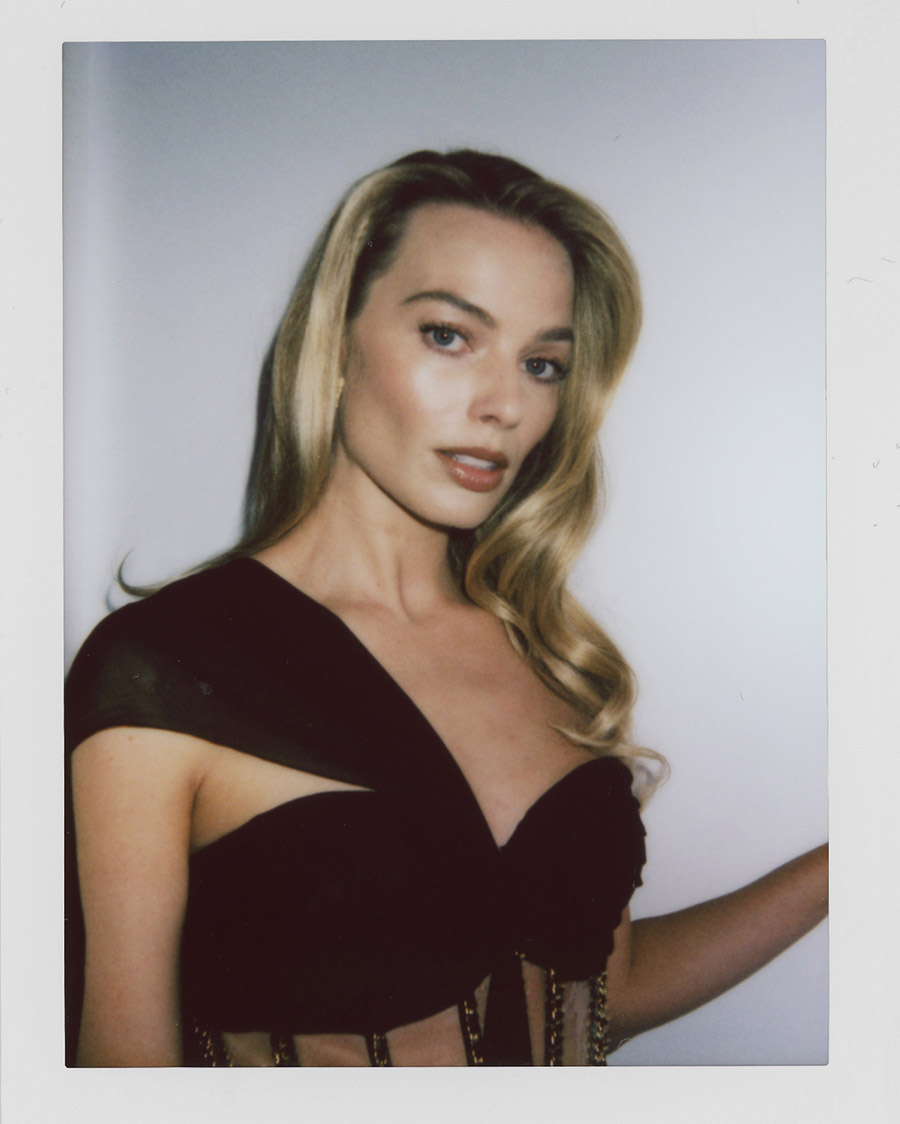
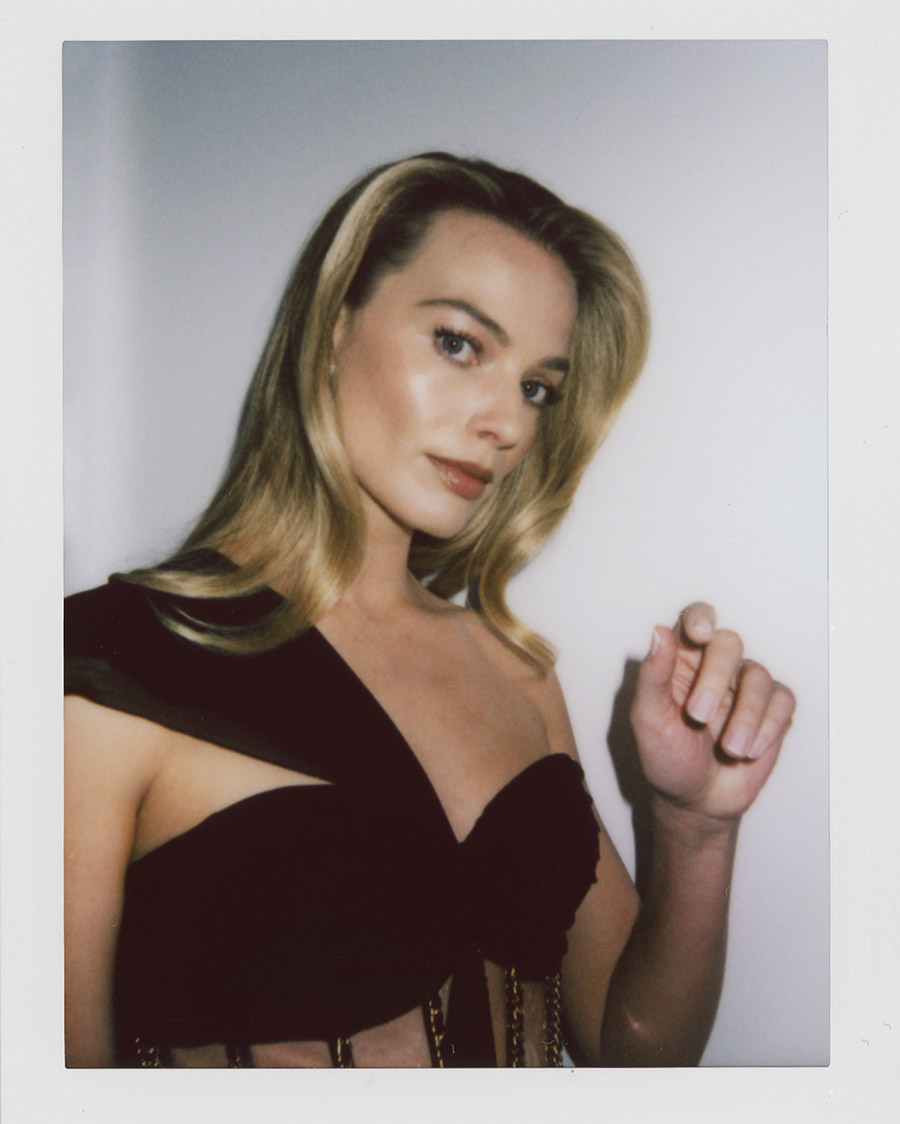
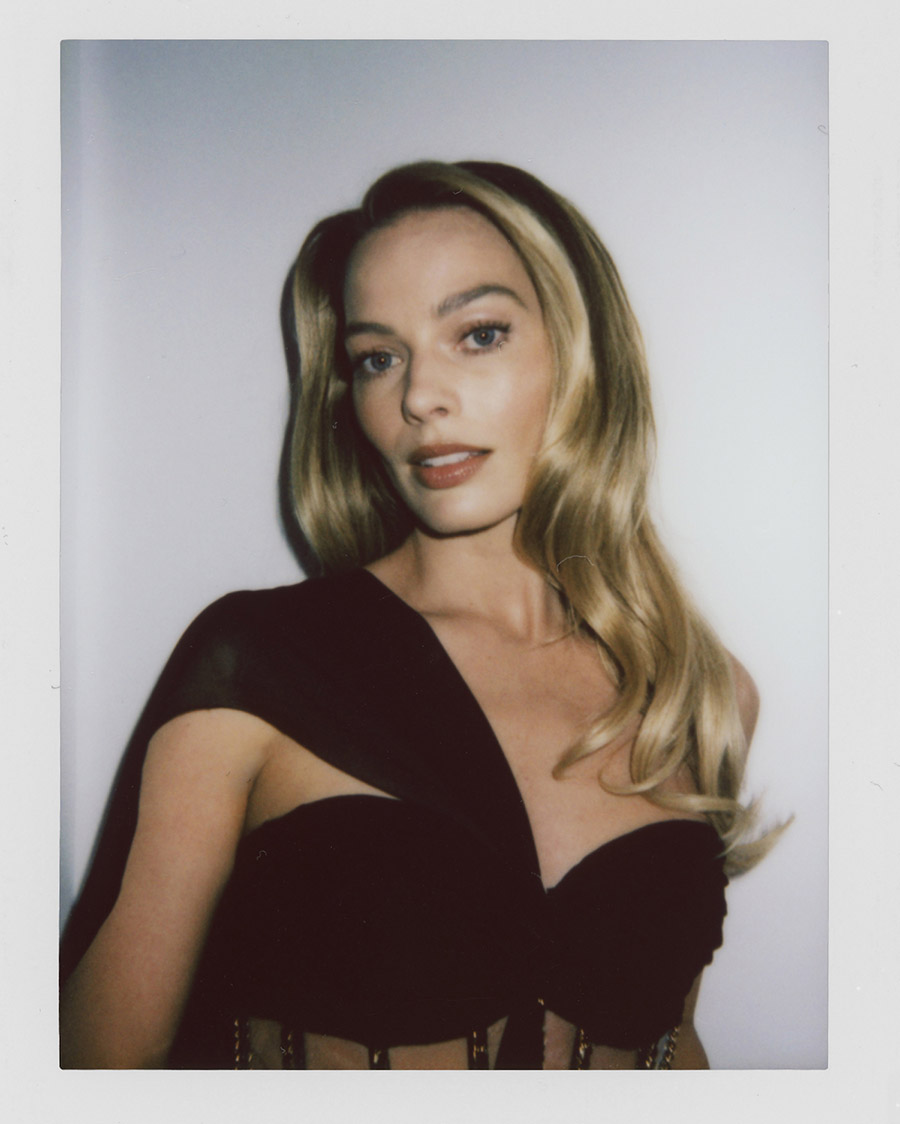
Margot Robbie by Amanda Louise Macchia for Chanel Beauty
Amanda’s style extends from her editorial work as well, having been published by Purple Magazine, System Magazine, & Vogue, where she first began experimenting with these pop art elements on set, the backstages of fashion shows, and in ateliers, with brands like Balenciaga, Givenchy, Paco Rabanne, and Schiaparelli.
But her first medium of video directing was in documentary, which she recently revisited with her latest personal project A Certain Song: Yes Sir, I Can Boogie – a short film documenting the history of the famous Spanish disco song through capturing the 1970s press clippings, magazine features, and personal photos of founding member Mayte Mateos. The film is an Official Selection for the upcoming 2024 Fashion Film Festival Amsterdam, taking place in April.
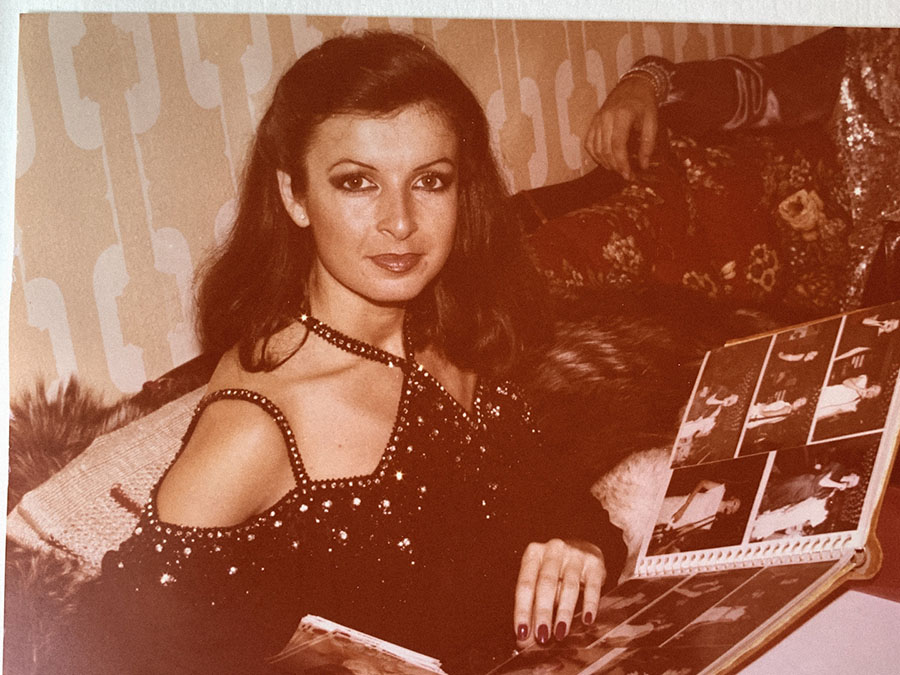
Amanda Louise Macchia’s documentary about Baccara, A Certain Song: Yes Sir, I Can Boogie
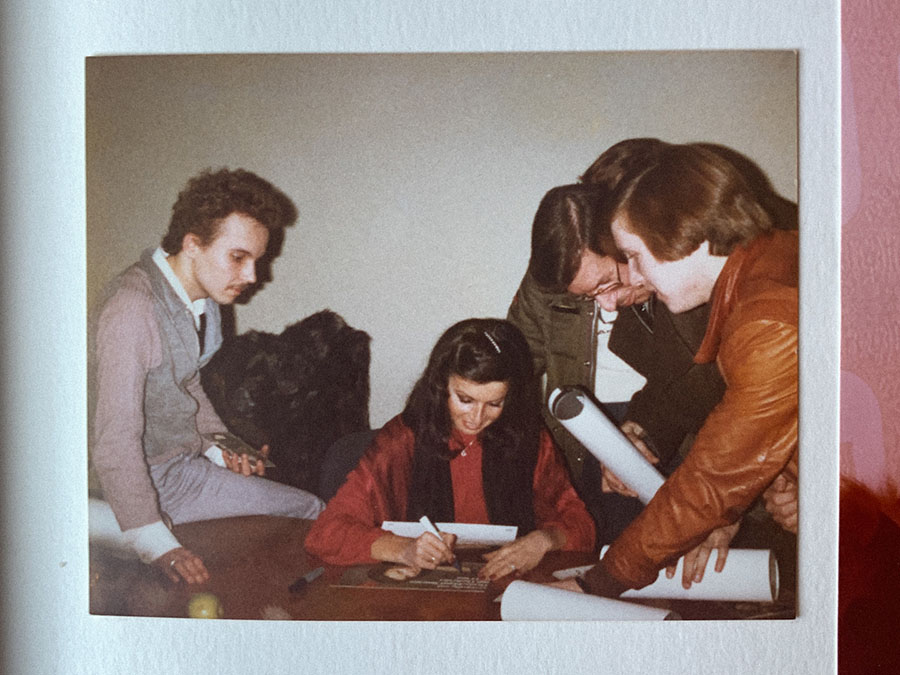
Amanda Louise Macchia’s documentary about Baccara, A Certain Song: Yes Sir, I Can Boogie
The history of the song Yes Sir, I Can Boogie is noteworthy because it continues to dominate the fashion world 45 years after its initial release and entry into the Guinness Book of World Records, for most singles sold by a female duo.
Amanda applied her signature pop art style to this collage-focused film, and shares the journey of a song created with few expectations, but which has become not only a top staple of European disco, but also synonymous with iconic fashion and beauty brands including Dior, Paco Rabanne, and Charlotte Tilbury – some of which Amanda is becoming synonymous with herself.
Octavi Serra / Studio
Octavi Serra / Studio
Photographer | Vitalik Melnikov
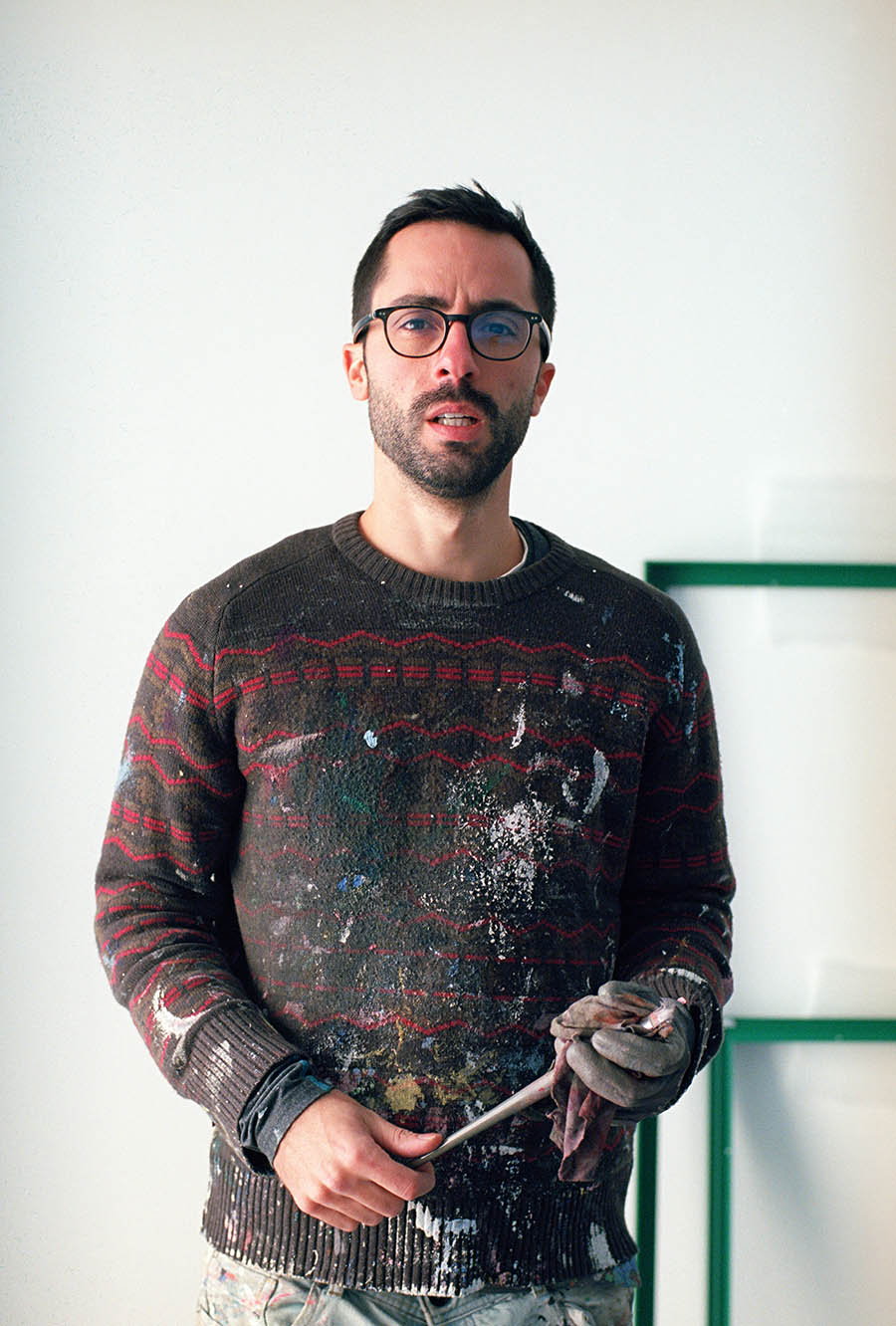
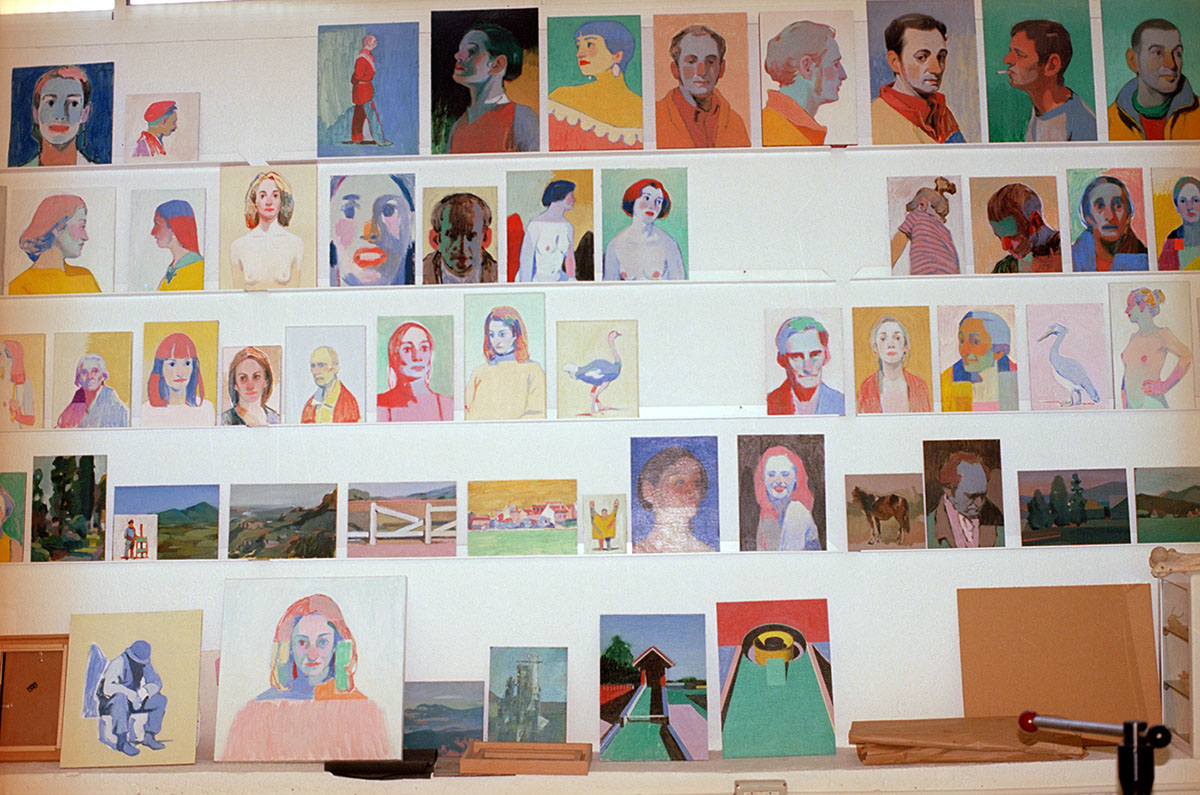
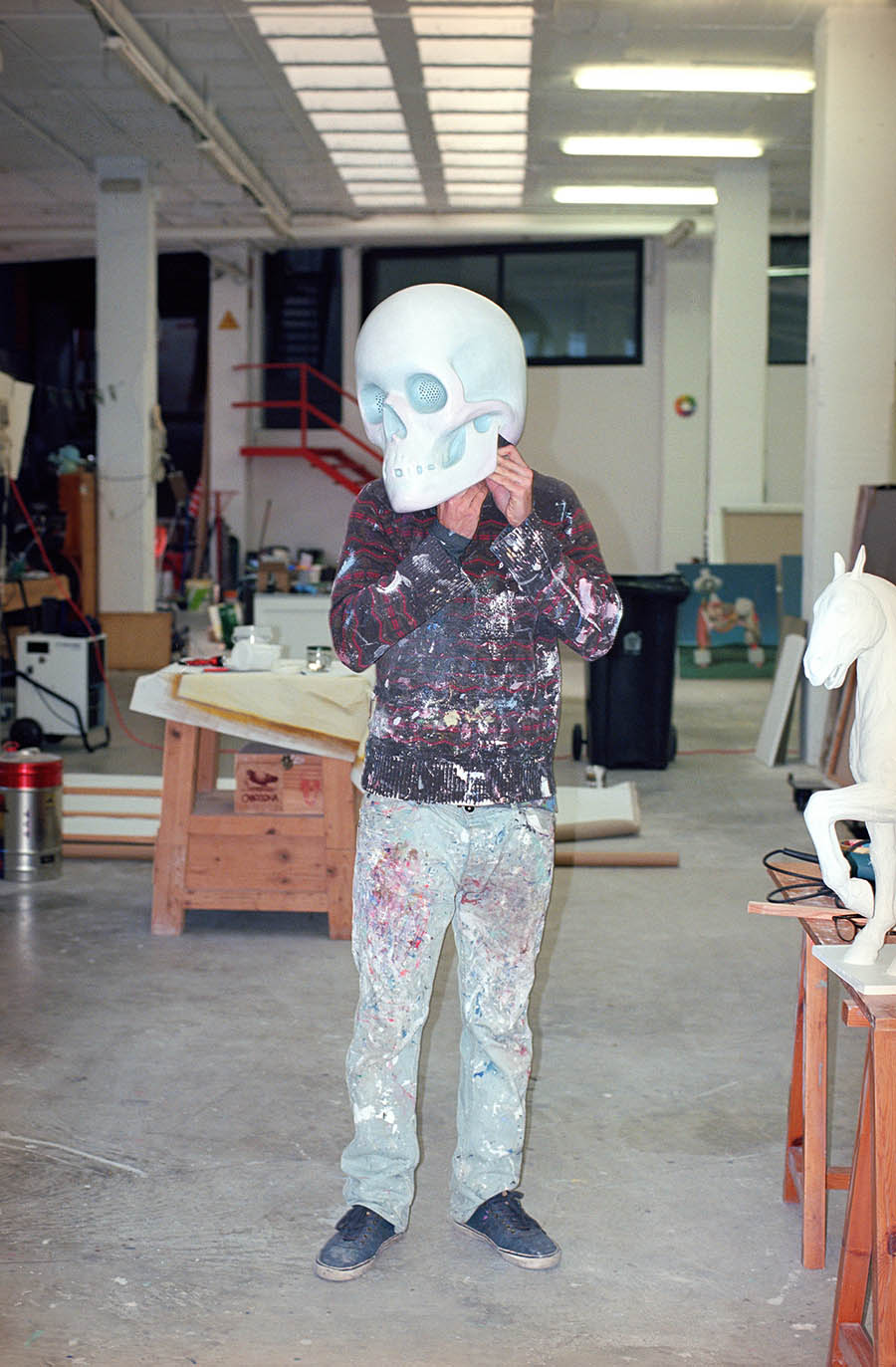
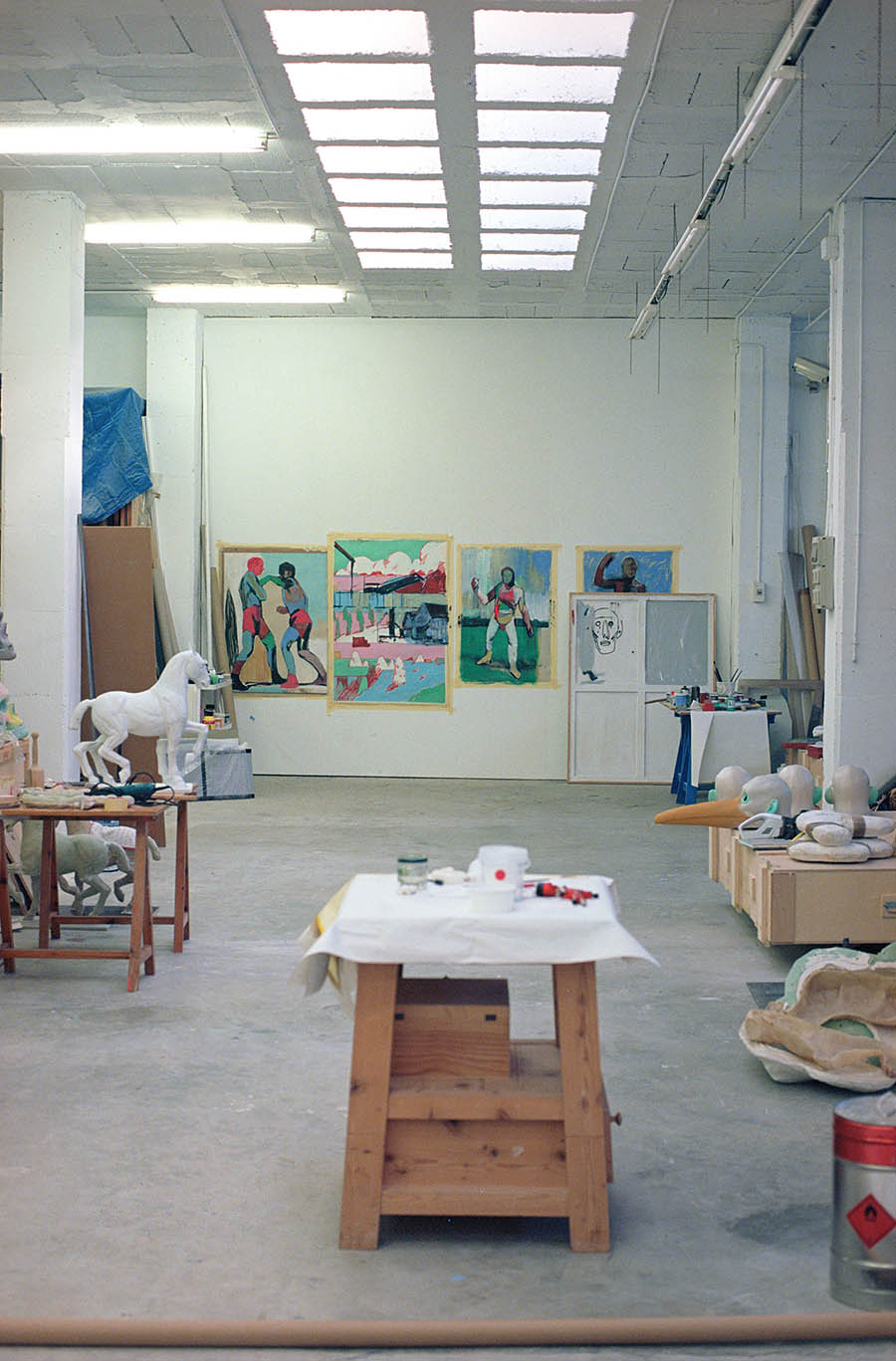

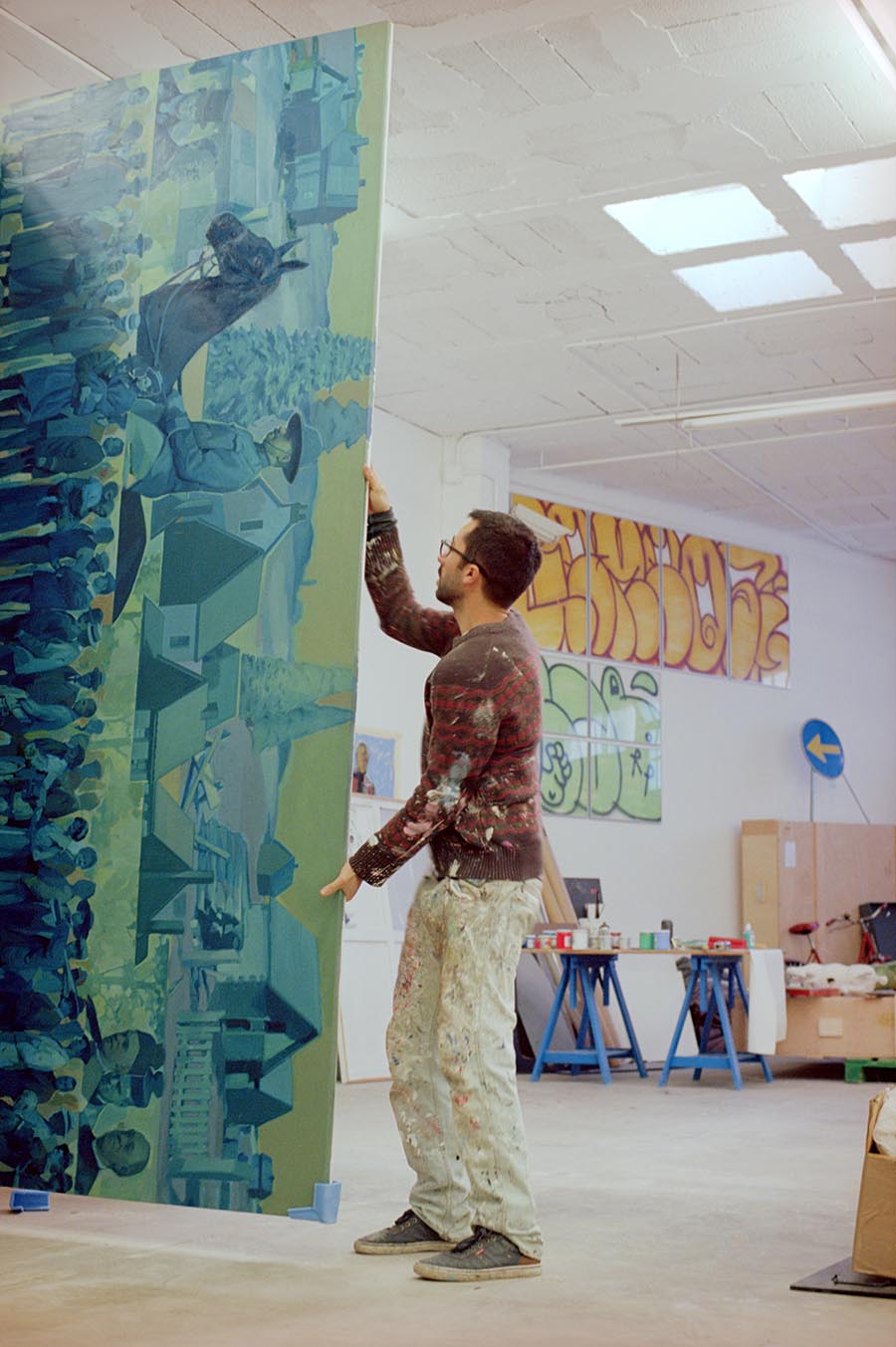
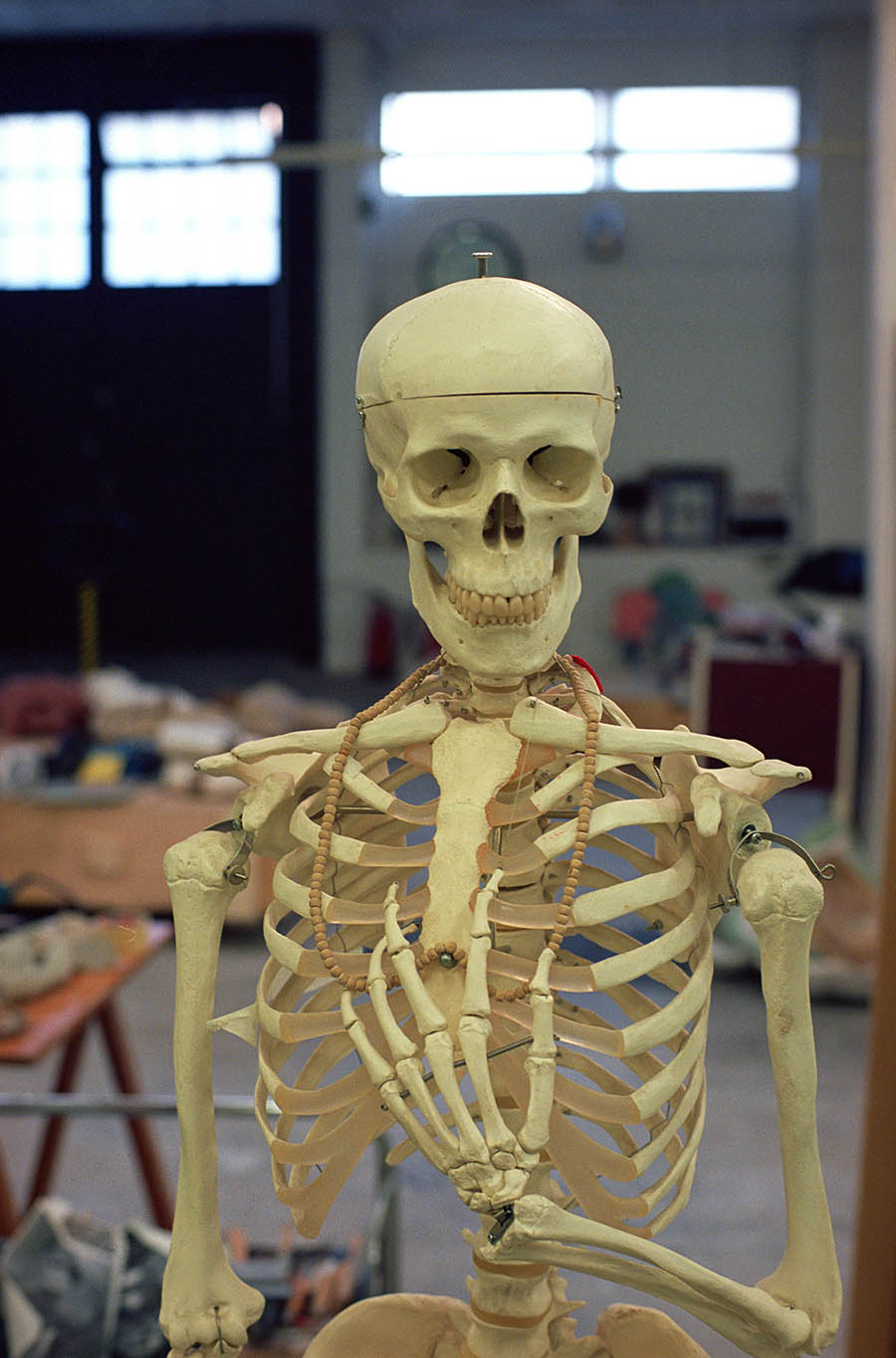


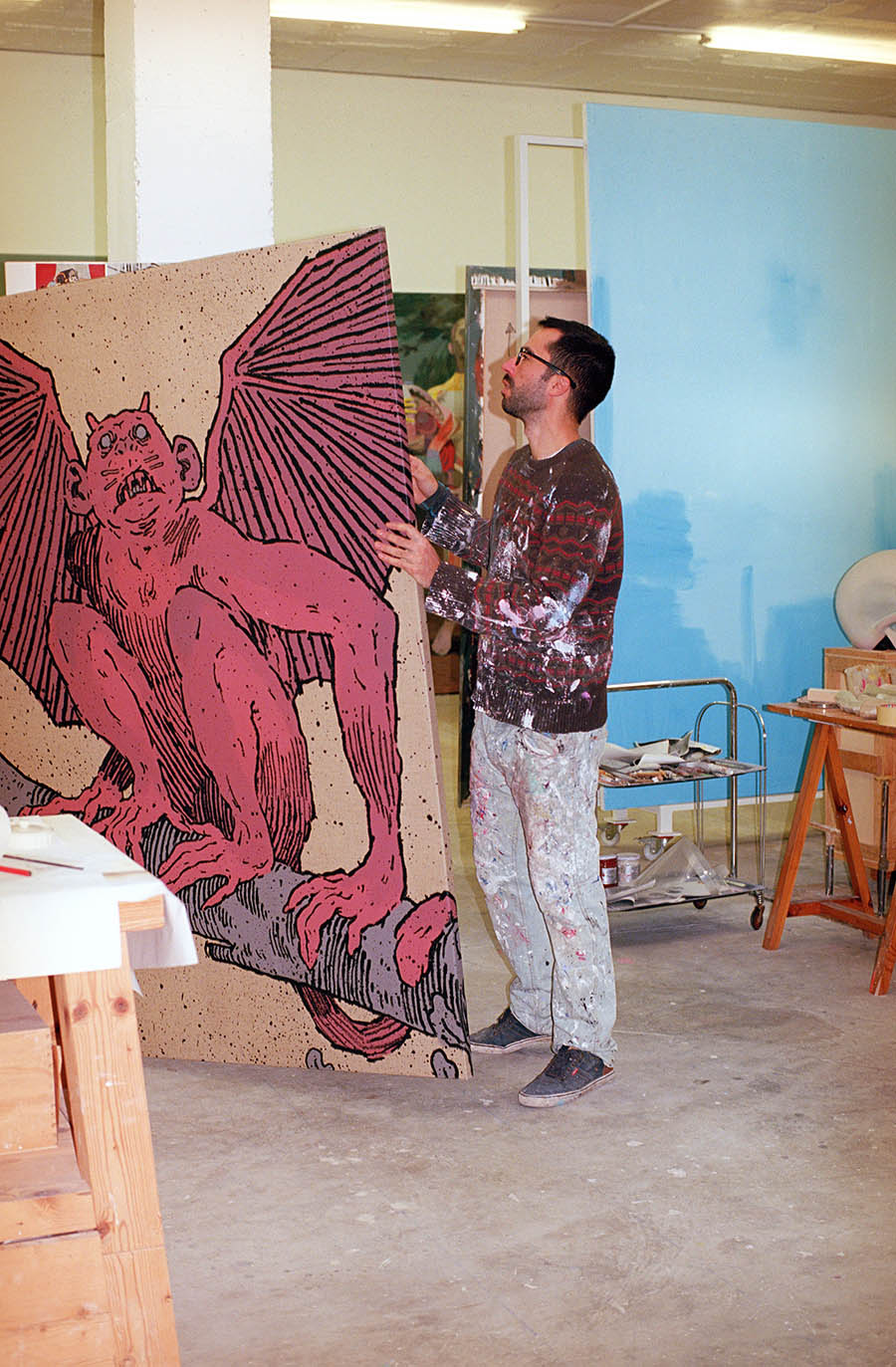
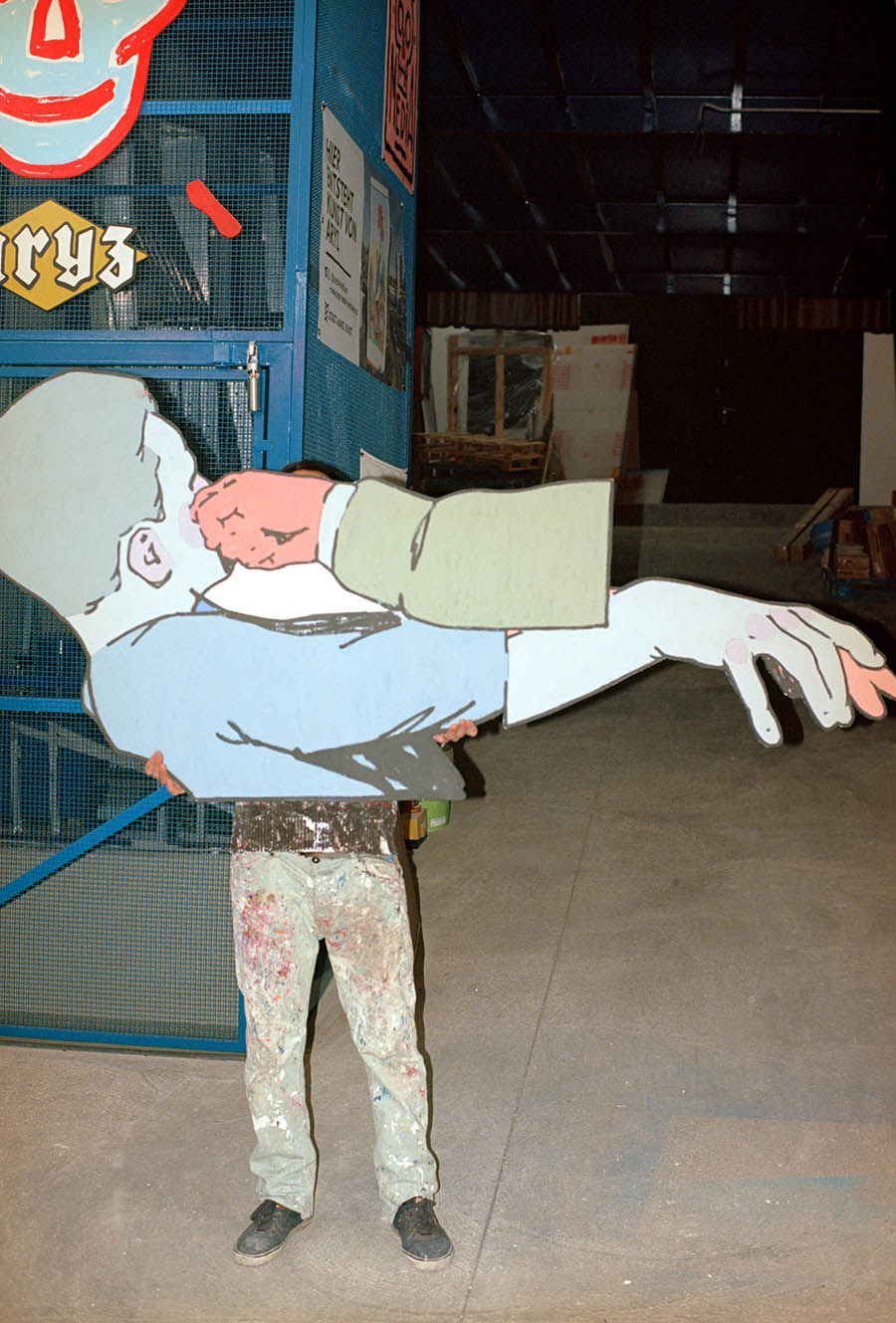
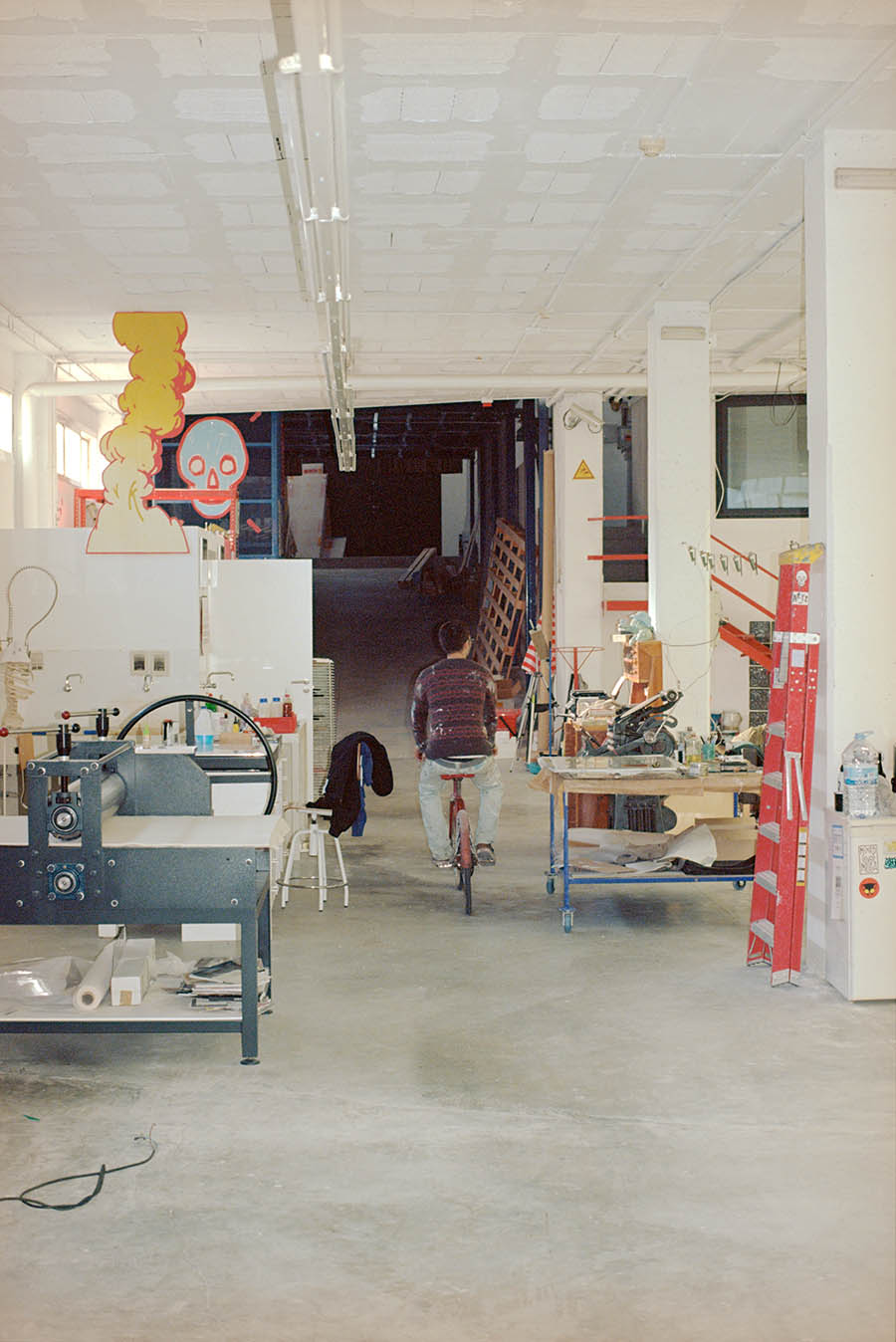
Photographer: Vitalik Melnikov (@vitalikmelnikov_)
Artist & Protagonist: Octavi Serra (@ooss_ooss_ooss)
Corporeal
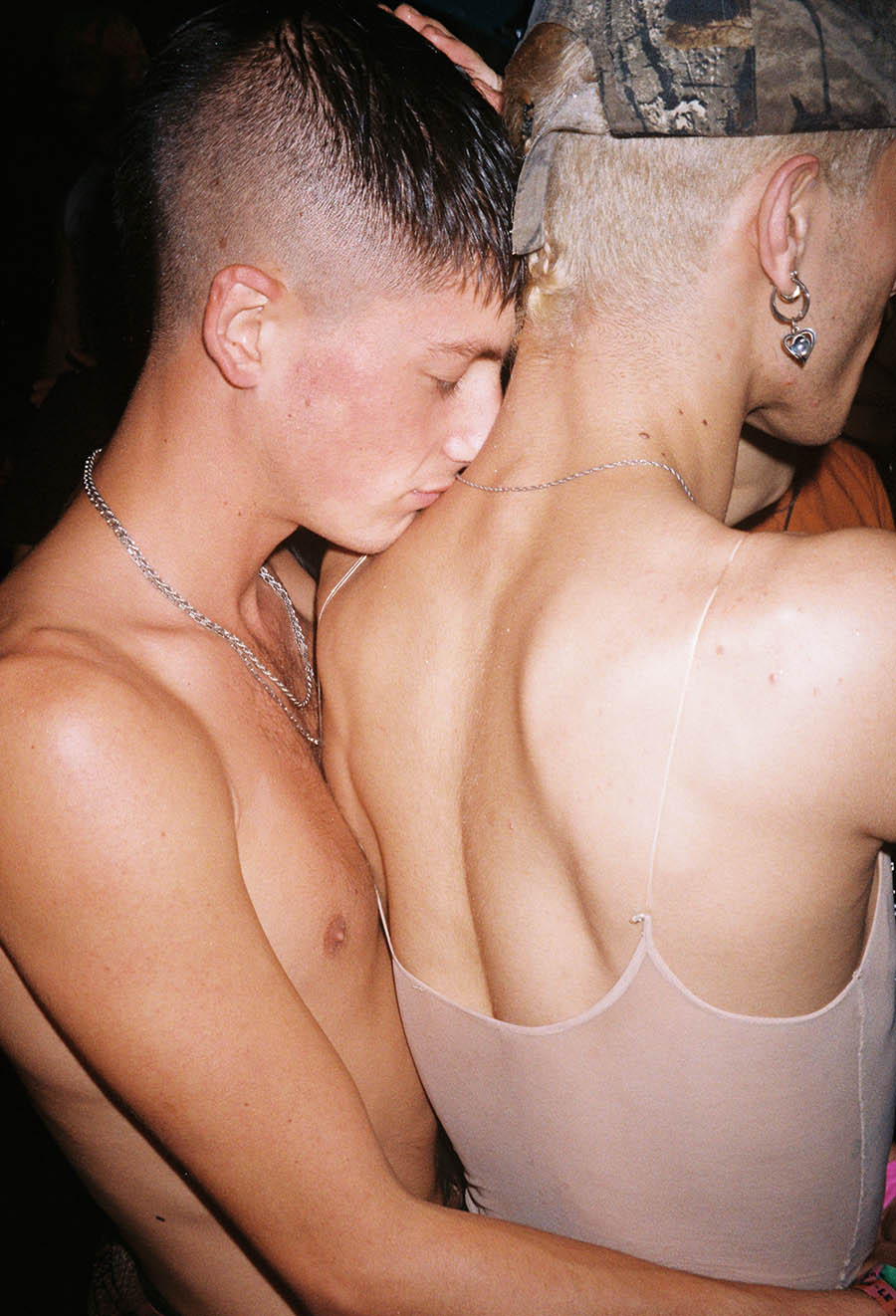
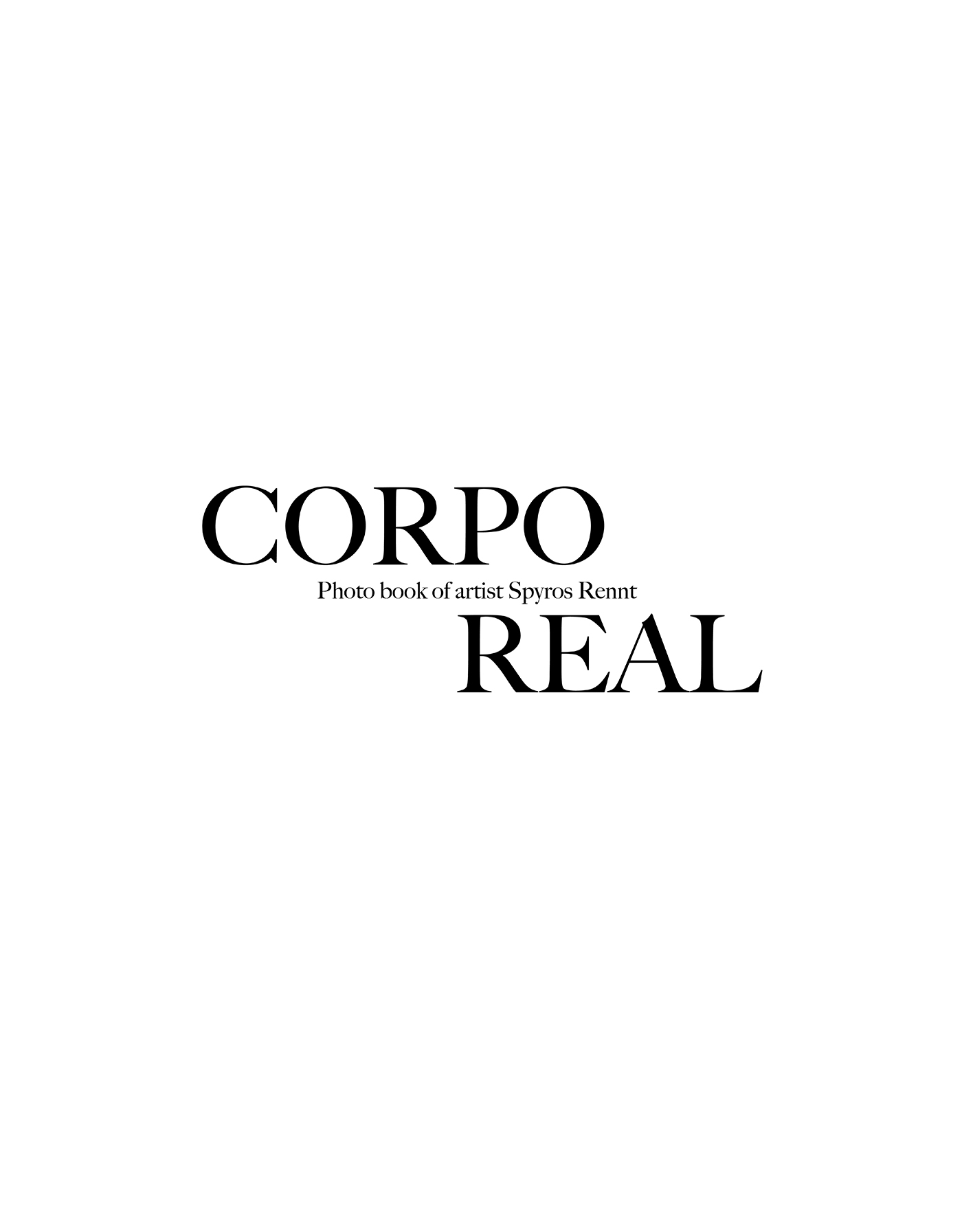
Berlin-based Greek artist Spyros Rennt is launching his new book “Corporeal”. As Rennt’s third self-published book, “Corporeal” features 150 new photographs from experiences and observations of different communities. On the queer community, the underground club scene and sometimes intertwined; the observation Rennt made is not from an outsider perspective, but as a part of these groups. The content of the images is personal and ranges from tender to raw, and sometime humor can also be seen. The relationships he recorded are in the public sphere as well as in private: on club dance floors and in bedrooms, on beaches and in hotel rooms.
On the occasion of his book launch, which will take place in Milan’s LGBT-specialized bookstore Libreria Antigone on July 13th, 2023, CAP 74024 invites Spyros Rennt for a talk, sharing stories about his creativity life in Berlin, the inspiration behind his photography, and his perspective on the relationship between intimacy and human bodies.
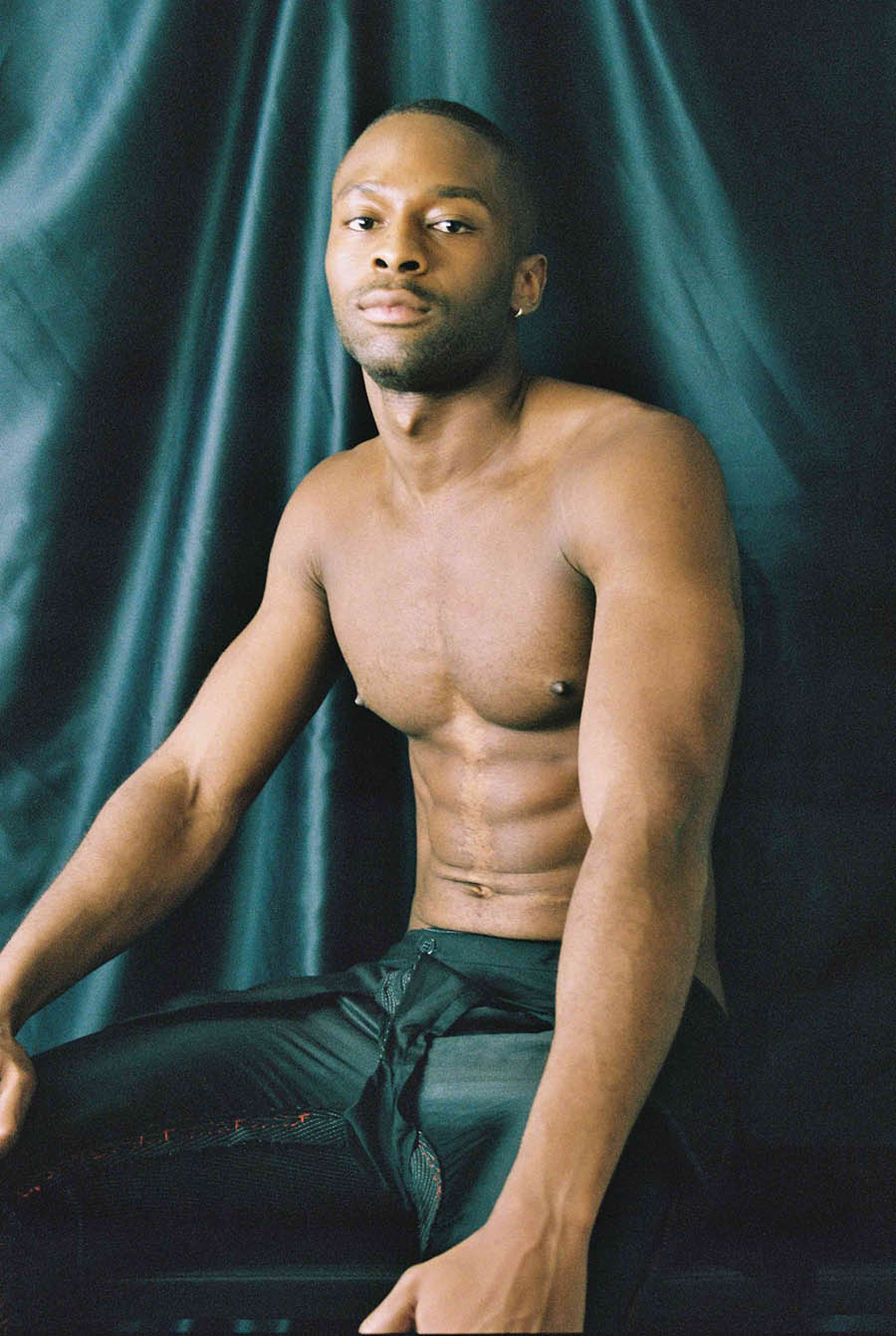
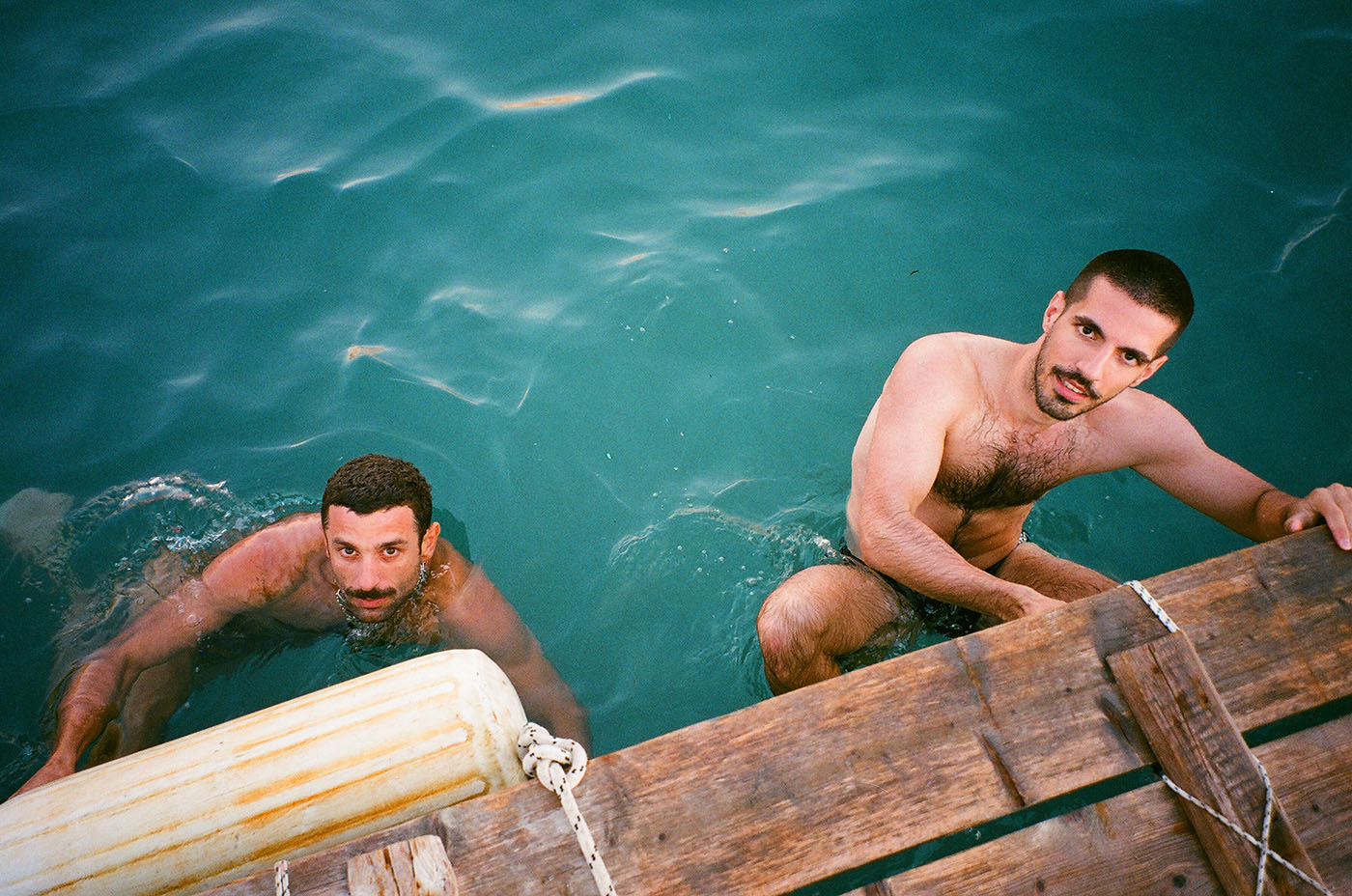
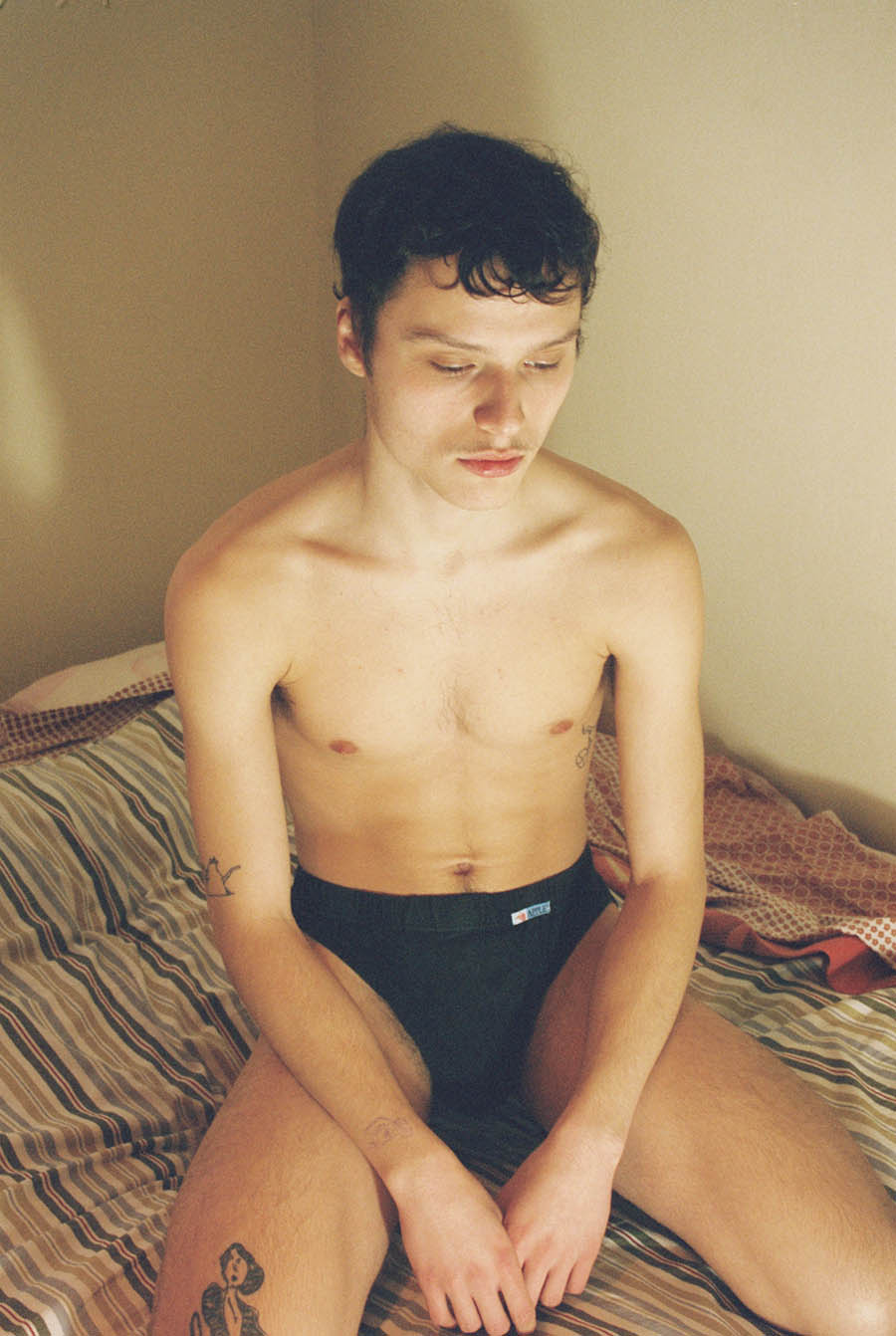
Hi Spyros, how are you?
Exhausted but happy, as I am preparing for the Milan launch of my new book Corporeal! It’s full on summer (finally!) in Berlin, it’s bright until 10pm, friends from abroad are visiting and at the same time it’s a busy time between commissions and promoting the book. But Berlin summer is usually like that, hot, ecstatic and sticky!
Tell us a bit about the project “Corporeal”
It’s my third book of photos, covering the period from 2020 to early 2023. Intimacy, community, erotica, underground spaces are themes and concepts explored in the book intertwined with each other.
How long have you been based in Berlin?
I moved here in the start of the summer of 2011 – it’s crazy to think I’ve been here so long, watching the city (and myself with it) change the way it has, but I wouldn’t change my experiences for anything!
What do you think about Berlin? What has Berlin inspired you?
I don’t think I would have become a photographer had I not been living here. I moved here with an engineering degree, but that was clearly not meant to be. I figured out I wanted to be doing something creative and photography was somehow calling me. All this would not be possible if I was not exposed to a Berlin way of living in a city that used to be much more affordable than today, which gave people a chance to experiment without worrying too much about making ends meet. On top of that, you could meet a lot of like-minded people, which was in itself inspiring.
Body is a prominent subject in your work, why do you choose them as the main subject to shoot? What is the relationship between human bodies, your aesthetics and your photography?
I would say that the body is just one of my interests, photographically speaking. My new book tells various stories and the focus falls on various themes.
Intimacy, parties and revels are often seen in your work. What is the charm of these moments that make you want to capture?
I think that it’s important to say that this documentation is coming from the perspective of a queer person. I document my own experiences, but at the same time I am capturing a community and an era. The queer community and our way of life exists on a different plane often unseen from the mainstream world – with my work I aim to contribute to its visibility and also create a record of its existence for future generations.
According to curator Maia Kenney, hands are the first things she notices when she sees your photography. What about you? Which body parts will observe the first when looking at a human body?
I don’t think there’s a certain body part that I will look for in every person I meet, but some features that can fascinate me are the eyes, the eyebrows, the arms and the lips.
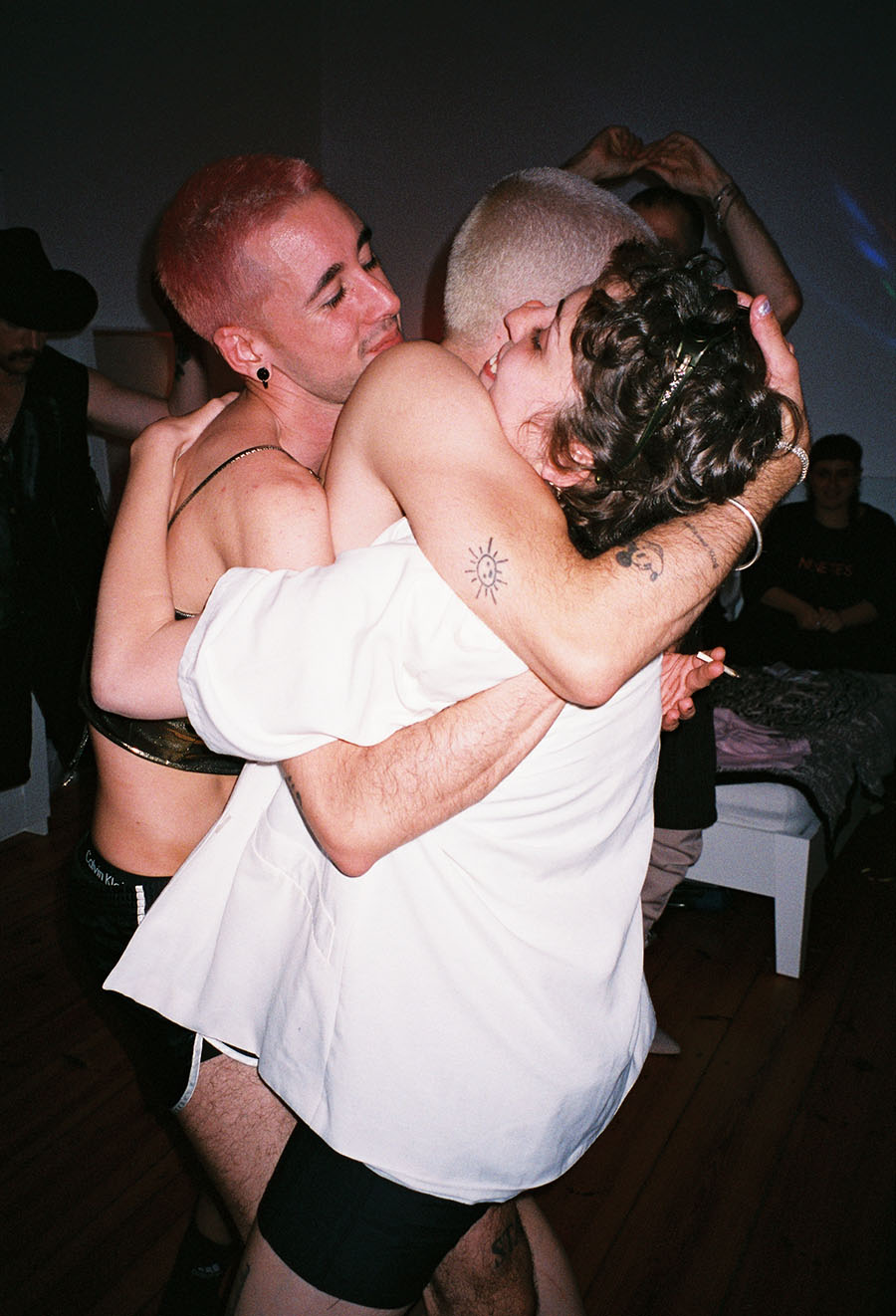
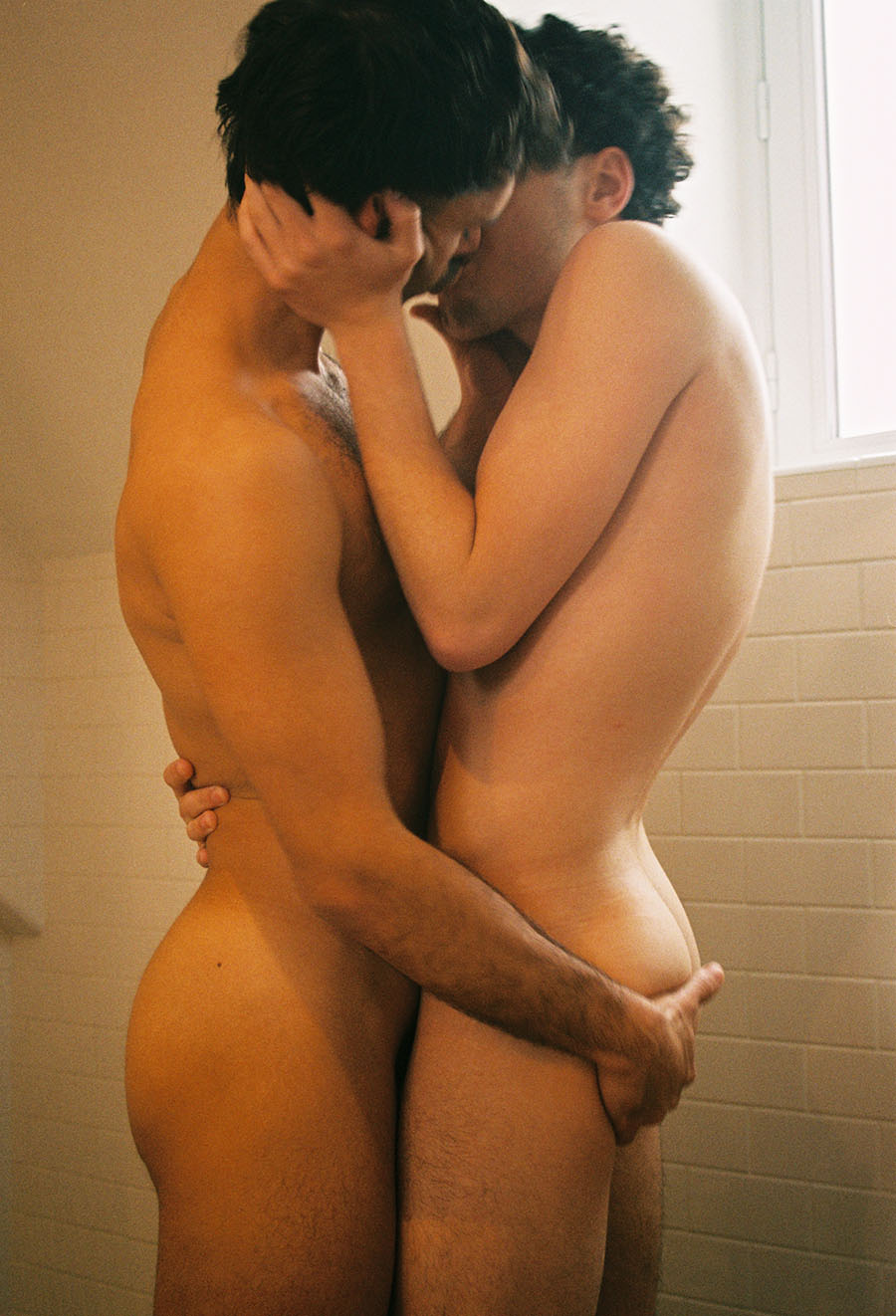
Berlin is known for the “Freikörperkultur (Naturism)”, and we can see some naked bodies in your pictures. What is nudity to you? Are they an important element in your creation?
I like photographing nudity, because I love the way our bodies look and it’s also beautiful seeing multiple naked bodies interact with each other on film – but I have grown into appreciating fashion as well
We also saw a lot of queer intimacy in your pictures. As one of the most welcoming and eclectic cities in Europe, Berlin is very acceptive to the queer community. What are your observations of the Berlin queer community? Why do you want to incorporate them into your photo series?
I have been documenting Berlin queer life since I started photography, around 2017 – because there’s nothing quite like it and I wanted to share my experiences with the world. The community can be hedonistic but also nurturing. I am grateful for the people who surround me, as they are a constant source of inspiration.
You are also in some of the photographs (if we didn’t mistake you with others) right? What is it like to bring yourself from the person who takes the photo to the person in front of the camera?
I think that if I’m going to be documenting people in intimate moments, it’s only fair to include myself in the mix as well! I am present in 3 images in the book and I selected these images because they fit well in the overall assortment of images.
What are your future projects and plans?
At the moment I am still very much focused on the promotion of the book and making the most out of Berlin summer, but interesting commissions are always showing up for me so I can never really complain. Will probably show up at the fashion weeks again in September – I skipped June’s shows because they coincided with Corporeal’s release but I’m ready for the fashion week craze again!
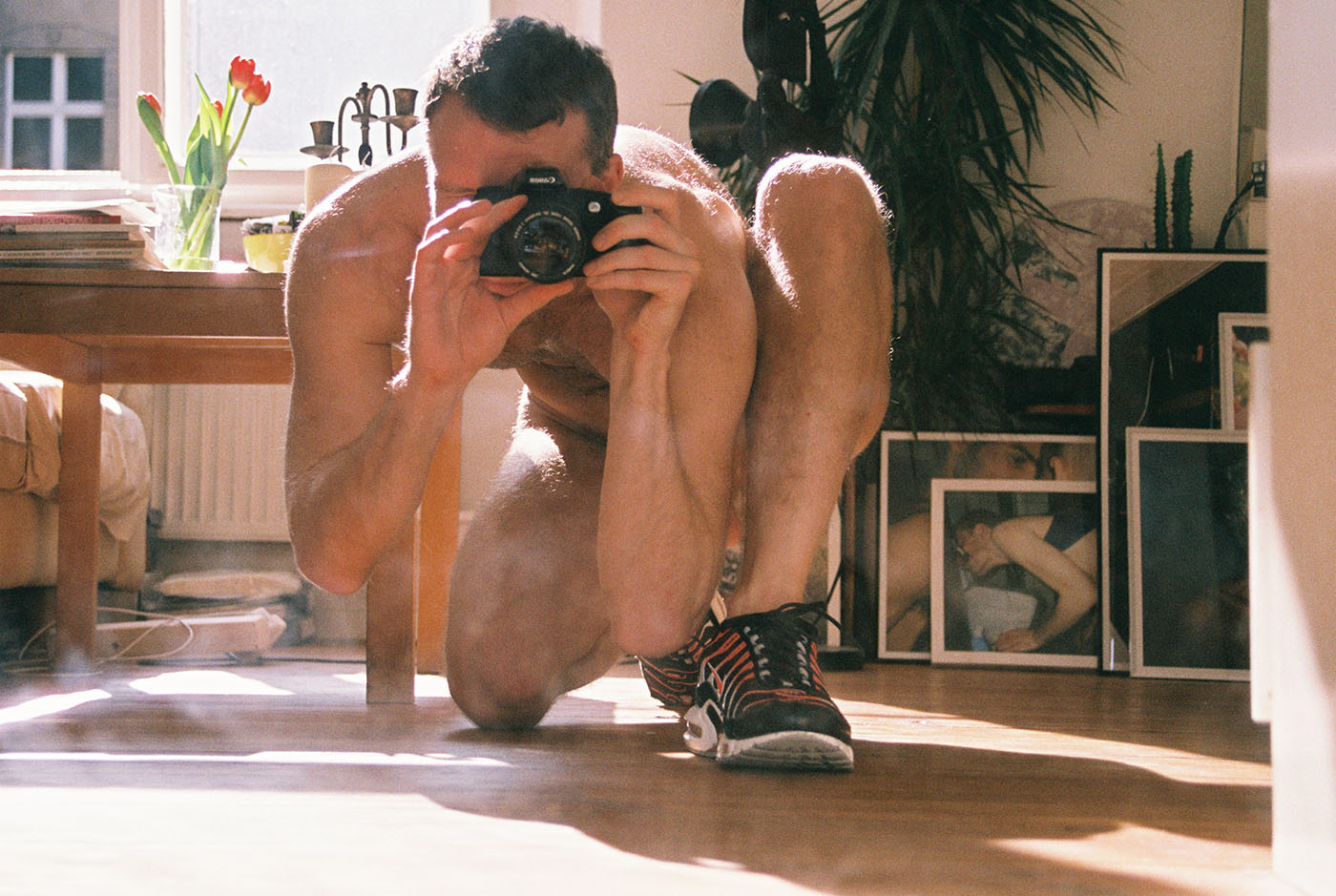
Spyros Rennt’s third self-publish book “Corporeal” is now out. Check his instagram and website for more information.
Cover designed by noted creative Marwan Kaabour (@ustaz_marwan) and the foreword text by Dutch curator Maia Kenney (@vagrantbaker)
Interview by Yves Tsou.
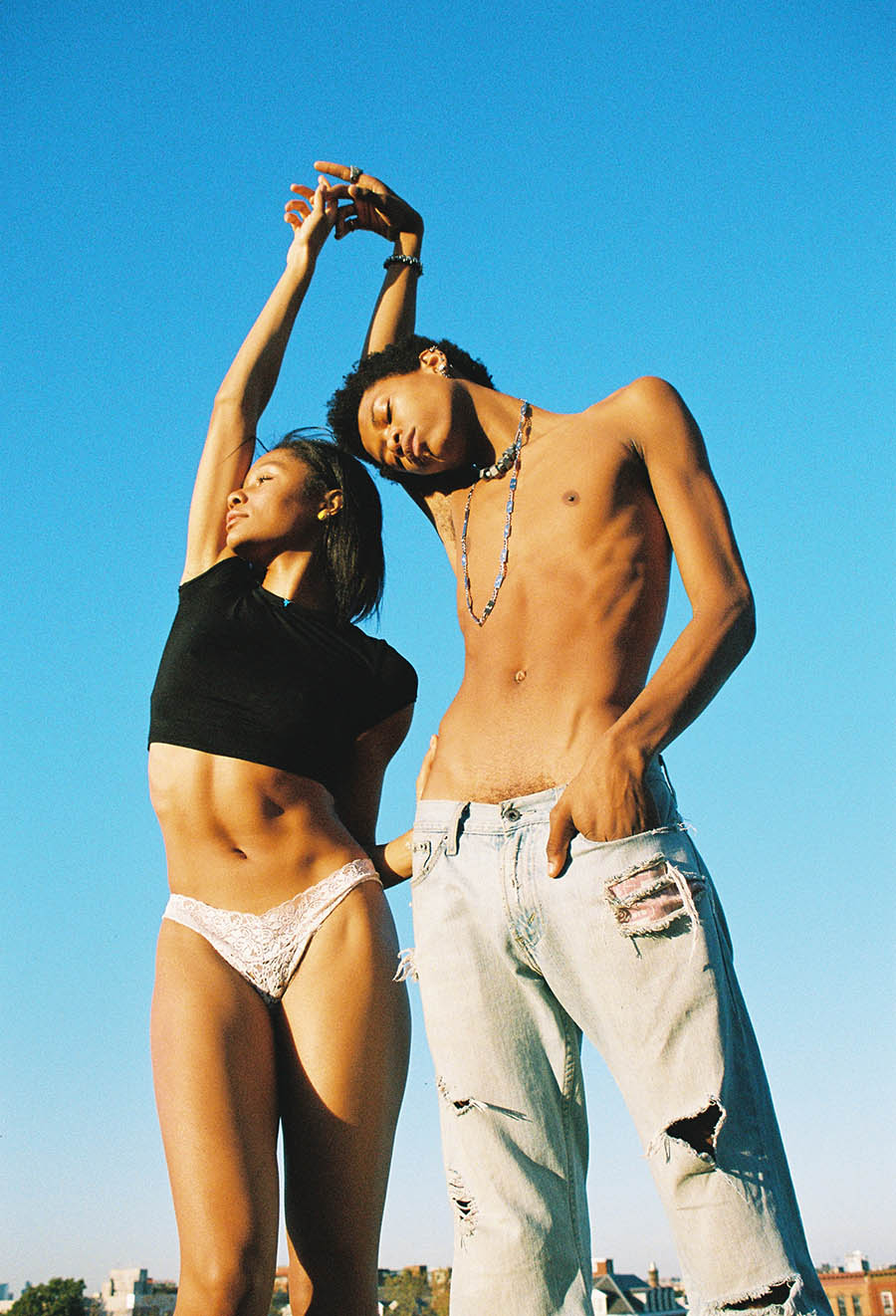
Fearless Flowers
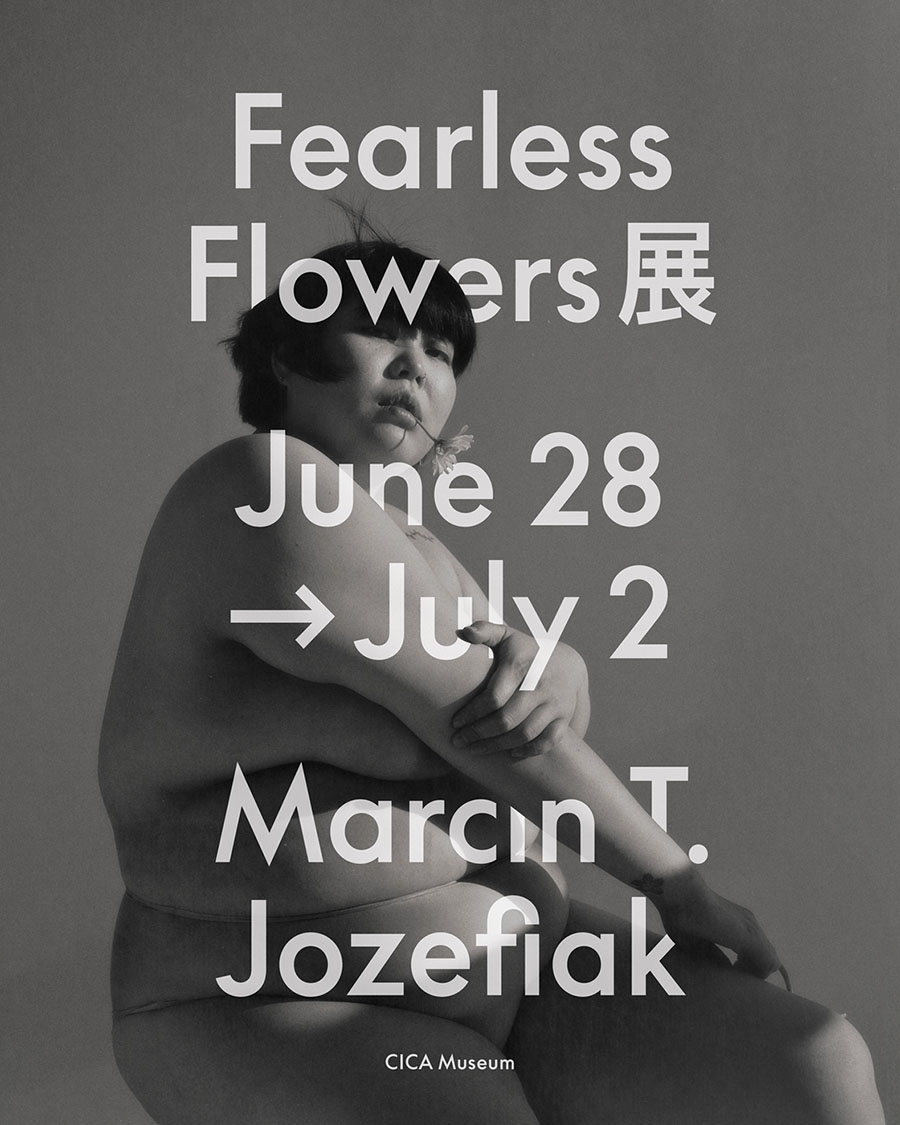
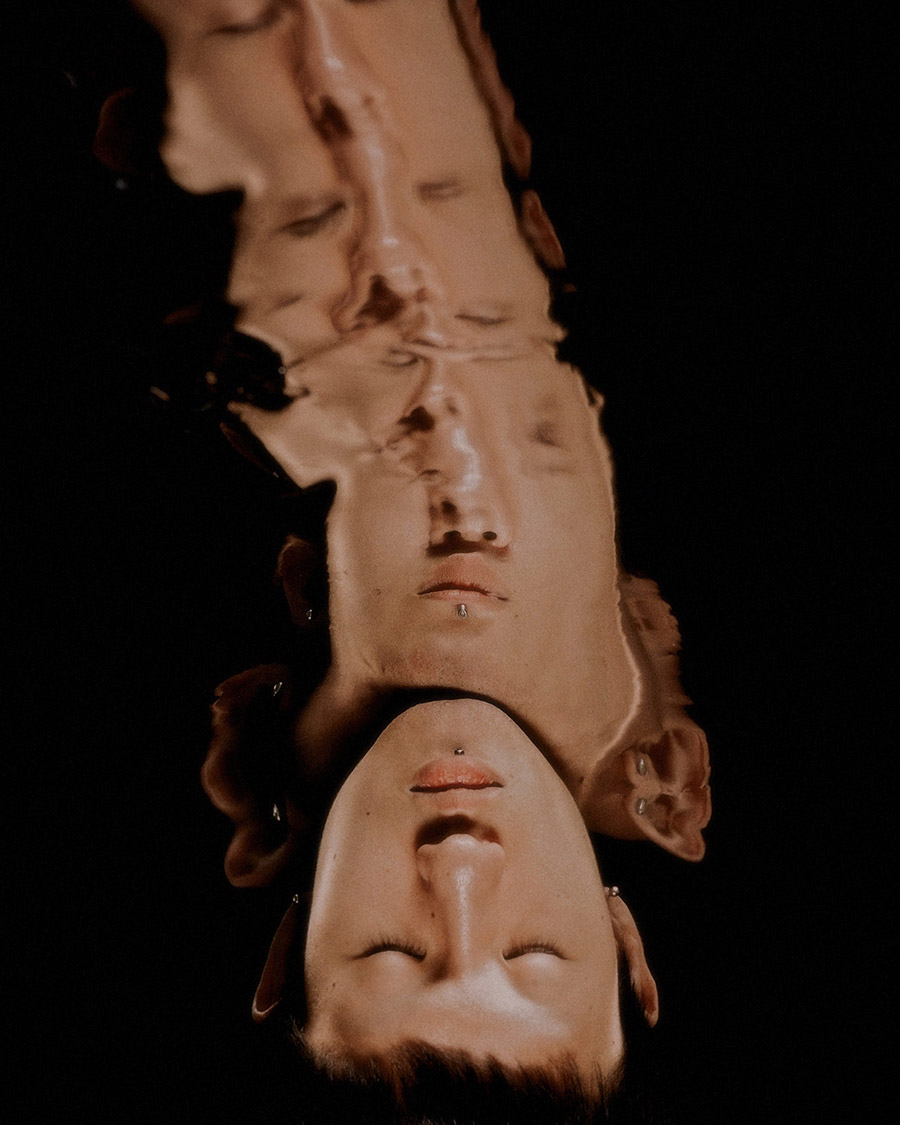
In the past years, South Korea has gained significant global exposure and attention. It also attracts many international talents’ attention, amongst them is Polish-British photographer Marcin T. Jozefiak.
Inspired by the social atmosphere in South Korea, Marcin T. Jozefiak’s project “Fearless Flowers” series explores gender, sexuality, gaze, and identity in South Korea. Photographed over two years with 23 different participants, the project studies one’s relationship with their own body and inner struggle with the image pressured by a conservative society, where certain beliefs and outdated standards are forces on the rapidly changing nation.
Adorned with flowers, the human body represents universal innocence, timelessness, and purity. The subject, who may convey toughness in other settings, is shown with vulnerability and humanity when photographed in a safe studio environment. Ornamented with flowers, the black garment, which represents the society uniform, is a metaphor for the fight and struggle of each subject and beyond.
The series is an attempt to capture open-mindedness: acceptance of your body and sexuality, as well as welcoming the self-created modern image of who Korean people aspire to truly be. It is creativity’s role to rebel its spirit against society’s preconceived ideas and question their relevance.
As an outsider, Marcin T. Jozefiak had the privilege to be introduced inside this personal expression of liberation, looking for meaning, looking at the beauty and identity, all while capturing the landscape of self-invented people: a true walking work of art.
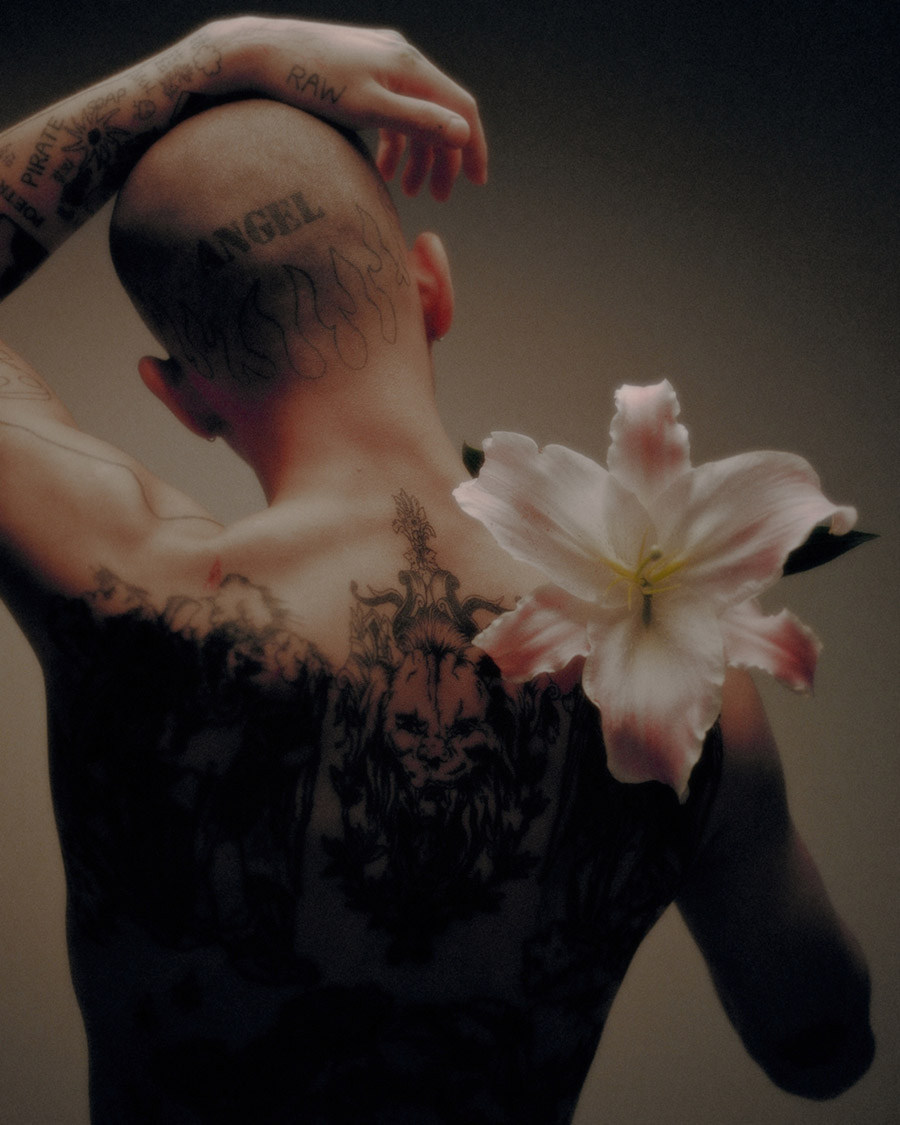
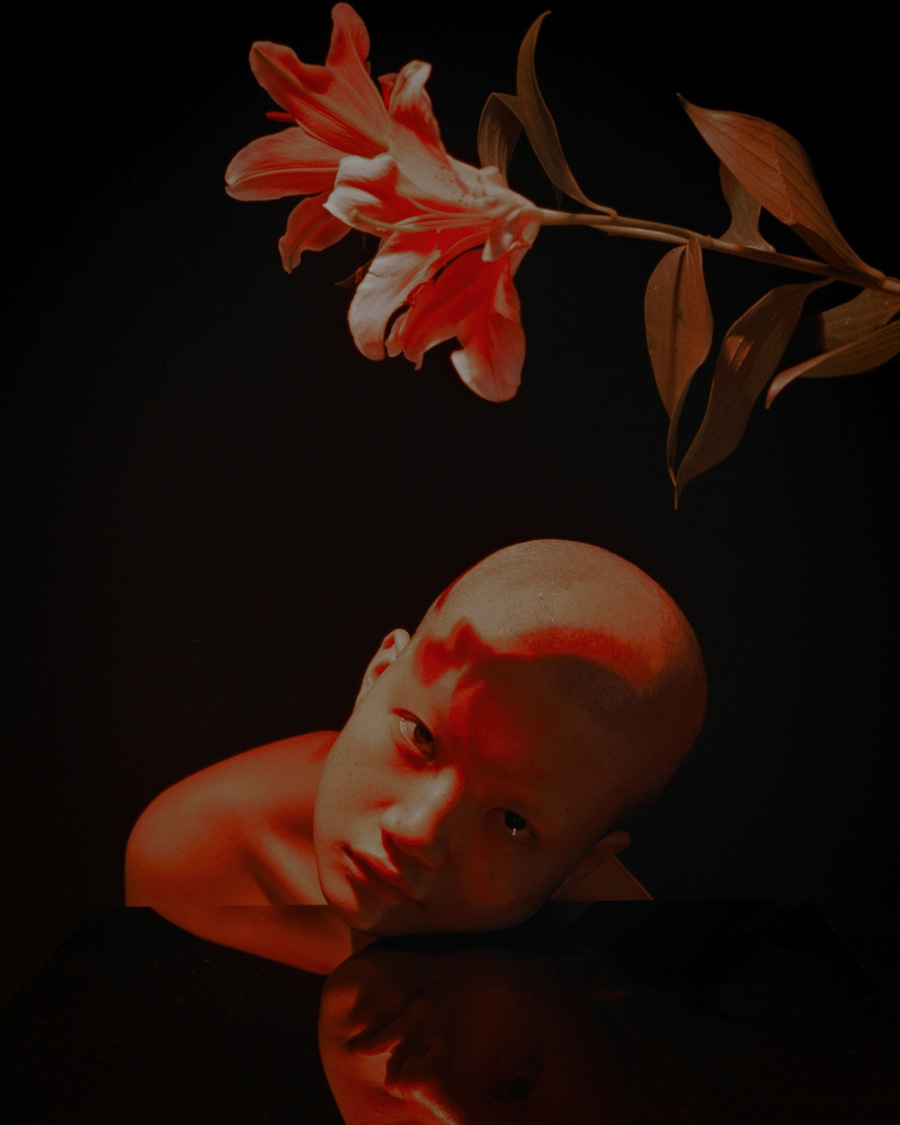
Marcin T. Jozefiak is a Polish-British photographer currently based in Seoul, passionate about people and the stories they hold. He loves discovering their unnoticed beauty. As an artist and emigrant, his work found focus in the topic of lost identity. The most recent project looks deeper into the subcultures of South Korea and their sense of belonging. The resulting images all come from a curiosity to explore the subject of identity and improving the self.
On the occasion of the opening of his upcoming solo exhibition in Seoul, CAP 74024 shared a lovely talk with Marcin T. Jozefiak on the making of this photo series, his artistic and creativity journey as well as his viewpoints in art and in life.
Hi Marcin, how are you today?
I’m good, how about you?
I’m good as well, thanks. Marcin, how long have you been based in Seoul?
I have been living in Seoul for 5 years since leaving London.
What are the subjects and topics that interests you when it comes to artistic creation?
As an artist and emigrant, my recent work found focus on the topic of lost identity. The most recent project looks deeper into the subcultures of South Korea and their sense of belonging. I have always been interested in subcultures, primarily how each one has a philosophy or just a ‘way’, and I found it a great space to be myself—or part of myself—in and capture its language. The resulting images all come from a curiosity to explore identity and improve the self.
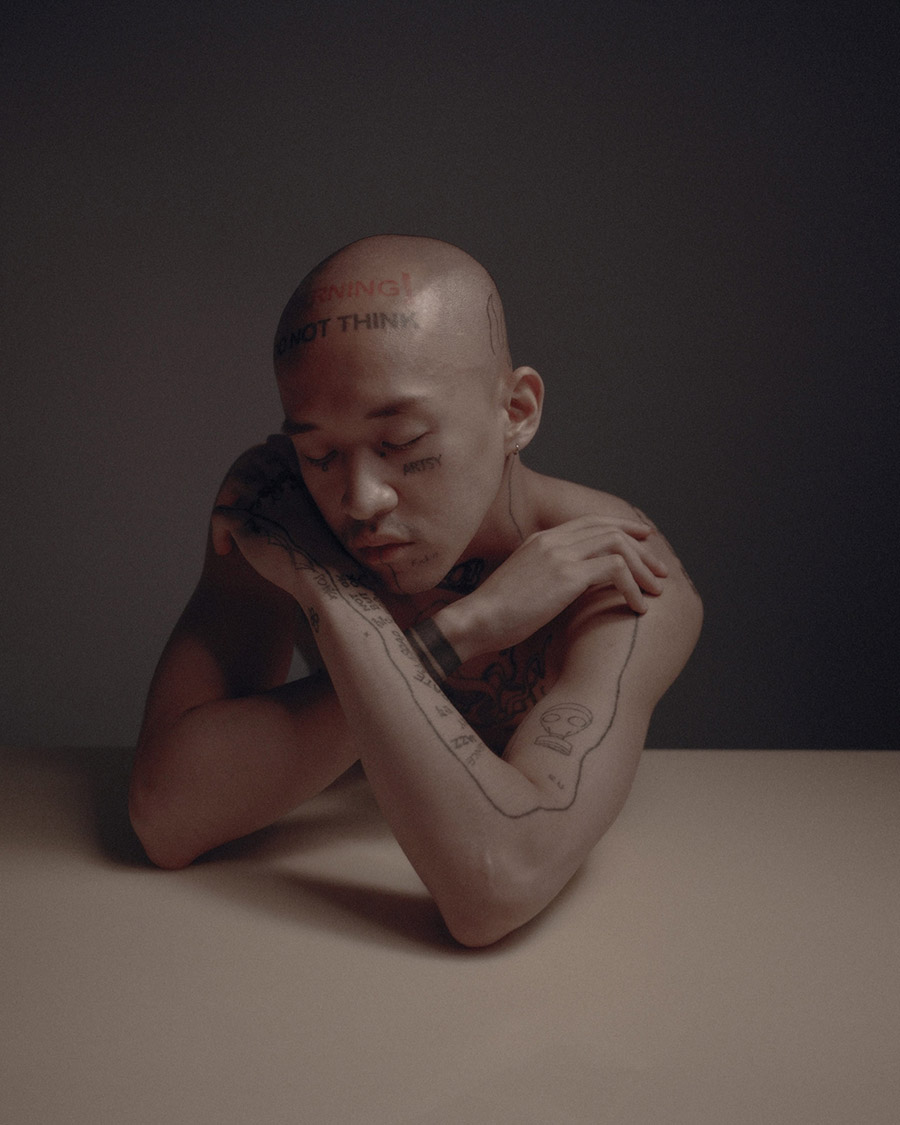
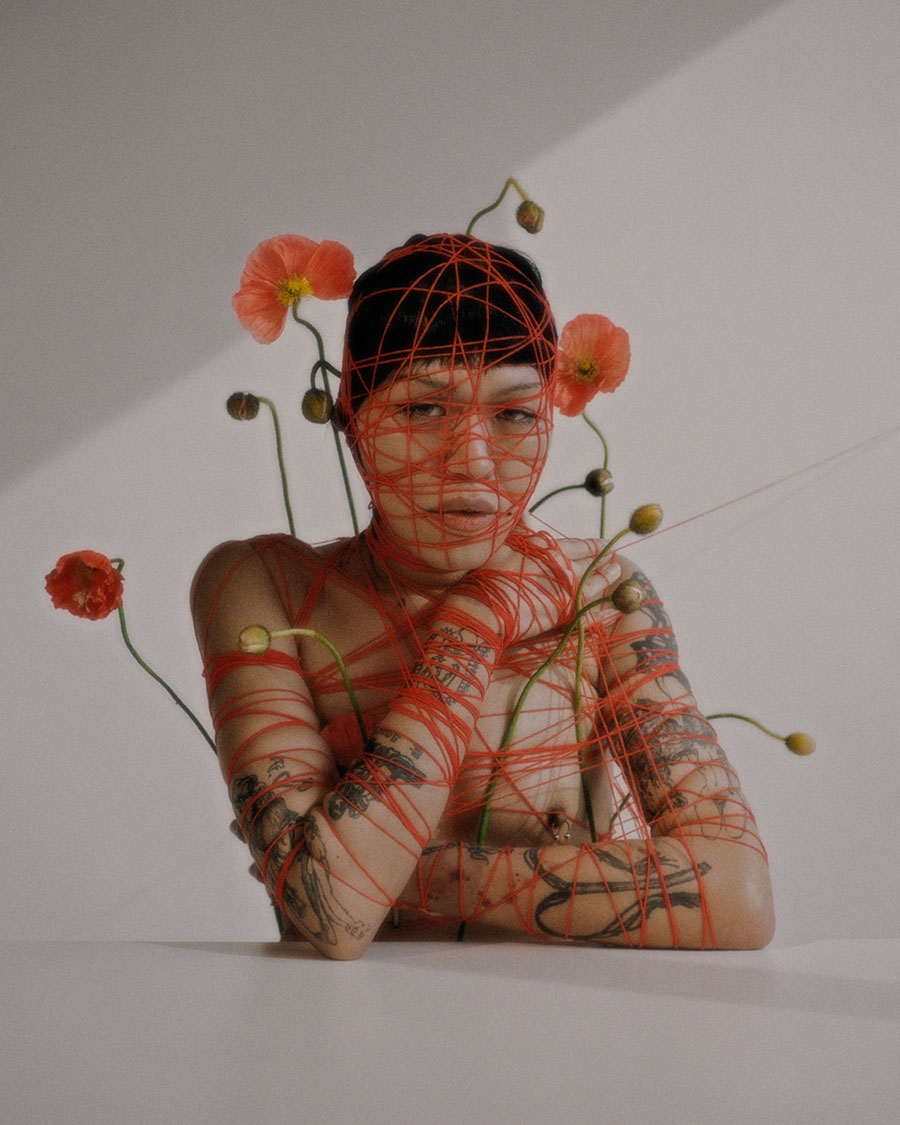
What inspires you to create this series “Fearless Flowers”?
Although I’ve lived in Seoul for over five years, I’ve visited here a few times before, and I always approach it with curiosity, observing and analyzing my surroundings. The “Fearless Flowers” series and book attempt to capture open-mindedness: acceptance of your body and sexuality and welcoming the self-created modern image of who Korean people aspire to be.
I developed a curiosity about Korean culture and traditions, which led me to explore the perspectives of Korean individuals about their lives. As I conversed with various participants, I was exposed to unique viewpoints and became a keen listener of their diverse stories and perspectives. My inspiration often comes from the people I encounter or actively seek out, and every person I photograph leaves me in admiration of the beauty of the human form.
Before the pandemic hit, I worked on my first solo show in Seoul called “Not for Everyone.” This project sparked my interest in diversity and subcultures in this fast-paced city. I photographed each person in an outdoor location that held significance for them and in a studio setting. At the exhibition, some visitors had never encountered someone openly gay, trans, tattooed, a drag queen, or open-minded about their body. Noticing that some live their life never noticing one another and my audience’s response motivated me to dive in even deeper and continue my exploration, which led to creating my “Fearless Flowers” project and book.
Creativity is crucial in challenging society’s preconceived notions and questioning their significance. And certainly, raising awareness can change people’s perceptions of what they fear, which I hope to achieve through my work.
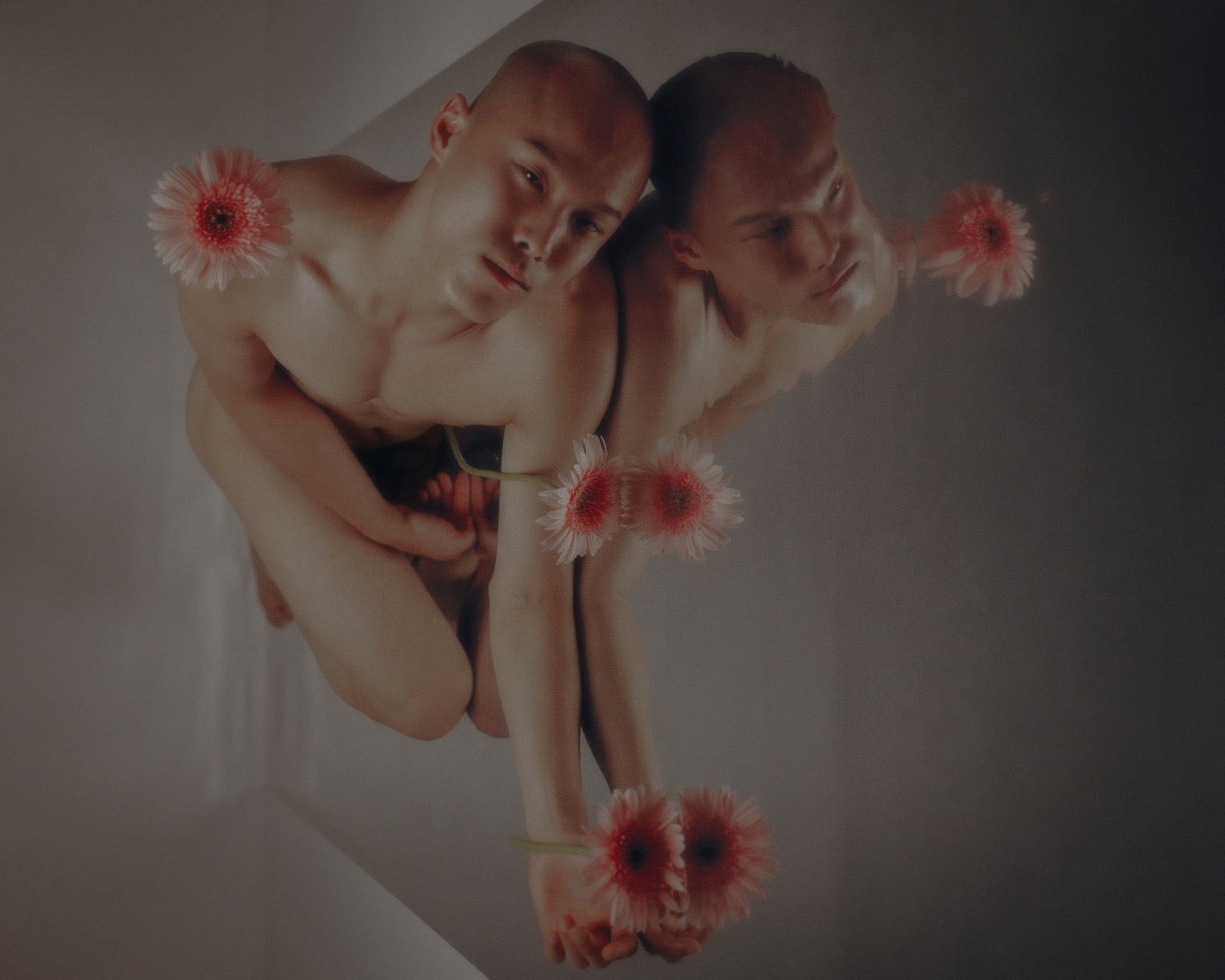
How do you find the persons to be shot? How do you build mutual trust with them?
Following my project in Seoul, I received requests from a few individuals to take their photographs. However, I mostly searched for potential subjects on Instagram and shared the project statement and manifesto with them. During our initial meeting, we would discuss ideas and how they relate to the project’s concept. After completing a few shoots, I would share a selection of reference photos to showcase the project’s aesthetic. Furthermore, upon sharing one or two photos online, people occasionally reach out to express interest in participating in the project. The most important thing is to create a safe space for people to open up without being pushy and overthinking the collaboration process.
What are the most impressive or memorable stories while collecting the stories of your objects and while shooting them?
It’s difficult to choose a single standout moment from my experience capturing individuals on camera. Each person was unique in their own way, and I made sure to tailor their posing and movements based on our previous conversations. I aimed to reflect a more sophisticated look into their character.
As an outsider, what are the advantages and disadvantages you have throughout the creation of this project? Or to say in a more universal aspect, what are the pros and cons as a foreigner living in South Korea?
As an outsider, I’ve had the privilege to be introduced inside this personal expression of liberation, looking for meaning, beauty, and identity while capturing the landscape of self-invented people: a true walking work of art.
My role was never to judge and search for answers but rather to be the spark which starts a conversation. As a foreigner living outside of the Western culture, understanding and, most importantly, wanting to explore the basics of Korean culture, you know you’re in no position to critique. Therefore, with my work, I am the bridge between my subject and whoever is looking and trying to discover and capture their unnoticed beauty.
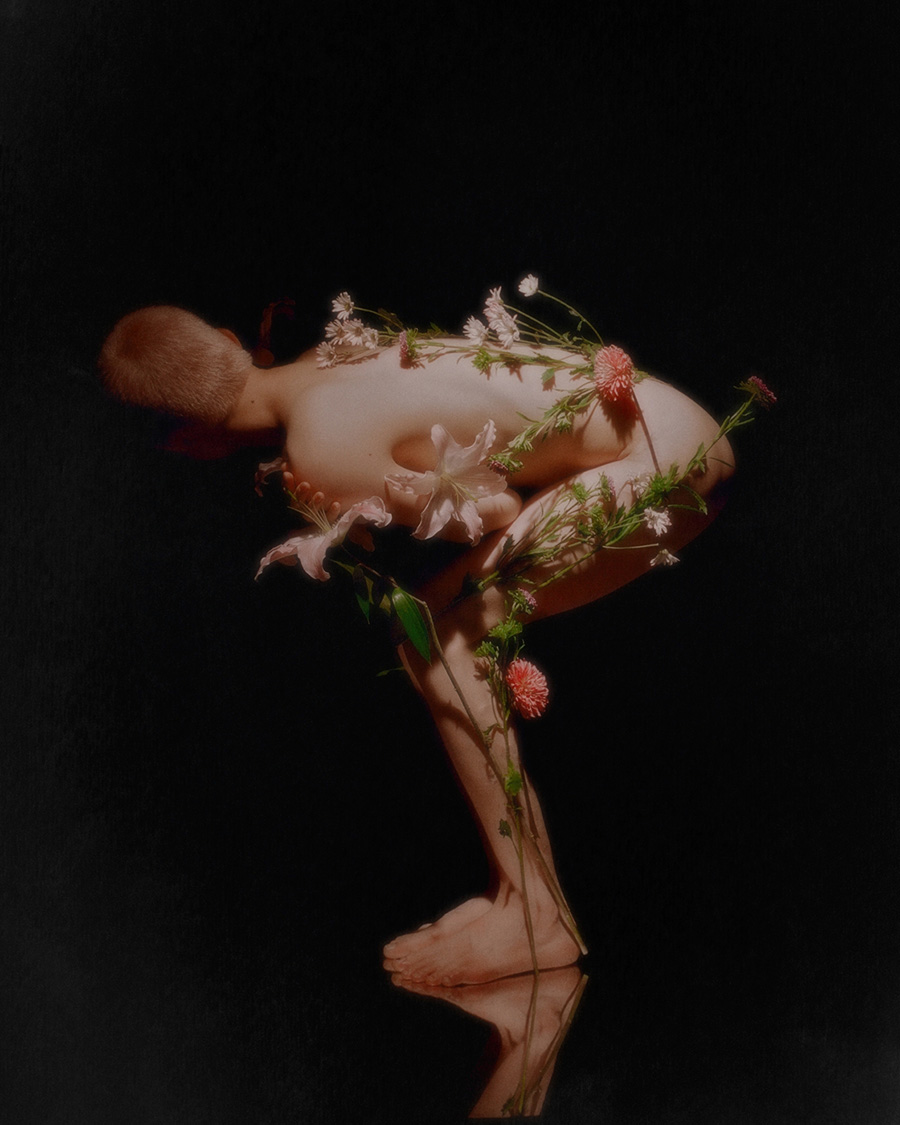
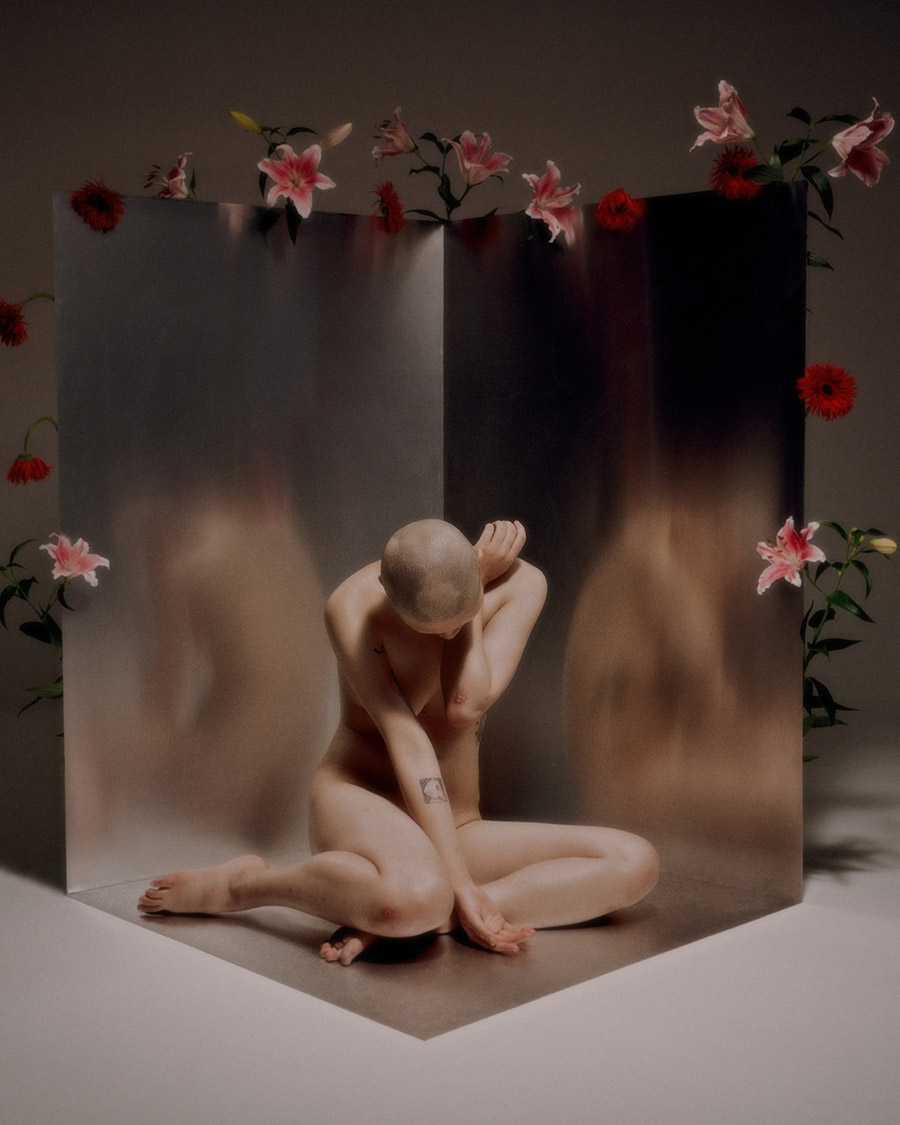
What is the future direction of this project? Will it still be ongoing or has it already completed its phased task for the moment?
When I began working on this project, I didn’t anticipate the number of individuals I would meet and photograph. However, I was determined to publish it in the form of a book, which I successfully launched at this year’s Rotterdam Photo Festival. The “Fearless Flowers” can be purchased as a Limited Signed edition on my website.
The project’s second component features moving image footage captured using a super8 film camera. Conversations were recorded and will be compiled into a short film that captures more stories. I anticipate releasing it this year, you can preview a teaser on my Instagram or website. I am always passionate about people and the stories they have to share. If you are interested, I would be thrilled to collaborate and explore new and diverse aesthetics while discussing identity.
Do you plan to stay in South Korea and continue your artistic career or do you see yourself somewhere else, doing something?
When I travelled back to Europe this February for exhibitions and some other projects, I had the pleasure of staying in Berlin, and I hope it will be possible for me to be between those two cities. There is still so much for me to explore in South Korea, and there are a few projects that I’m planning to do, including another short film, which focuses more on the changing traditional landscape of Seoul.
A big part of someone’s identity is always returning to their family heritage. On the 15th of January 1943, my great-grandmother was transported with other prisoners to the Auschwitz-Birkenau concentration camp back then, occupied by Nazi Germany Poland. On her arrival at the concentration camp, her identity was simplified to five digits “28955”. And my ongoing mix-media series focuses on the archives and my family’s history. I’m hoping to finally finalize this project. Helping to connect and restore a lost identity by looking for a way to continue the dialogue between past and present.
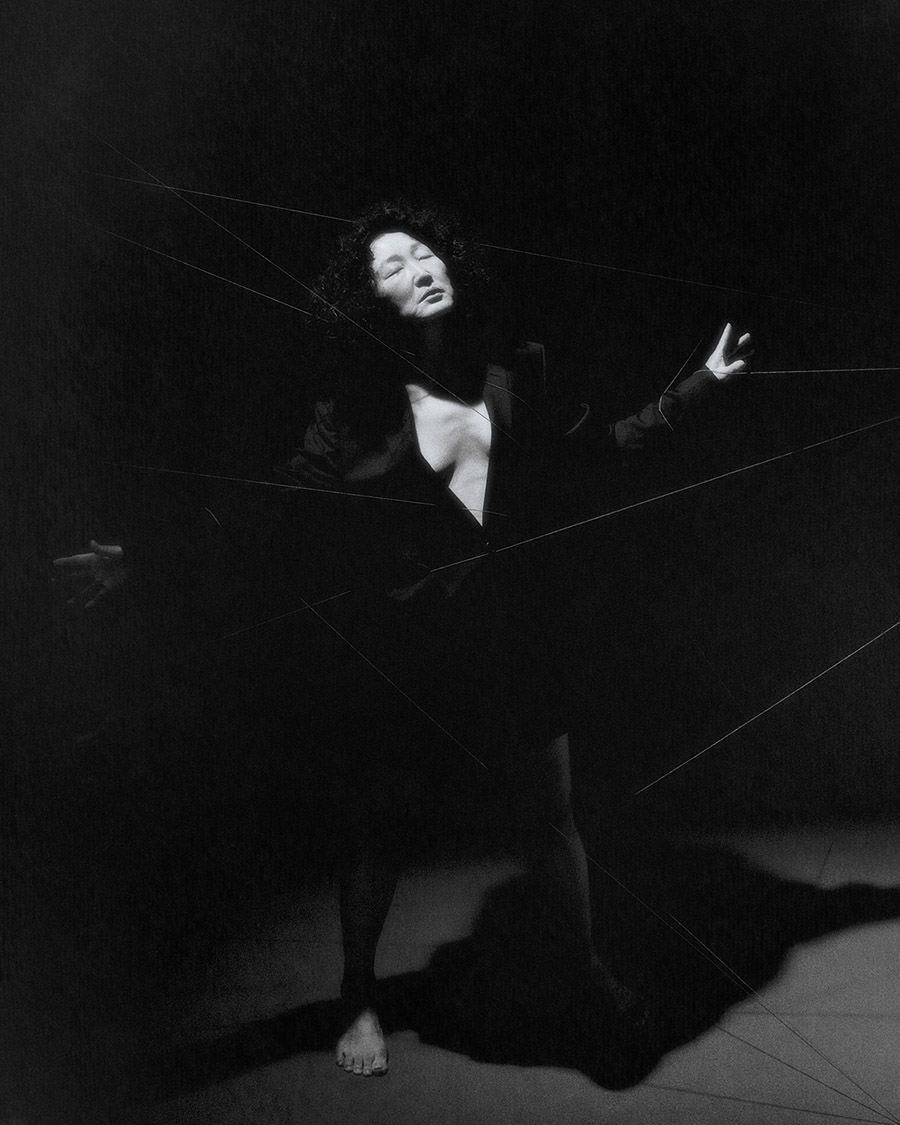
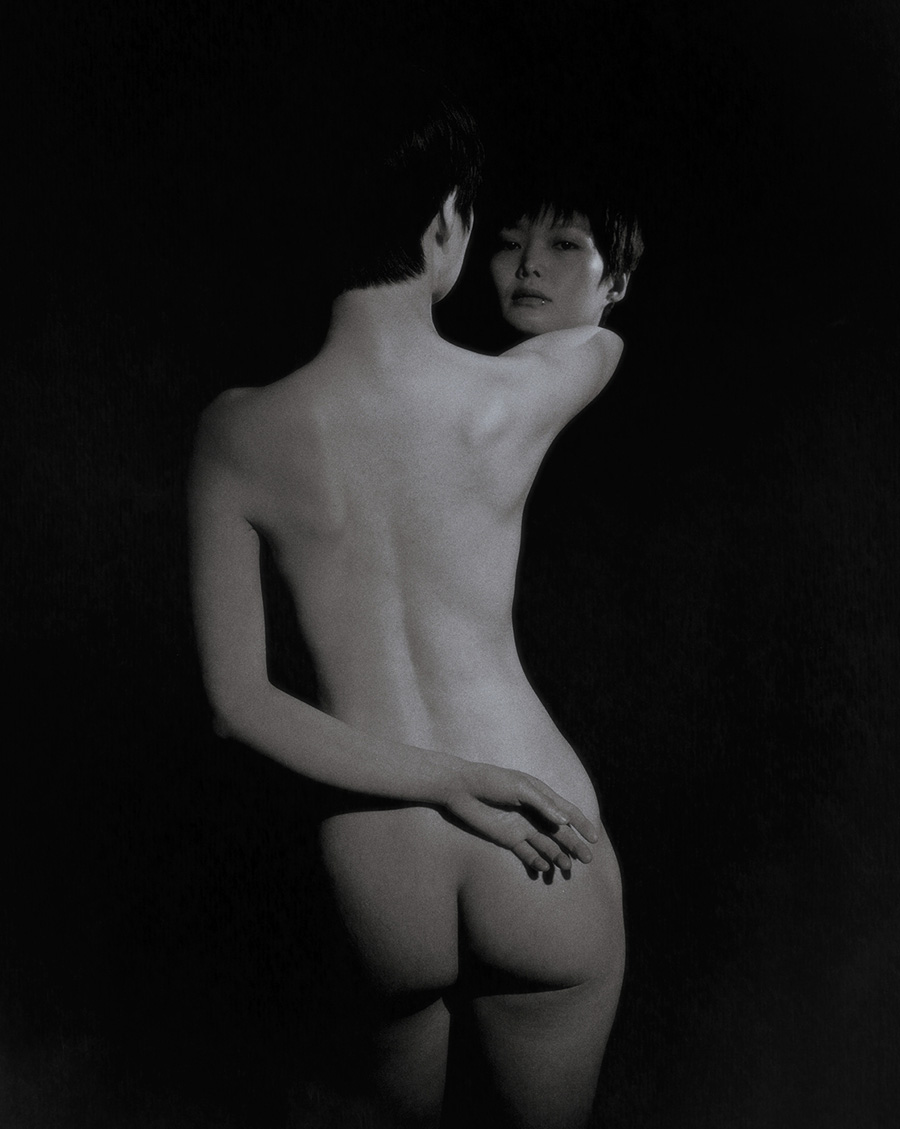
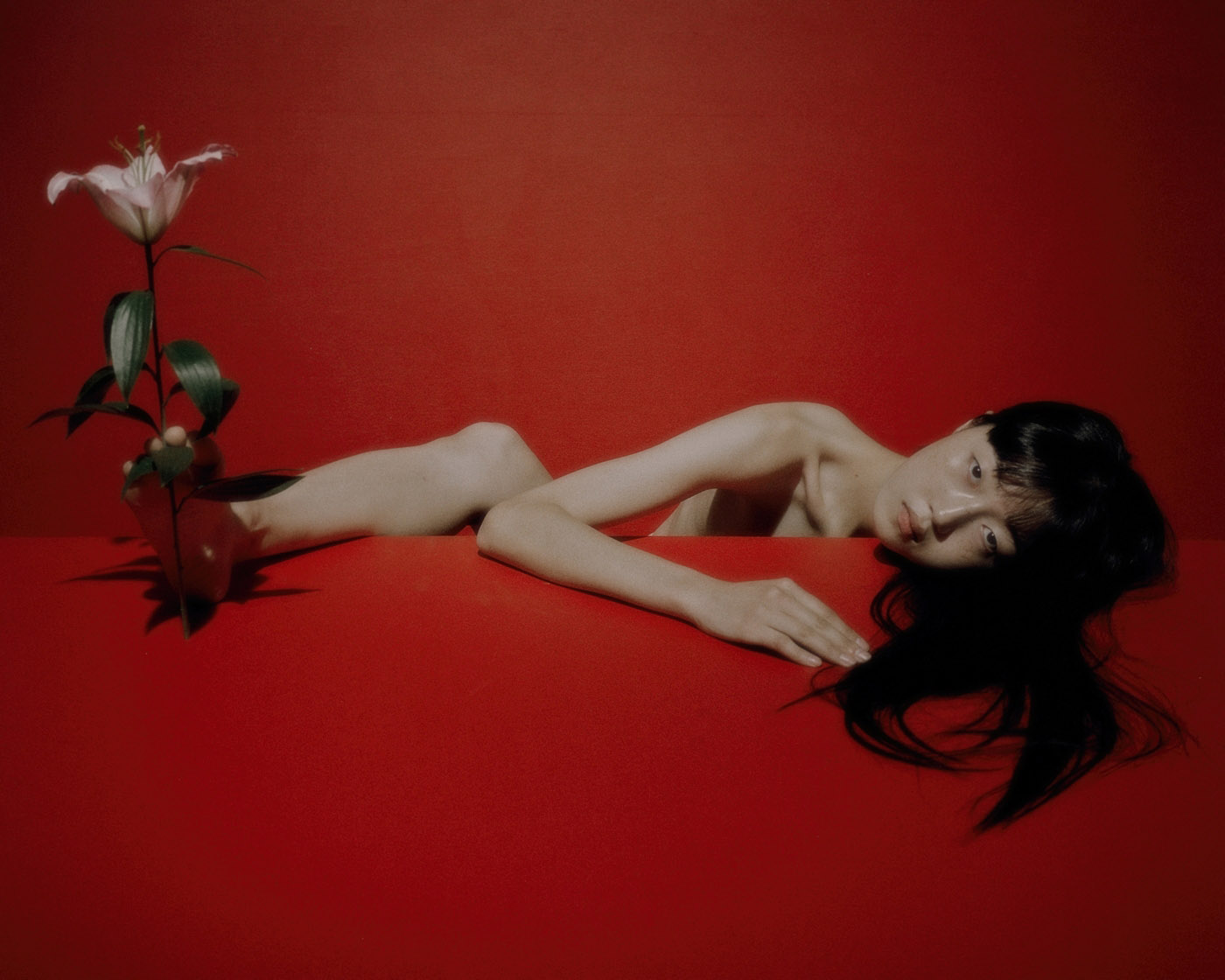
Further information about the artist and the series “Fearless Flowers” can be found on Marcin T. Jozefiak’s website and instagram
Book and poster designed by Gute Form (@guteformseoul)
Interview by Yves Tsou
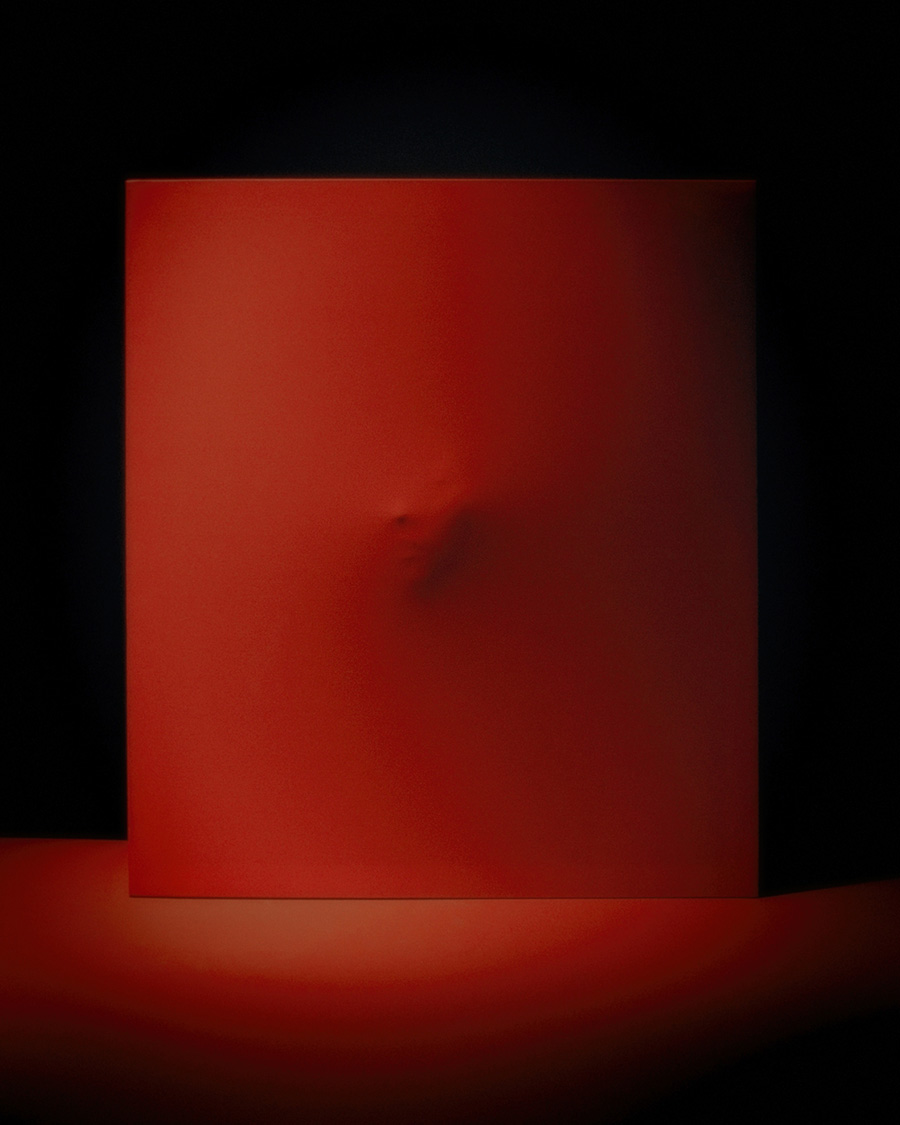
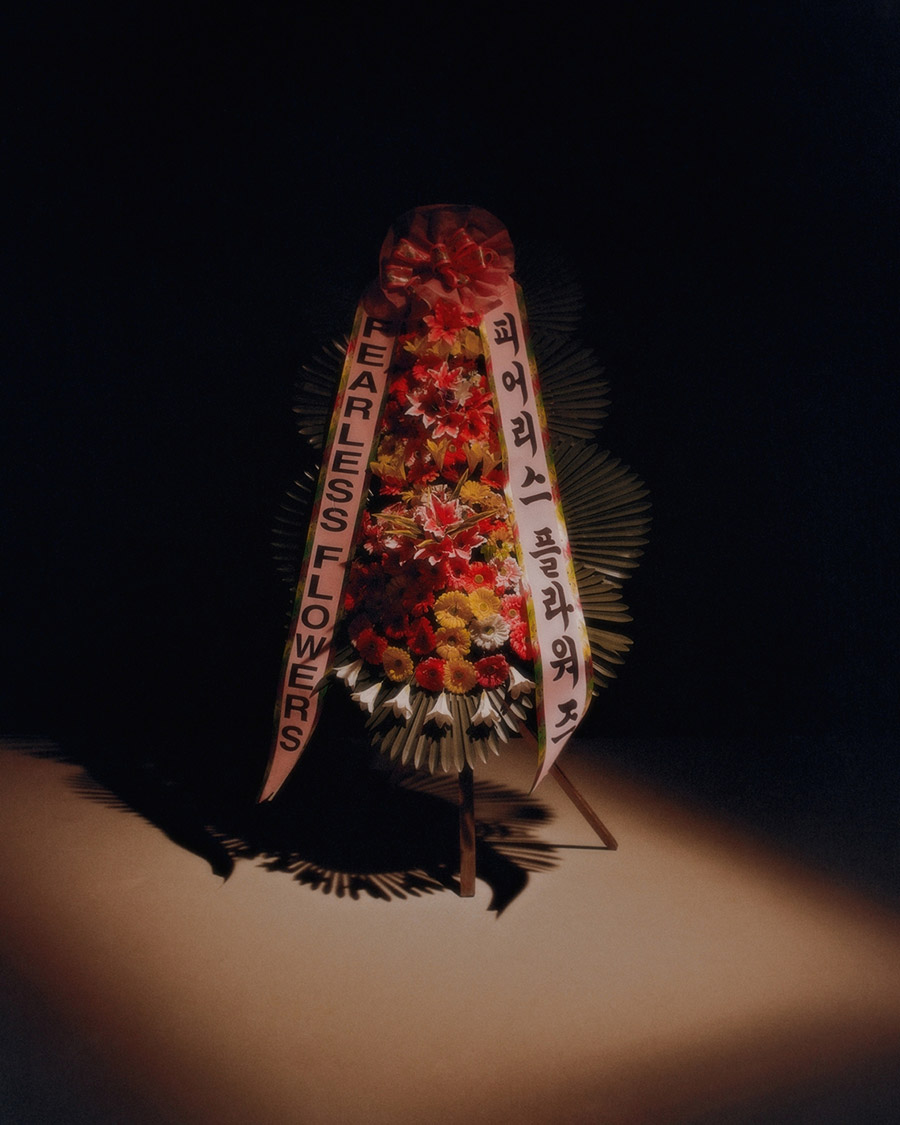
BOOM TOWN: An Art and Digital-Centric Talk With Peter Burr

Influenced by the tools and aesthetics of video games, pioneering digital artist Peter Burr’s latest online exhibition BOOM TOWN is a richly crafted narrative world that is deeply evocative while remaining mysterious and restrained. Curated by Julia Kaganskiy, the exhibition displayed images and environments that hover on the boundary between abstraction and figuration, inviting the viewer to conceptualize their interpretation. In the exhibition, Burr’s compositions draw on generative dynamics and the complexity that emerges from simple, rule-based systems. Each piece in BOOMTOWN represents a unique, living artwork composed of 1,000 images that will change over time, evolving as a kind of durational stop motion animation over an undetermined period pegged to Ethereum’s block time. They all follow precise logic for generating the structure’s architecture, its ground and field, its shadows, planes, and colors.
Taking this precious chance to speak with Peter Burr, CAP 74024 talked with him on his concept, his artistic language and his latest exhibition. While we try to dig into the story behind his creation and his inspiration, we also want to understand Burr’s perspective on how art and new technologies like blockchain or NTF work. Here’s the digest of the talk we shared with him:
Hi Peter, we would like to start with your latest exhibition, BOOM TOWN. On the Feral File platform is a series of NFT / digital artworks that grow and change over time. Can you explain what readers are going to be experiencing with the work?
Each artwork is built with a little clock inside it that ages the piece as the Ethereum ledger grows. My hope is that the piece will last for 10 years and change multiple times a week over that decade. Will it BOOM or will it BUST? It’s not actually up to me… it depends on people continuing to use this technology and write things on that cryptic ledger to move it forward through its lifespan.
The works in BOOM TOWN have a certain nostalgic, “oldschool” digital quality, what was the intention there?
It all started about 30 years ago when I played this video game called MacPaint that was secretly training me to be a visual artist. It sparked my interest in painting which led to me exploring animation, installation, making my own video games, and now producing this project BOOM TOWN coming to life on Feral File.
A few years ago I fired up an emulator and started playing with Mac Paint again. It was exactly as I remembered, and within the constraints of this tool from 1984, I found something interesting. Despite the limited color palette, the lack of an ‘asset store’, the super simple interface – I found a voice to talk about some of my more complicated feelings around our current moment using a tool that was long ago left behind. I think the fact that this tool was so straightforward and familiar helped me discover that voice.
I think about this discovery a lot, because today we are in a world where technological advancements cycle faster than our minds and bodies can comprehend. As soon as a website or a software interface becomes familiar, I expect it will change. A system of updates whether or not we like it. I don’t see this stopping. In this world of “update hell”, I wonder if any of us will ever catch up. I don’t think anyone really knows. Perhaps the more apt question is… how do we build a better world from systems that change before we even learn to work through their shortcomings?
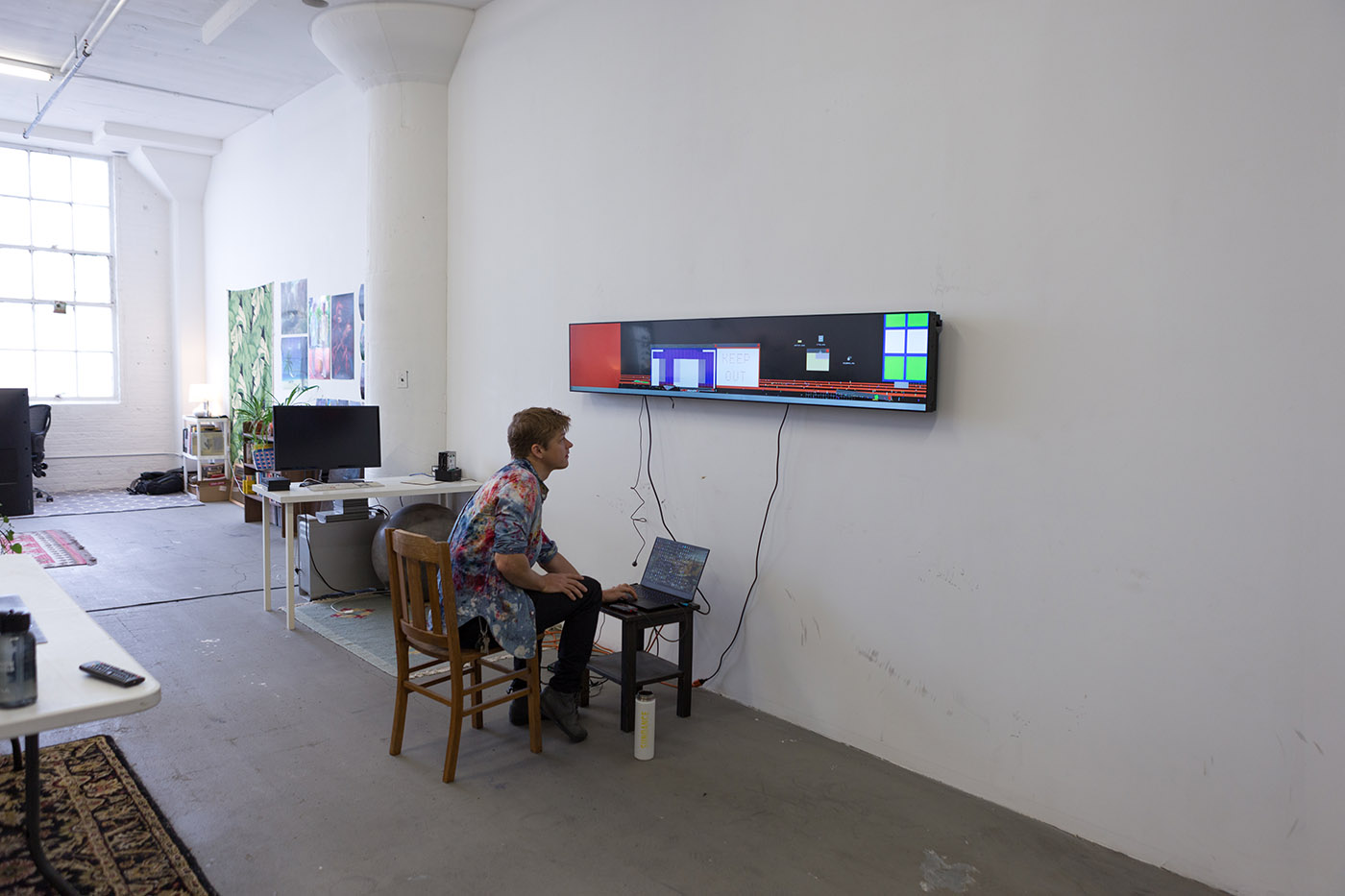
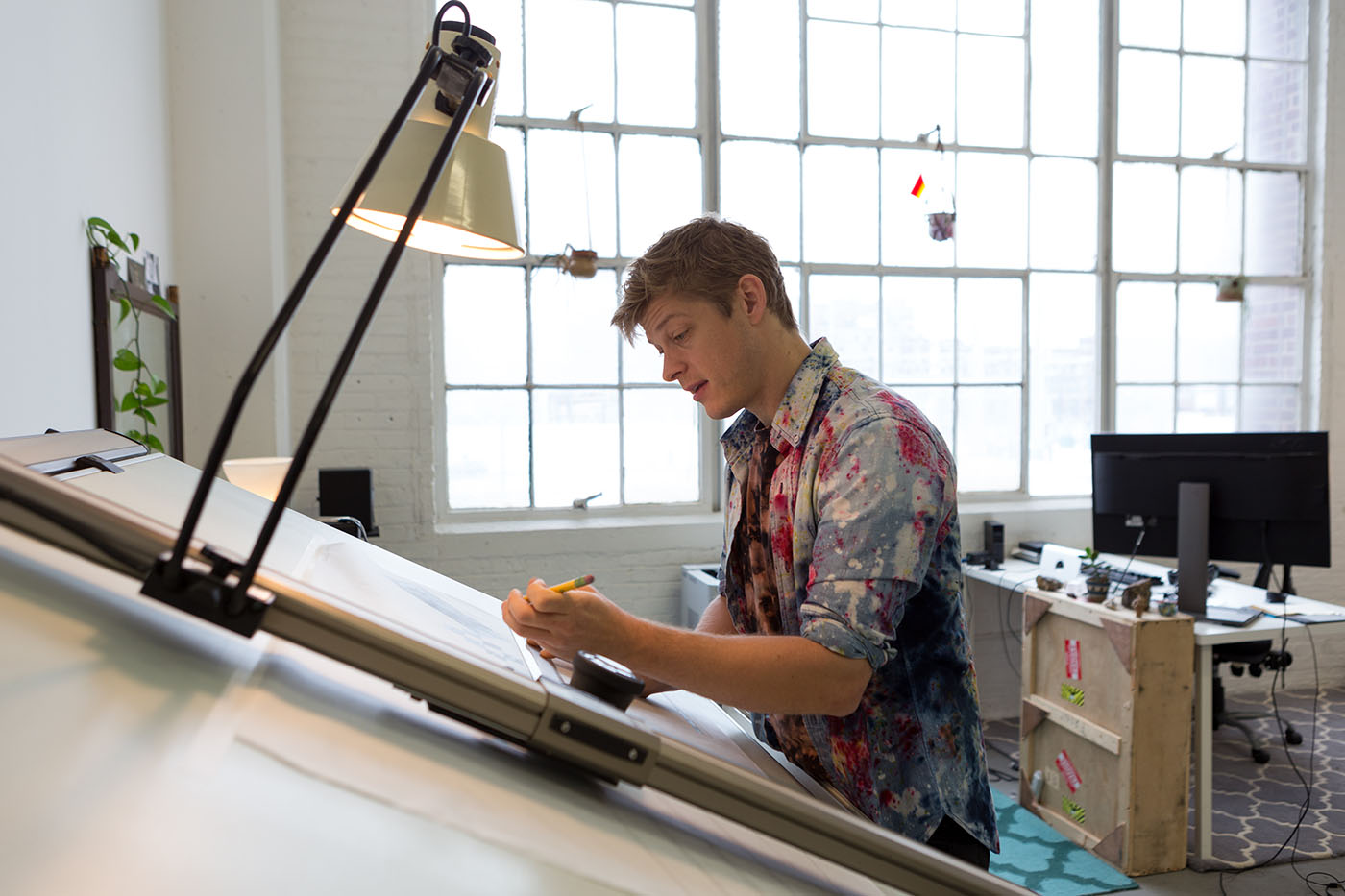
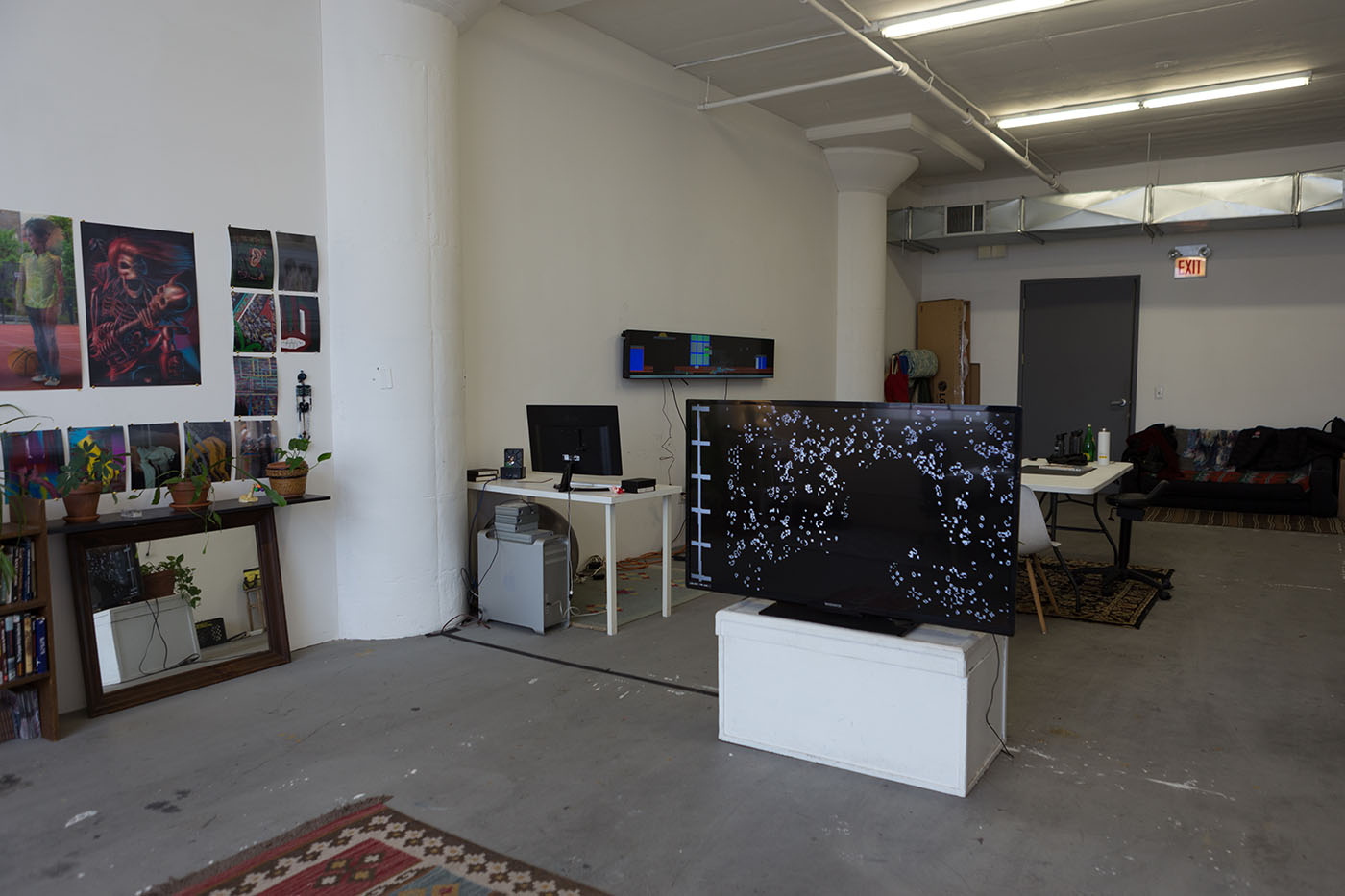
BOOM TOWN explores ideas like Manifest Destiny but translated to the blockchain and these new technologies. What inspired this?
I think Julia Kaganskiy, this exhibition’s curator put it well when she said “BOOM TOWN is galvanized from the landscape of the American West, when makeshift settlements, or “boom towns”, sprung up wherever valuable resources were to be found. Informed by the ideals of Manifest Destiny, colonialist expansion, and get-rich-quick schemes, these towns attracted prospectors, speculators, and those in search of a fast track to a better life.”
Architecture appears in your work quite frequently. Where does this fascination come from?
Architecture is interesting to me because it’s all this strange form of public art – expressive, symbolic, and practical at the same time.
Has blockchain and digital art shed a new light on your practice?
I like the idea of using social technology like blockchain tech as a space for collaboration. A few years ago I participated in a project conceived by Casey Reas called A2P that ended up being an early prototype of Feral File – working out the kinks of how this technology could work within our artistic community. It’s an honor to be able to bring BOOM TOWN into this space now that a few of A2P’s wrinkles have been ironed out and renamed.
Interview by CAP 74024 Team
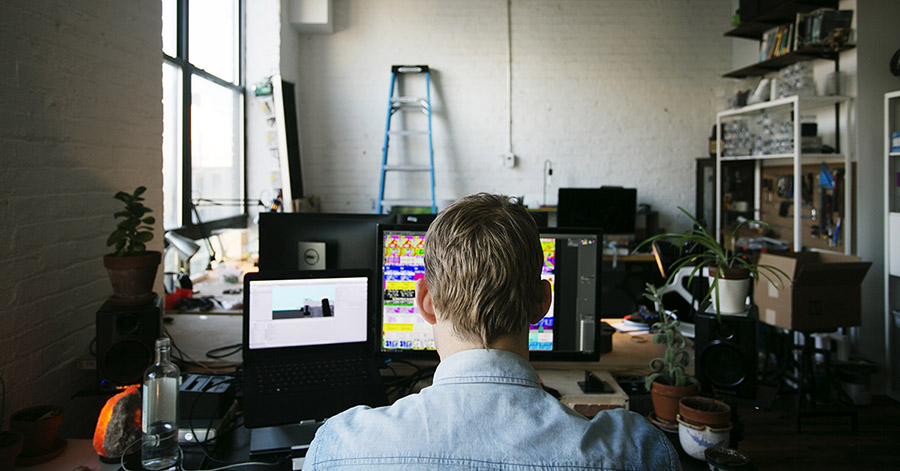
Selected works from BOOM TOWN
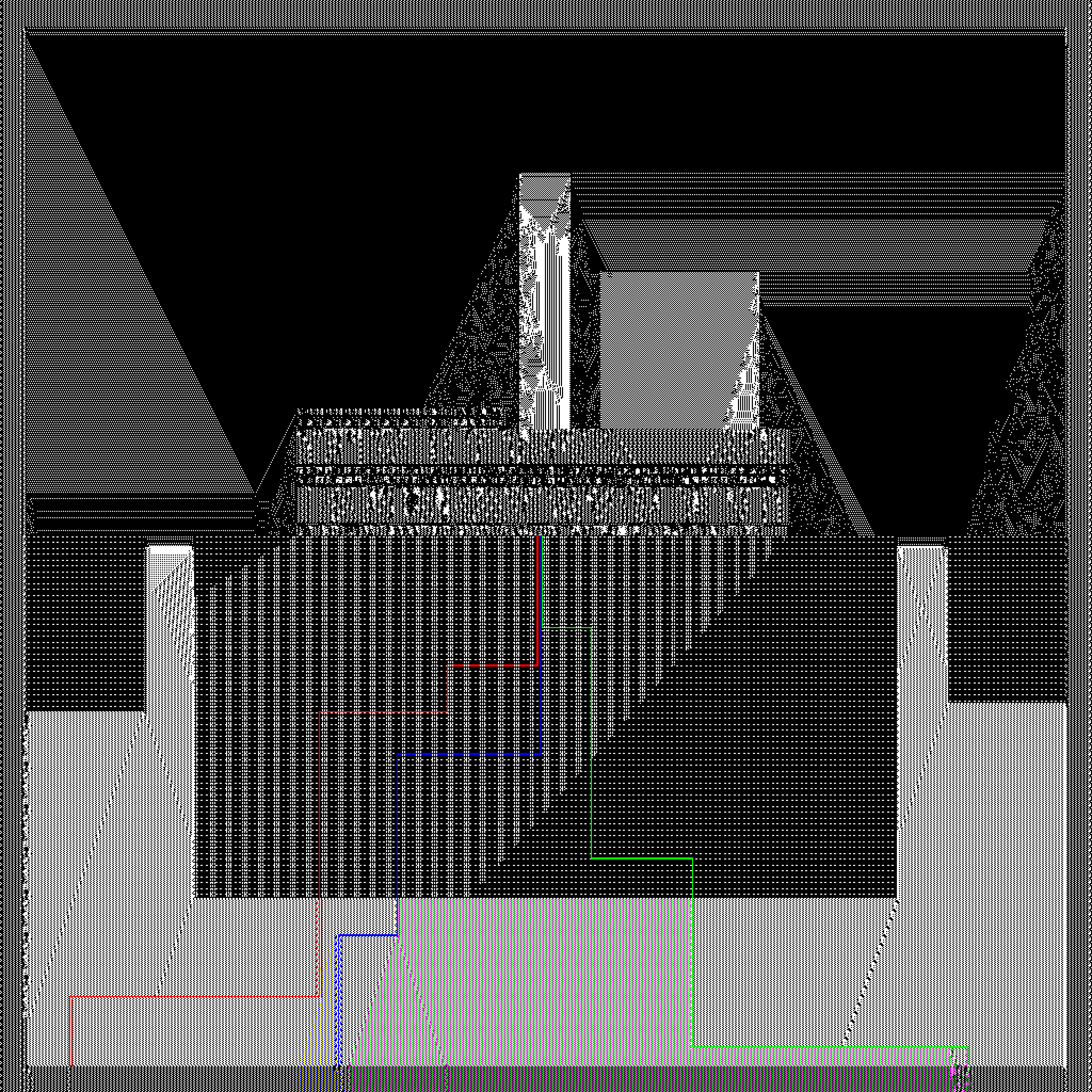
powerplant
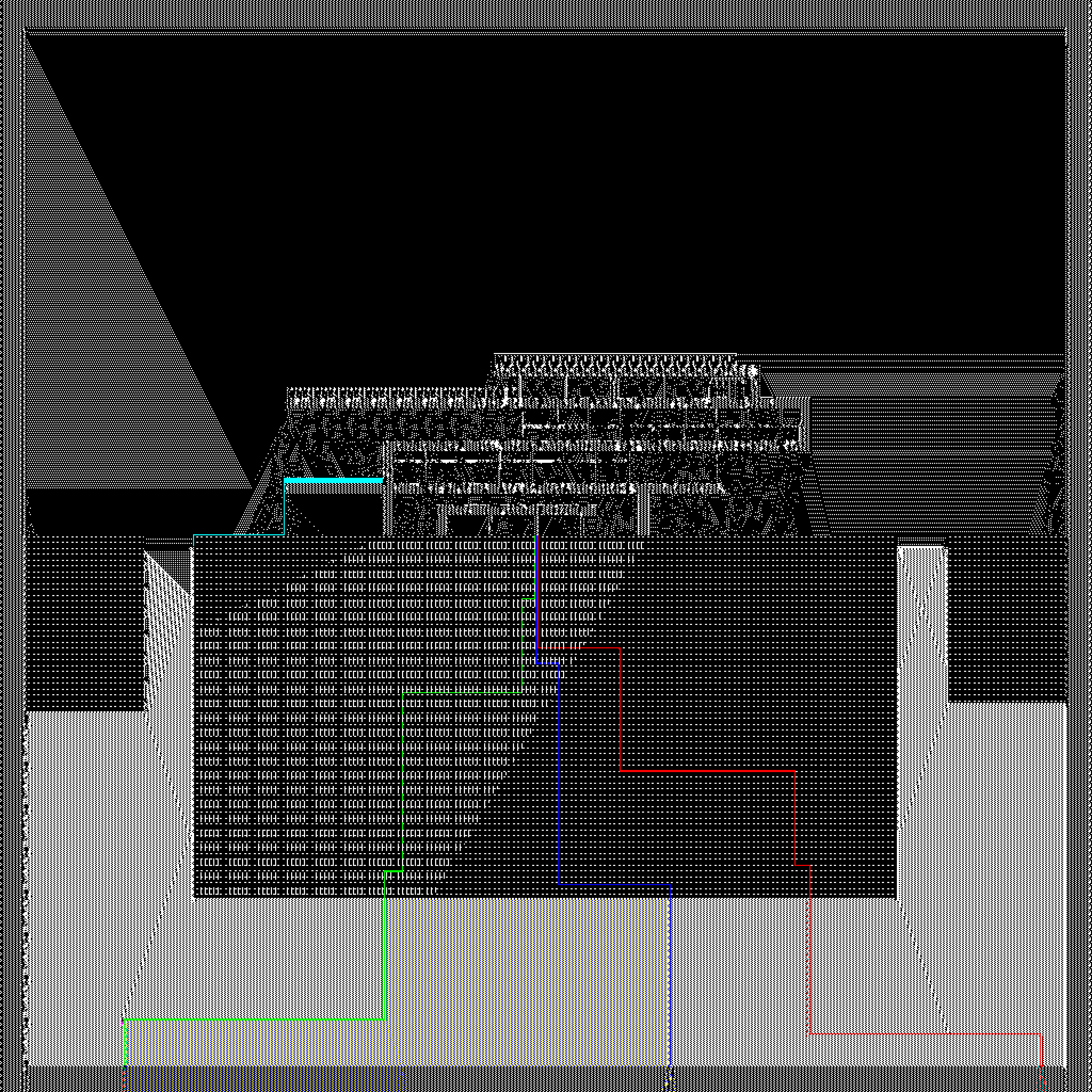
luxury
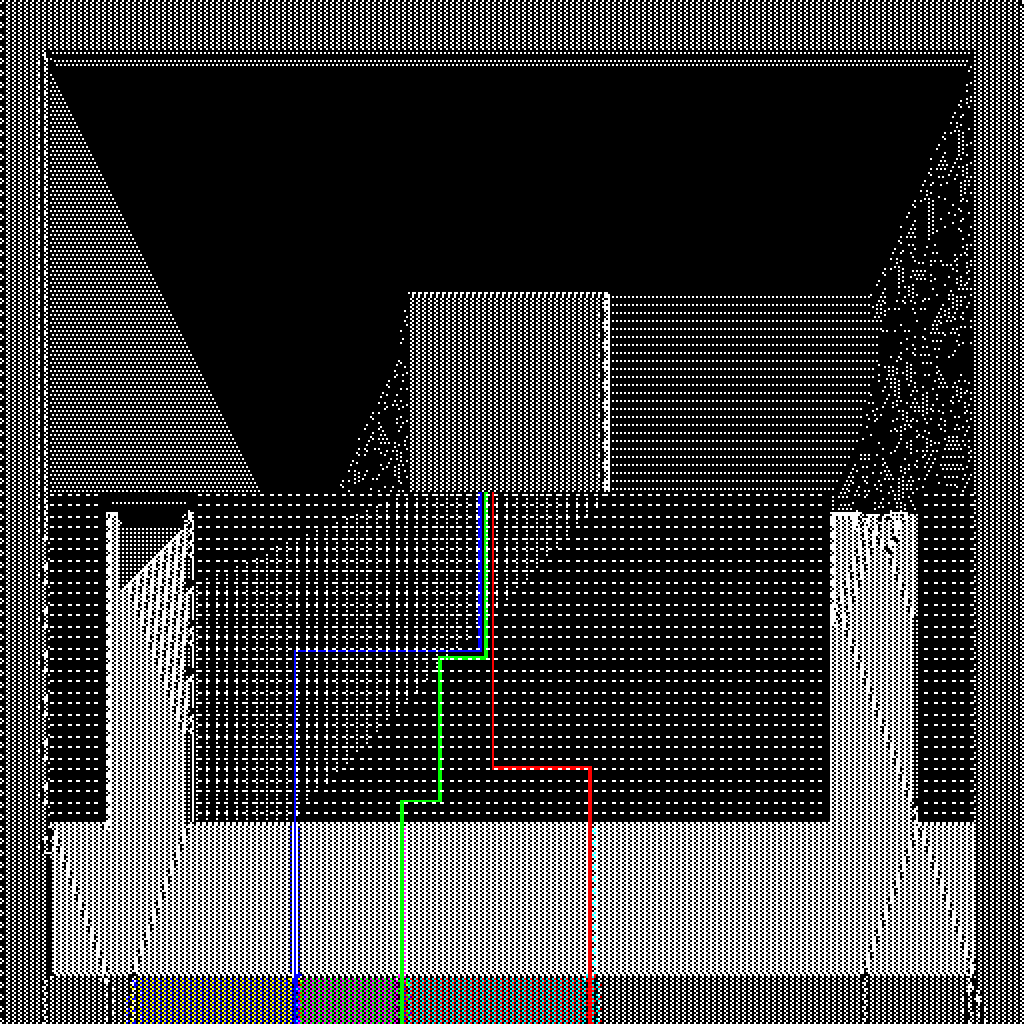
warehouse
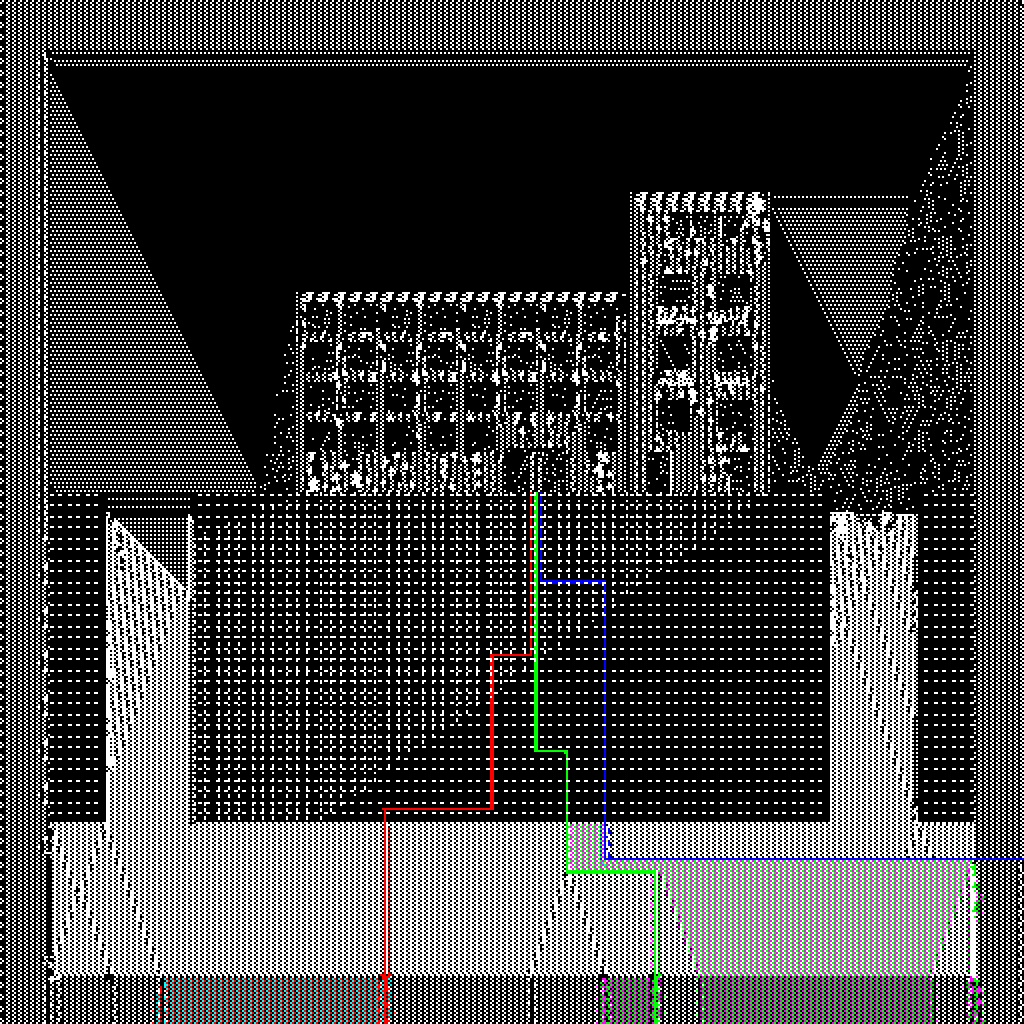
apt06
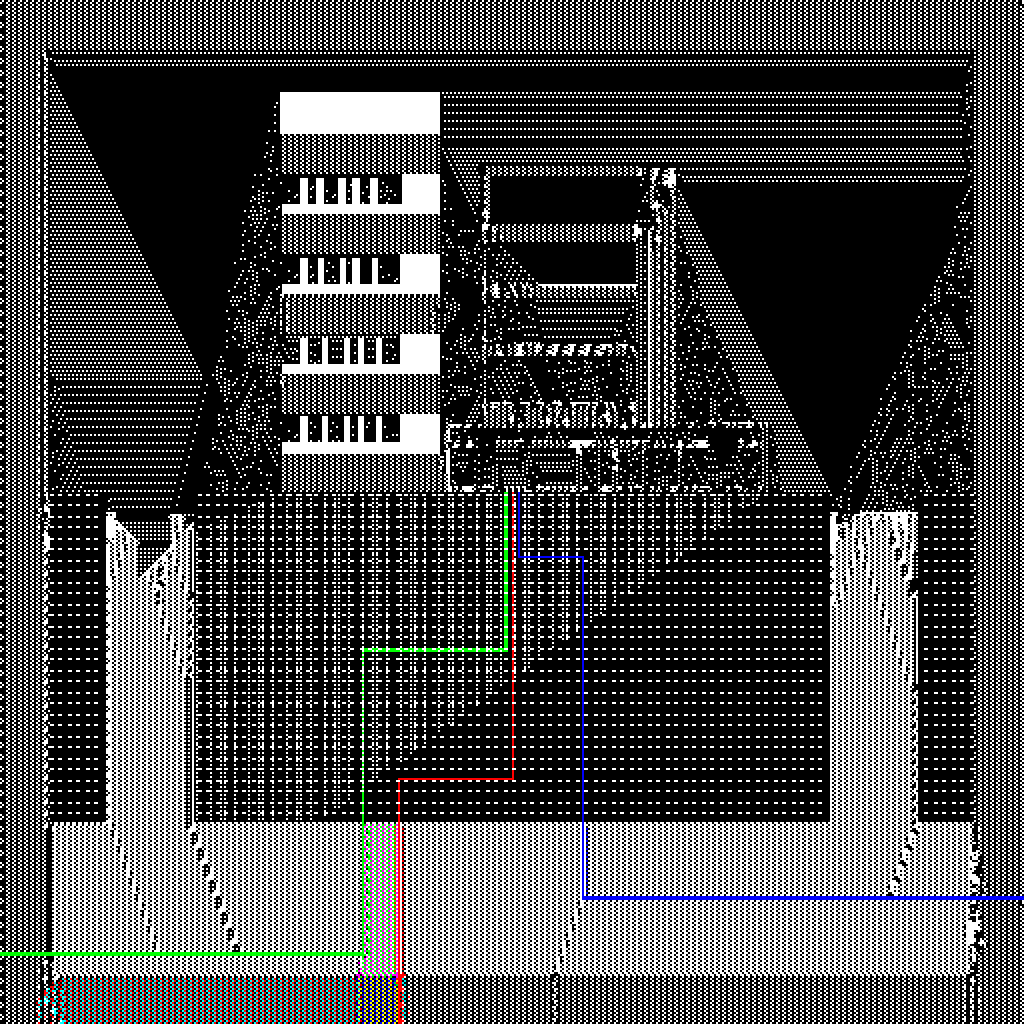
apt10

apt11
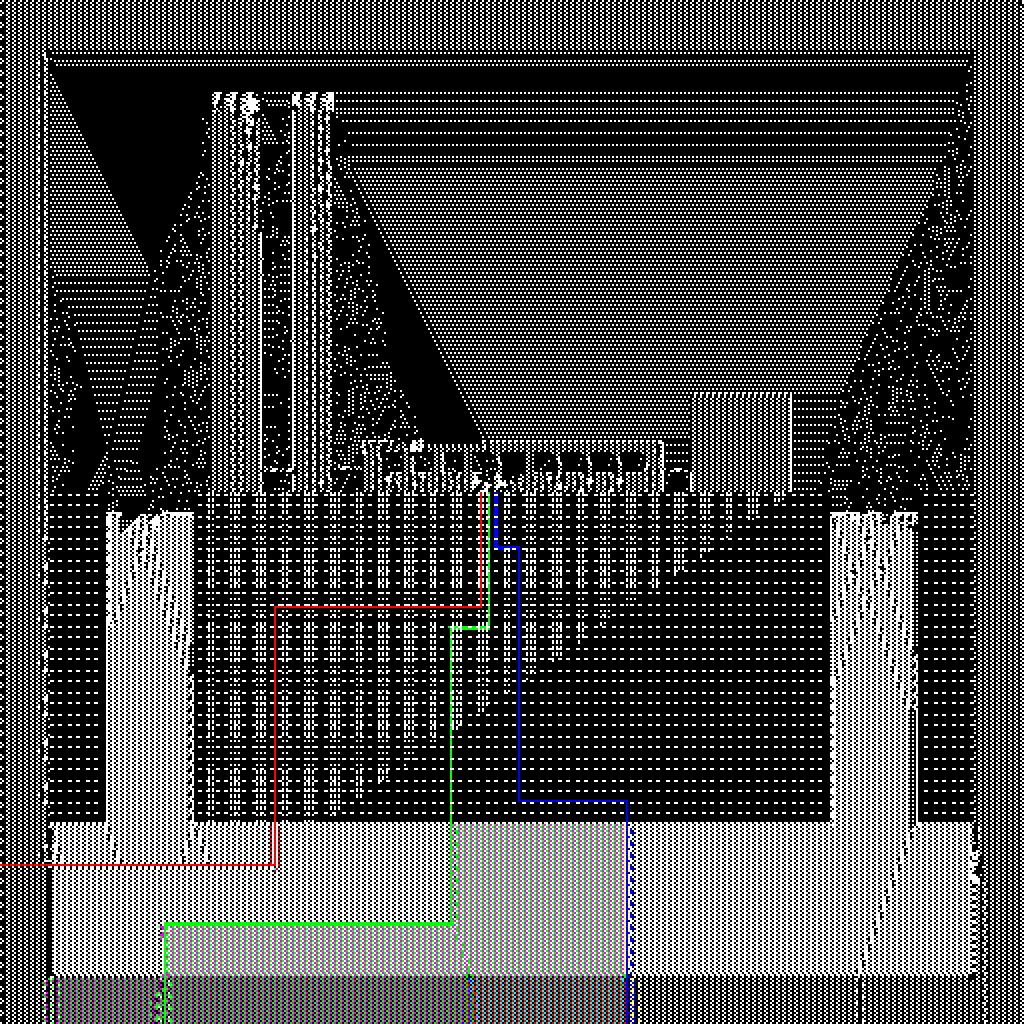
factory03
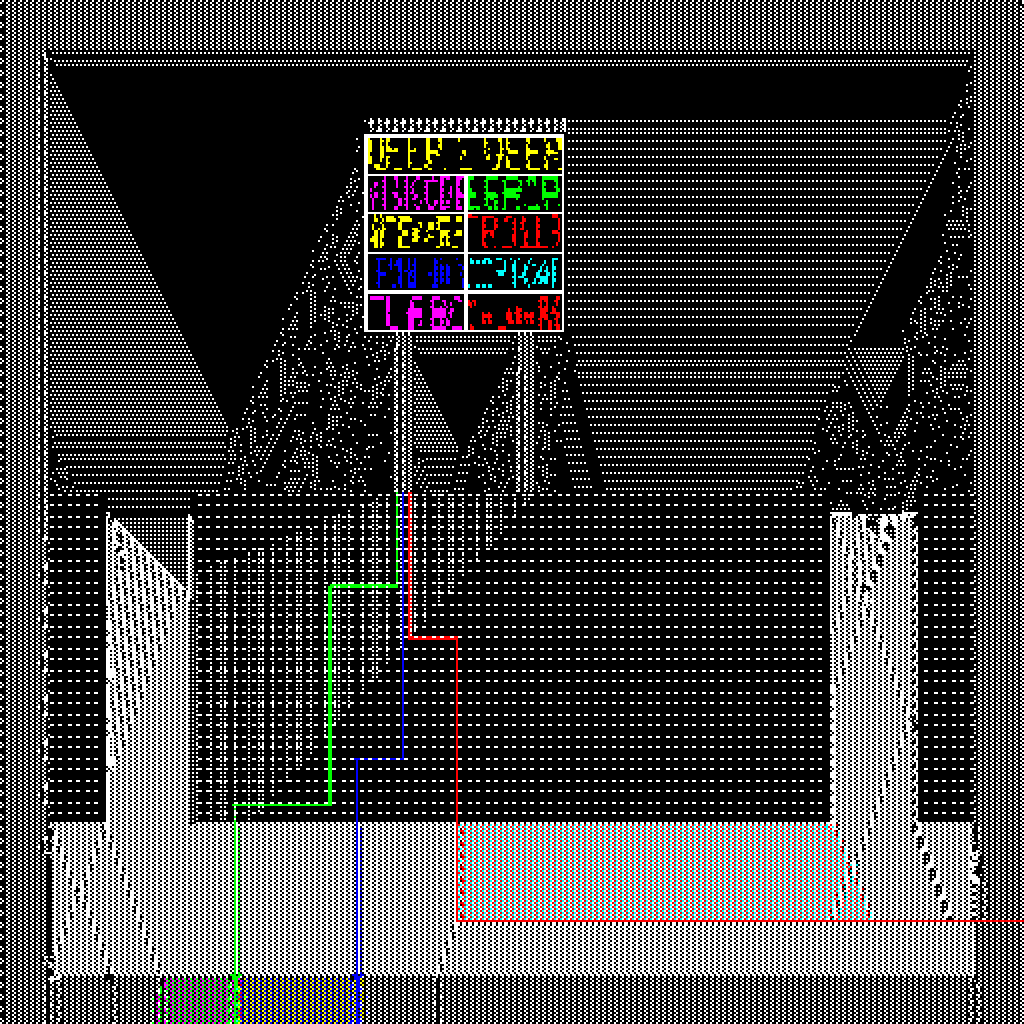
shopping06
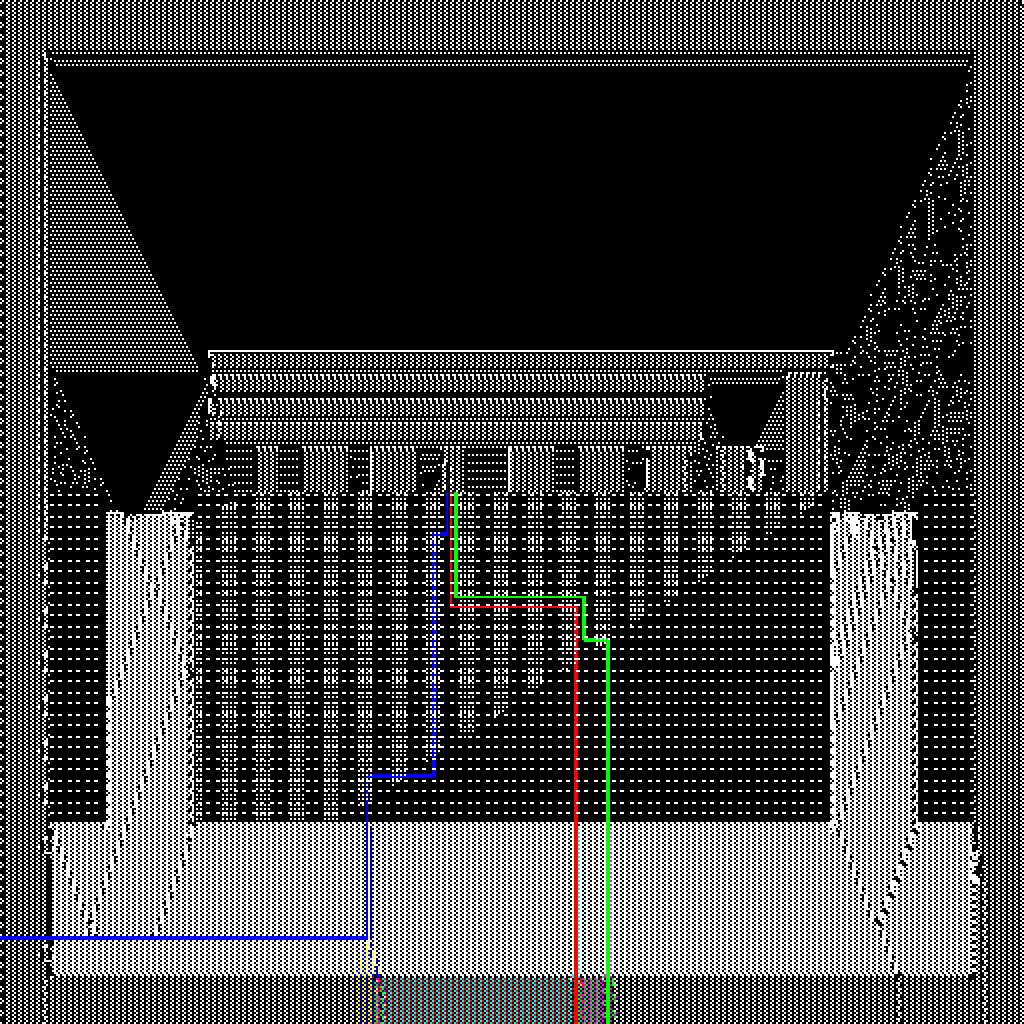
office02
Compersion
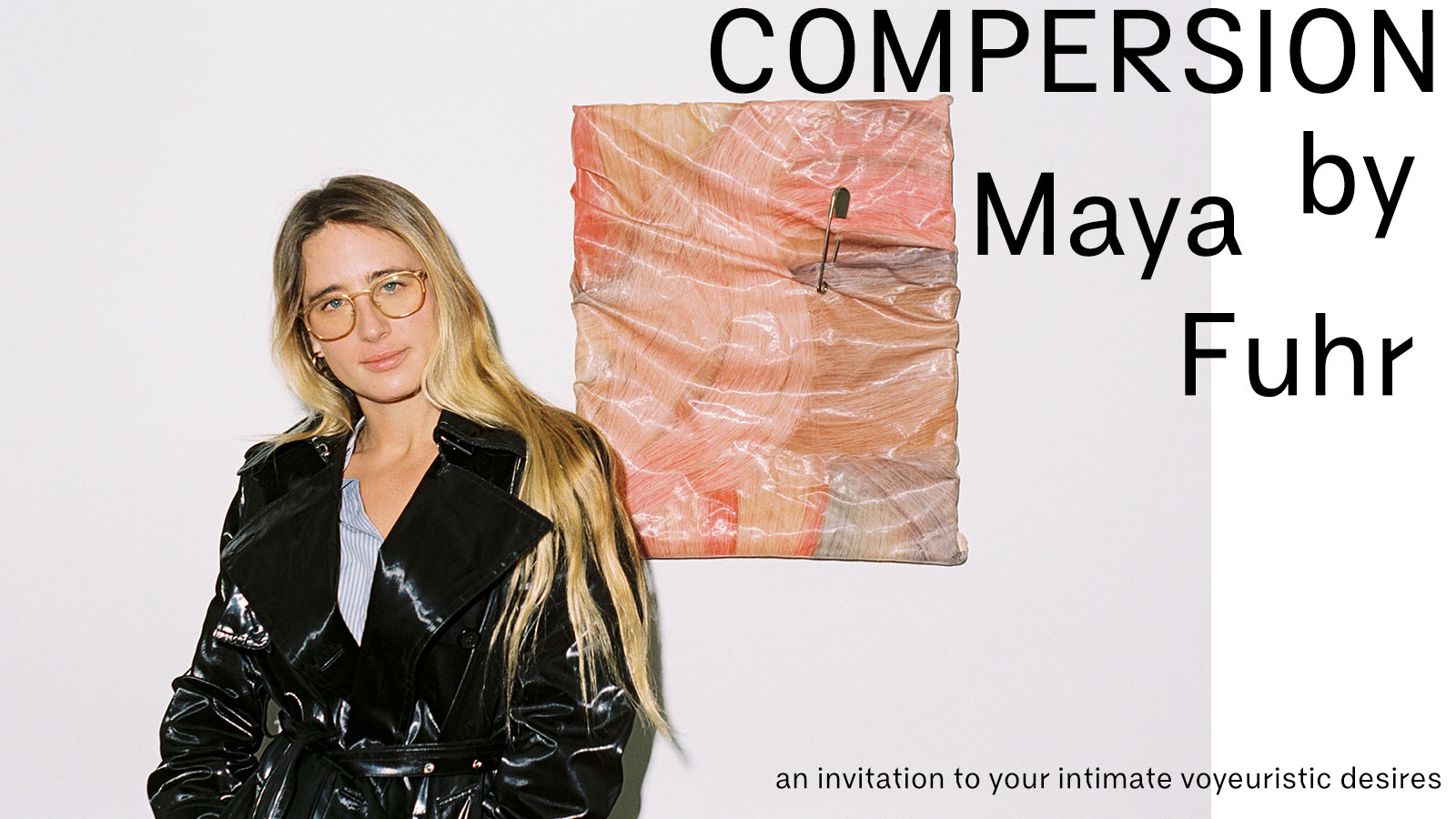
COMPERSION (noun): The gratification we feel for somebody else, even when their positive experience does not involve or benefit us directly. This is not just an uncommon word coined to describe some kind of feeling by someone some decades ago; it is also the title of Los Angeles-based artist Maya Fuhr’s first U.S. solo exhibition. Having just finished a joint-exhibition with some local ceramists and artists in Aldo Chaparro Studio in Los Angeles, Maya delve into the preparation of her solo exhibition straight away. With only one day to the opening of her exhibition, CAP 74024 is here speaking with Maya about her concept, her artwork and her journey on the creation of the sensational yet sensible exhibition Compersion.
Hi Maya, thanks for taking time to with us! How’s your day?
Hi, thanks for asking. I’m good – I put some oil in my car this morning and noticed the white flowers have blossomed on the trees on my street, and now i’m painting with pink latex. I just made a new batch. Feeling replenished and refreshed this morning!
Glad that you had a replenished and refreshing morning! It’s such a lovely way to start your day by doing things you like and having some cute little discoveries that makes us feel happy and blissful. As you mentioned about you had just mad some pink latex painting this morning, we would like to know more about your art! You have just participated in a joint exhibition Ceramique with other artists, with the aim to fund the non-profit project CLAYDD. How did the exhibition go? How was the experience?
The exhibition was super successful, we raised money through art sales to enable us to continue our workshops in the special education programs in L.A schools, and benefiting kids with mental health struggles and special needs. Without the generous donations from the art community, this wouldn’t be possible. It was also a really great way to celebrate the team of CLAYDD and all the artists we love – space is so important. Galleries have the ability to really act as a safe space to bring people together.
I’ve only lived in L.A for 2 years, so it’s been cool to meet a lot of talented artists – Mostly Chicano and beautiful people working with ceramic medium. Community is a huge pillar to my work and Ceramique was a beautiful experience, bringing people together through mindfulness, art, and collectively making a difference in the world. Doesn’t get much better!
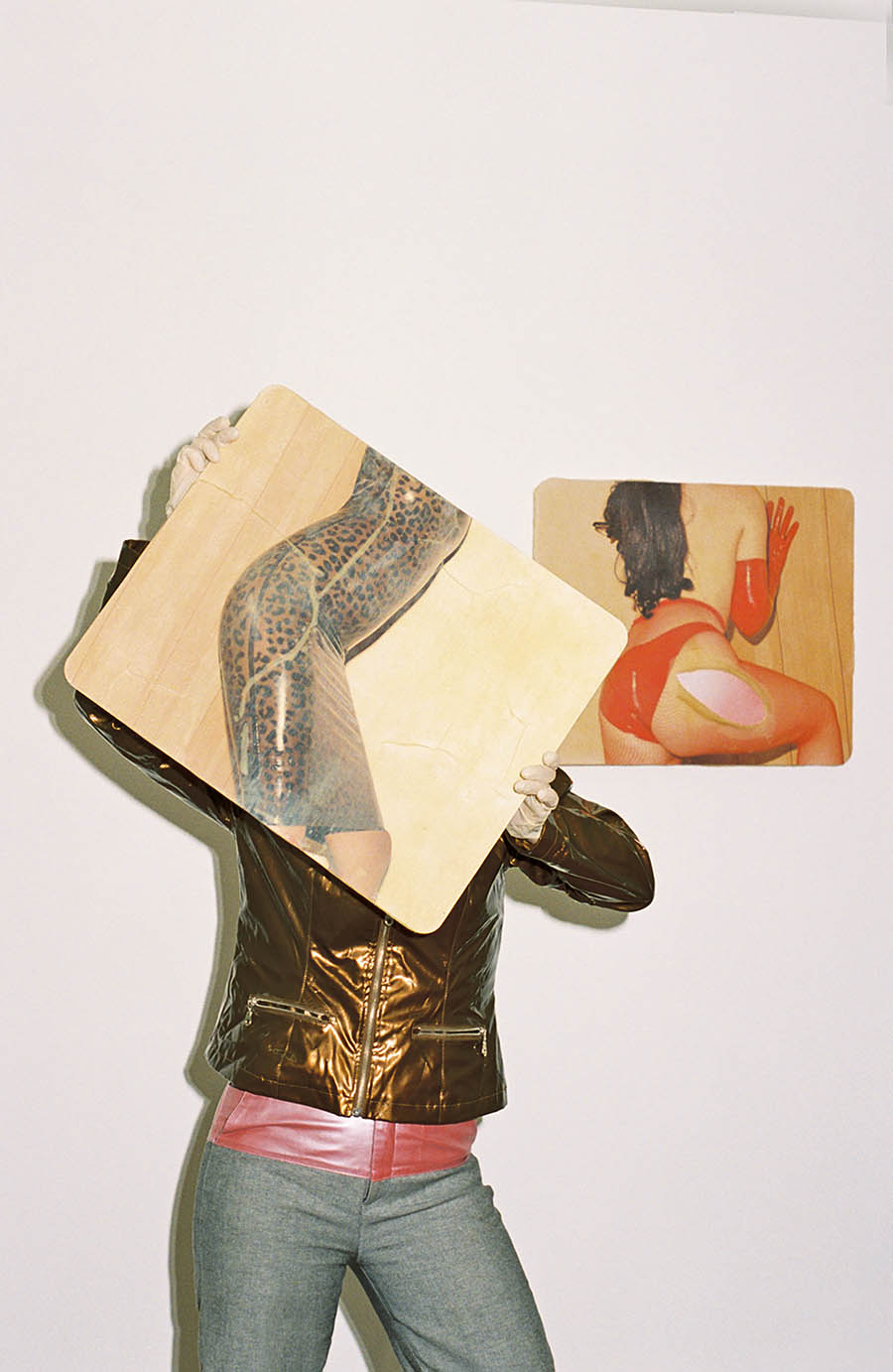
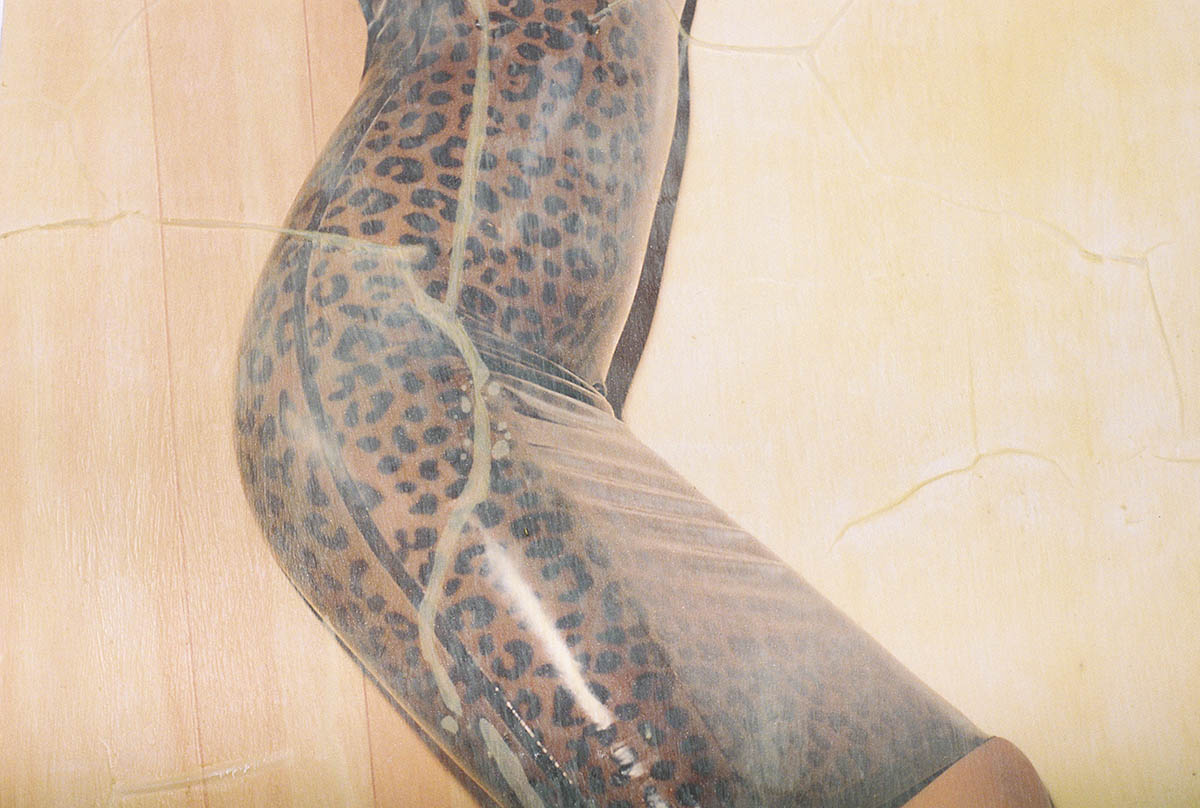
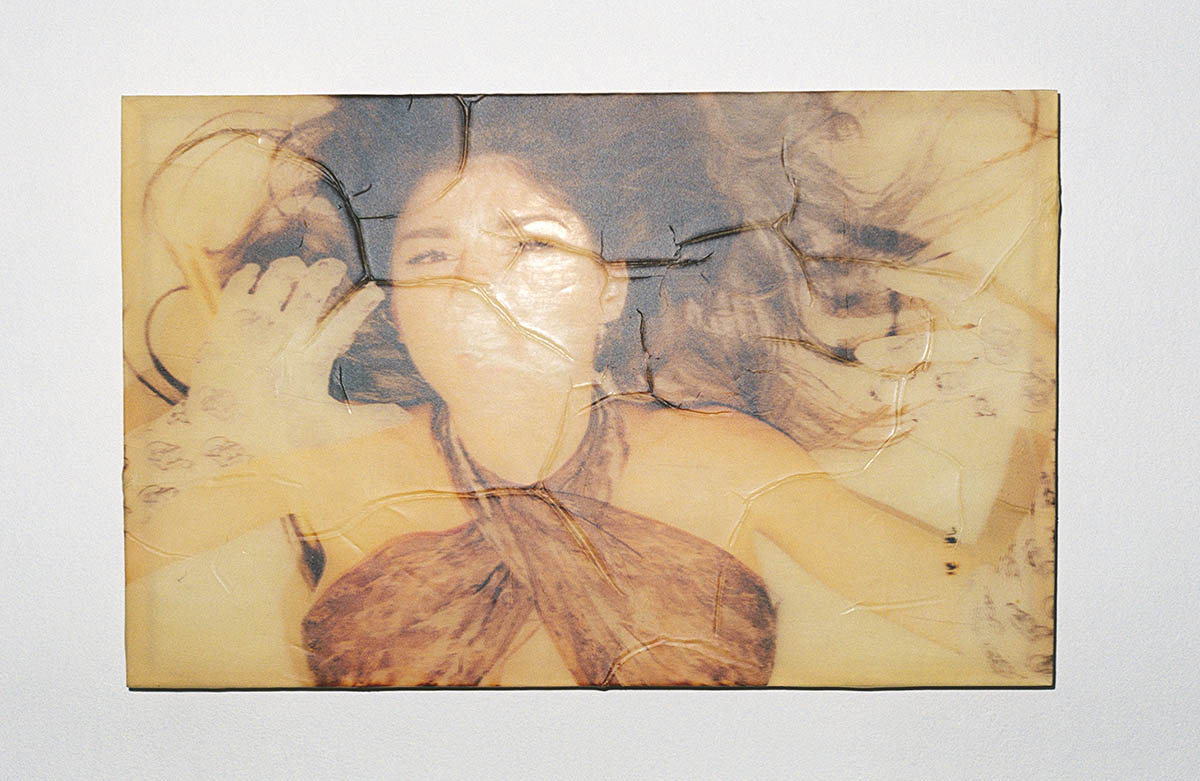
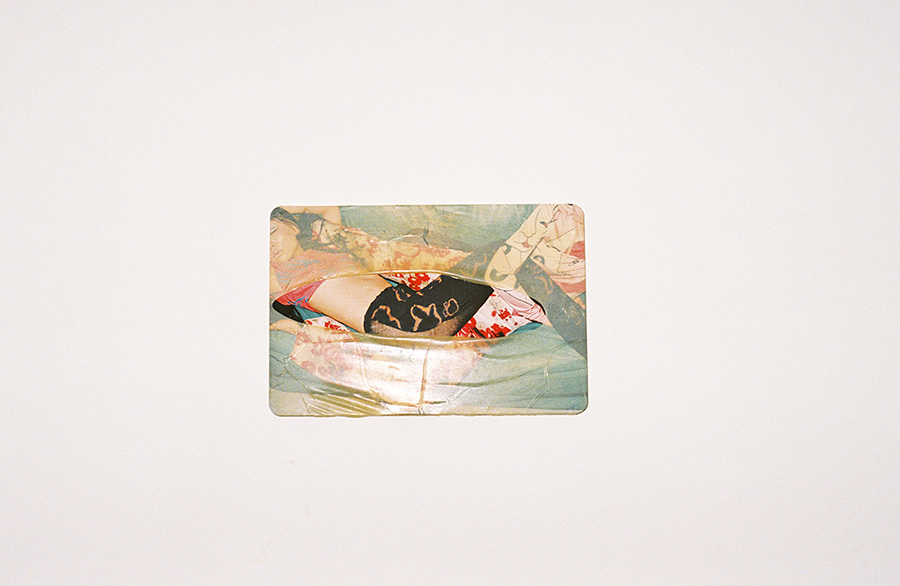
In your upcoming solo exhibition Compersion, you talked a lot about sex, intimacy, voyeurism and desire. Where does this idea come from? And how do you unfold your concept/plan?
Compersion has been quite the process exploring my own desires and stepping back to look at my photography career and this voyeurism that i’ve had permission to develop over the years.
It’s hard to put how I measured it into words – but it started with my photography and the amazing opportunities i’ve had to photograph pornstars, sex workers, celebrities and latex brands. Connection gives me purpose, and I connect with my subjects through the lens. This body of work was a chance for me to get connected with myself again. My studio is in the garage of my house and I felt it was where I belonged. Exploring my obsession with latex, my relationship to subjects in my photographs and my intimate desires that I haven’t truly let myself be seen. I joke that this exhibition is kind of like retreating back to the womb, back to a comfy, safe place. The feeling of latex resembles this womb world. It’s a second skin, secure, personal. I had so much fun with the complete process, and now I want to share it with people and see what “compersion” they can explore for themselves after seeing it.
Even to this date, male gaze is rooted in our society and in the history of art. We’ve seen a lot of female artists talking about sex and reinterpret women’s body from their perspective. What are your thoughts about this trend and transformation? Do you think that female gaze renders a different perspective to the male gaze? What do you see in sex and women’s body when you look at it?
You know, when I started out my career in the mid 2000s, it was in a very trendy time of a new wave of feminism inspired by the young female photographers that were working, and i’d always be asked these questions about being female and I never knew how to answer them. I was confused about how being a female had anything to do with my work. It’s not until I got older, I’m 33 now, where I’ve had time to really be with myself and get to know myself as a human and woman. I now get that vulnerability is grounding, and it’s uncomfortable sharing that side of myself with the world – but it’s easier now to put it into words. I can’t see sex and woman’s body generally – we are all so different, but what I can speak from is my own personal experience being this woman and having this body. The male gaze does not complete me, being turned on doesn’t depend on it either. What reinterprets my body from my perspective is feeling sexy, it’s “compersion”, it’s through what I get to wear on my skin, it’s through breath, it’s through all these things that I didn’t learn growing up being a young woman. Hence, I navigated my sexuality and my body on my own, aside from how other people viewed it. Girls can be told their imperfect, educated about their body and how to pleasure themselves: I hope there’s a future of that. For this exhibition, I’m partnering with Non-Profit Centre for Positive Sexuality that is committed to research and sex education on this.
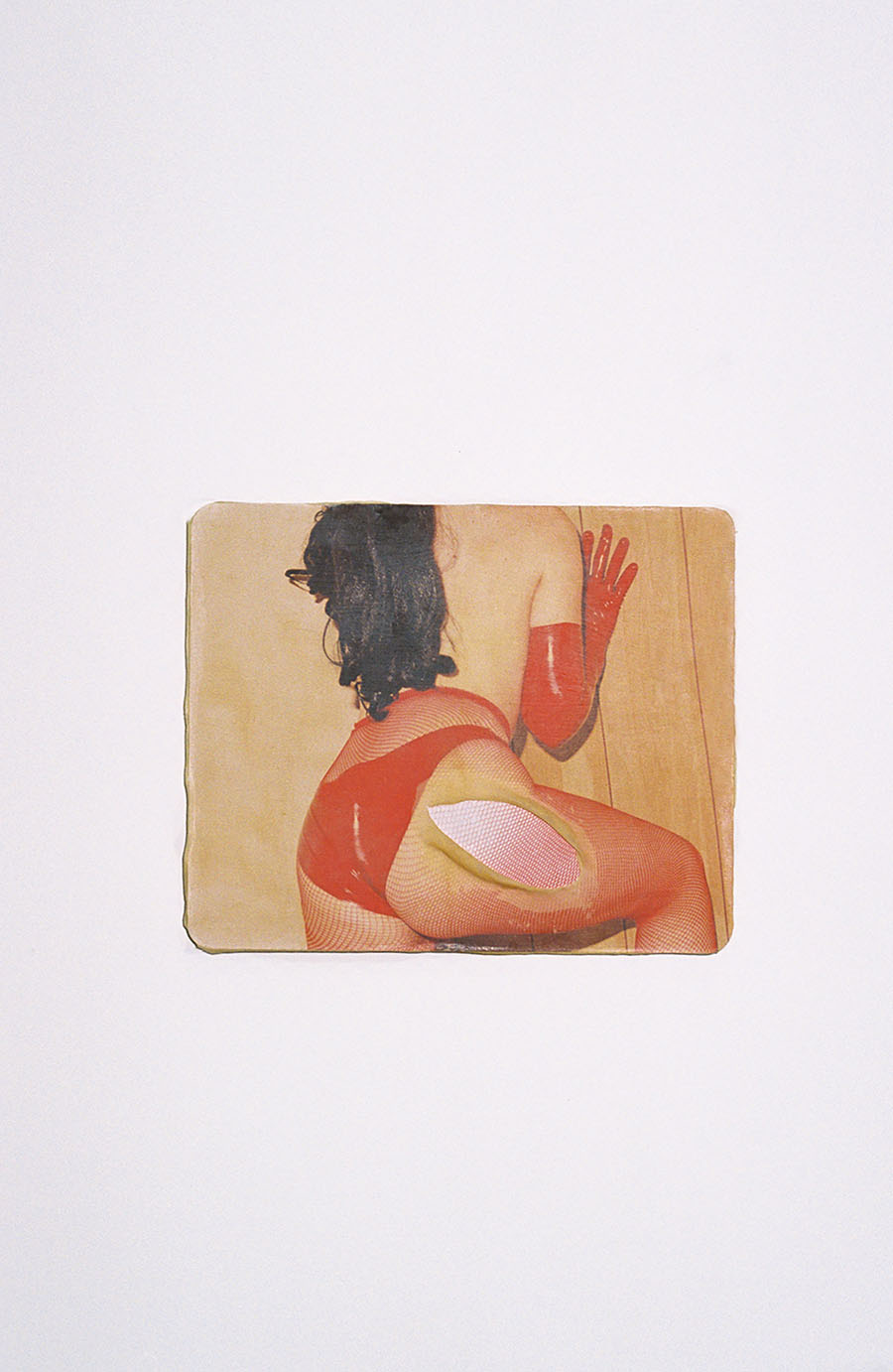
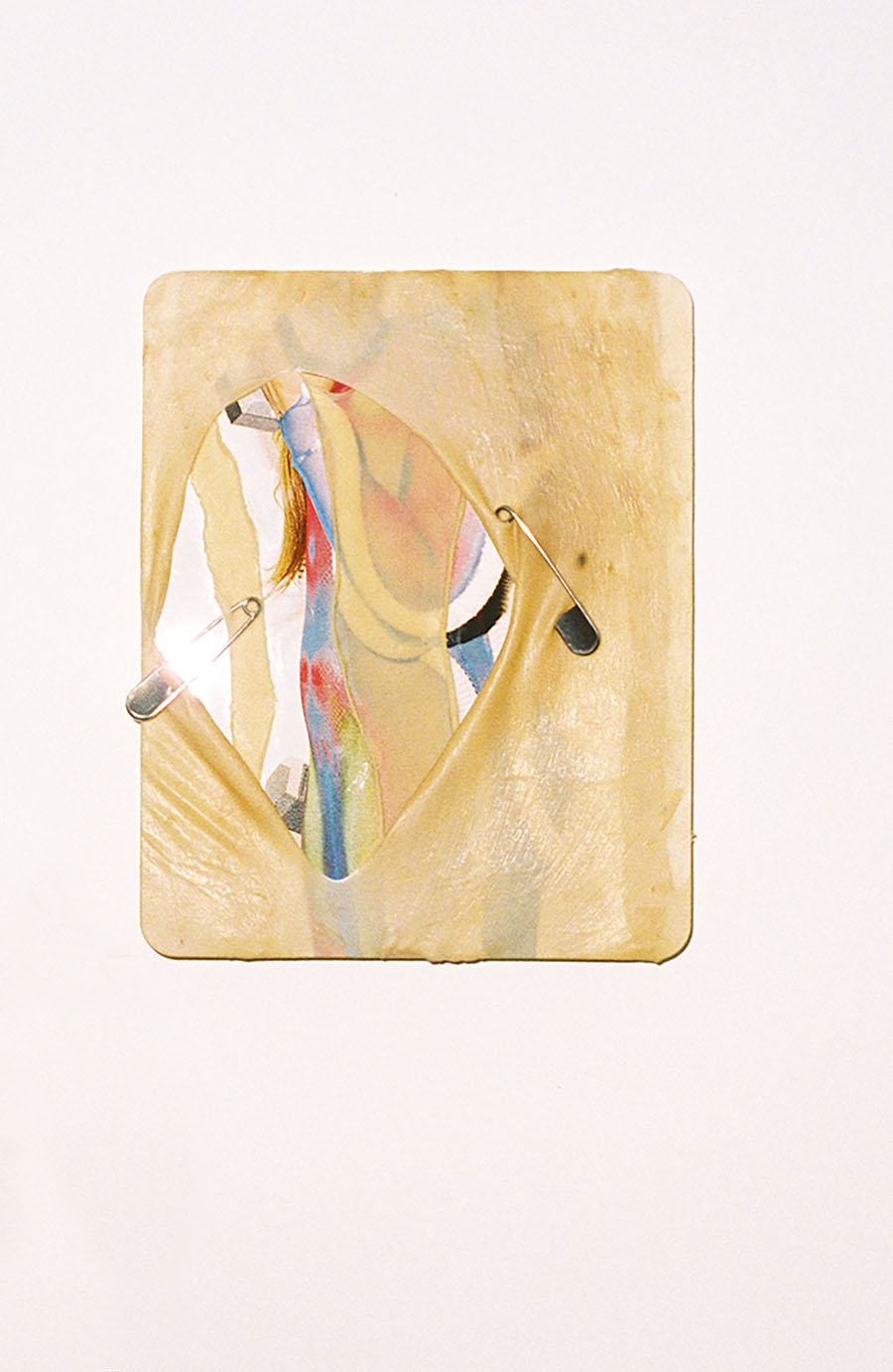
The title Compersion isn’t a frequently used word and concept in English, what was the reason you title your exhibition with this word, and what is the story behind it?
Compersion is a Buddhist practice that we can all learn from. By definition it’s a wholehearted participation in the happiness of others. It is the sympathetic joy we feel for somebody else, even when their positive experience does not involve or benefit us directly. Thus, compersion can be thought of as the opposite of jealousy and possessiveness. The poly-community coined this term about 40 years ago as feeling of joy from others’ pleasure, specifically celebrating your partner(s)’ other relationships in a polyamorous structure. My goal is that people can experience this feeling at the gallery, by interacting with the work and watching other people. Some of the subjects in the work are dominatrix, porn stars, drag queens – and in a way, their work allows for compersion. I’m inviting people to ask themselves what they could discover from compersion?
In this exhibition, you invite the viewers to interact, or to say touch, your sculpture for the investigation of their inner voyeuristic desire and intimacy. What was the concept and idea behind this design? Is there any expectation you wish the viewers to achieve or gain from this interaction process?
Latex is such a tactile material. I personally get so much joy from touching it and wearing it, but it can fulfill different desires for people that aren’t just directly visceral. For example, doctors wear gloves, there’s a distance between them and the patient. There can be a forbidden quality too. Latex can be skin-like, satisfying; and it also has a clinging protection. I’ll be providing pink surgical gloves and oil so some of the pieces can be felt. I’m curious to see what different people will get out of it. It’s not just sexual, it engenders healing. There’s also an inflatable piece called “Pony Tail” that I collaborated with Rat Studios on. You can touch the artwork, walk under it and be transported into another world of escape.
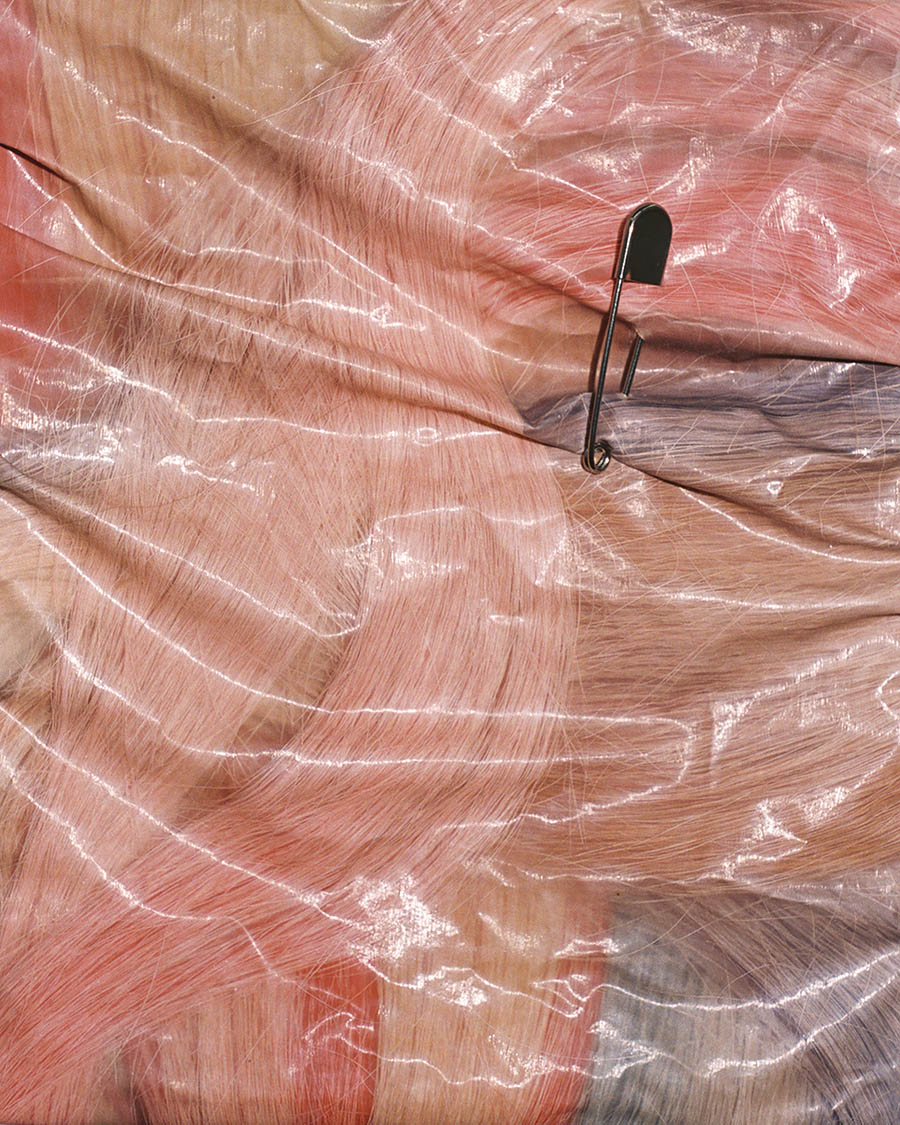
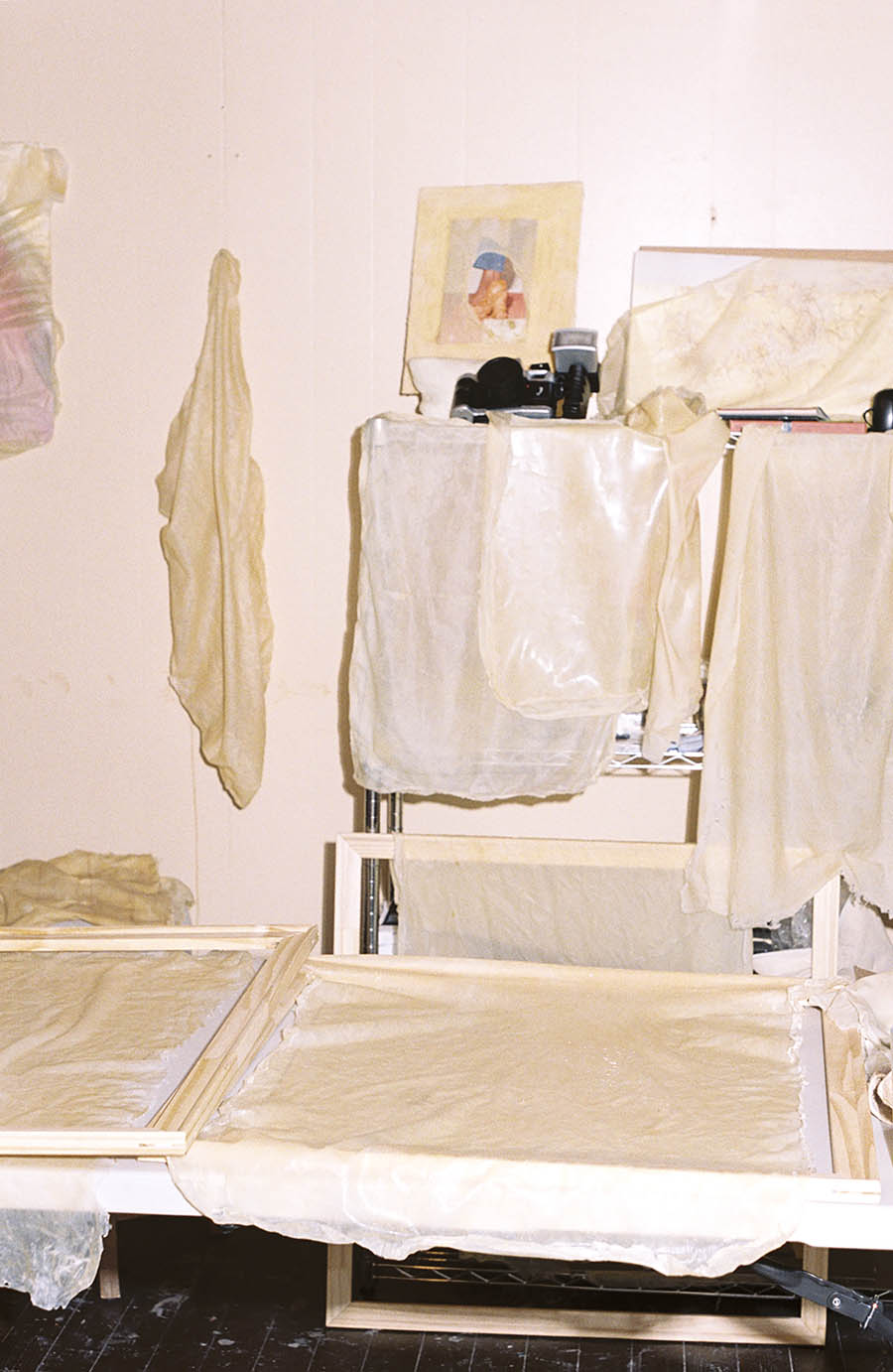
After hearing so many interesting stories about your exhibition and your artworks, we are wondering what are the messages you want to convey behind your art?
A safe space to explore desire.
If you can conclude the exhibition with one sentence, or even more, in one word. What would it/they be?
COMPERSION!
LOL! That’s indeed a very succinct, simple yet the most punctual word to describe your exhibition. Thank you for taking time to have this talk with us today. Would you mind sharing some of your future plans with us? In artistic creation or personal growth, we’d like to hear everything you’d like to share! 🙂
I’m looking at a special art residency in Mexico City, my latex work has just begun and I’m excited to develop it further. I’m also collaborating a lot within the non-profit CLAYDD and further growing our team, with lots of more meditation and clay workshops to come!
I’m going to camp more because it’s starting to get warm in L.A, and I usually travel with my photography work – so who knows where that will take me. All in all, I’m taking on being present, playful and trusting. Making sure i’m enjoying the experience along the way, and not thinking tooooo far in the future. 😉
Interview by Yves Tsou
Homecoming / 回家的路
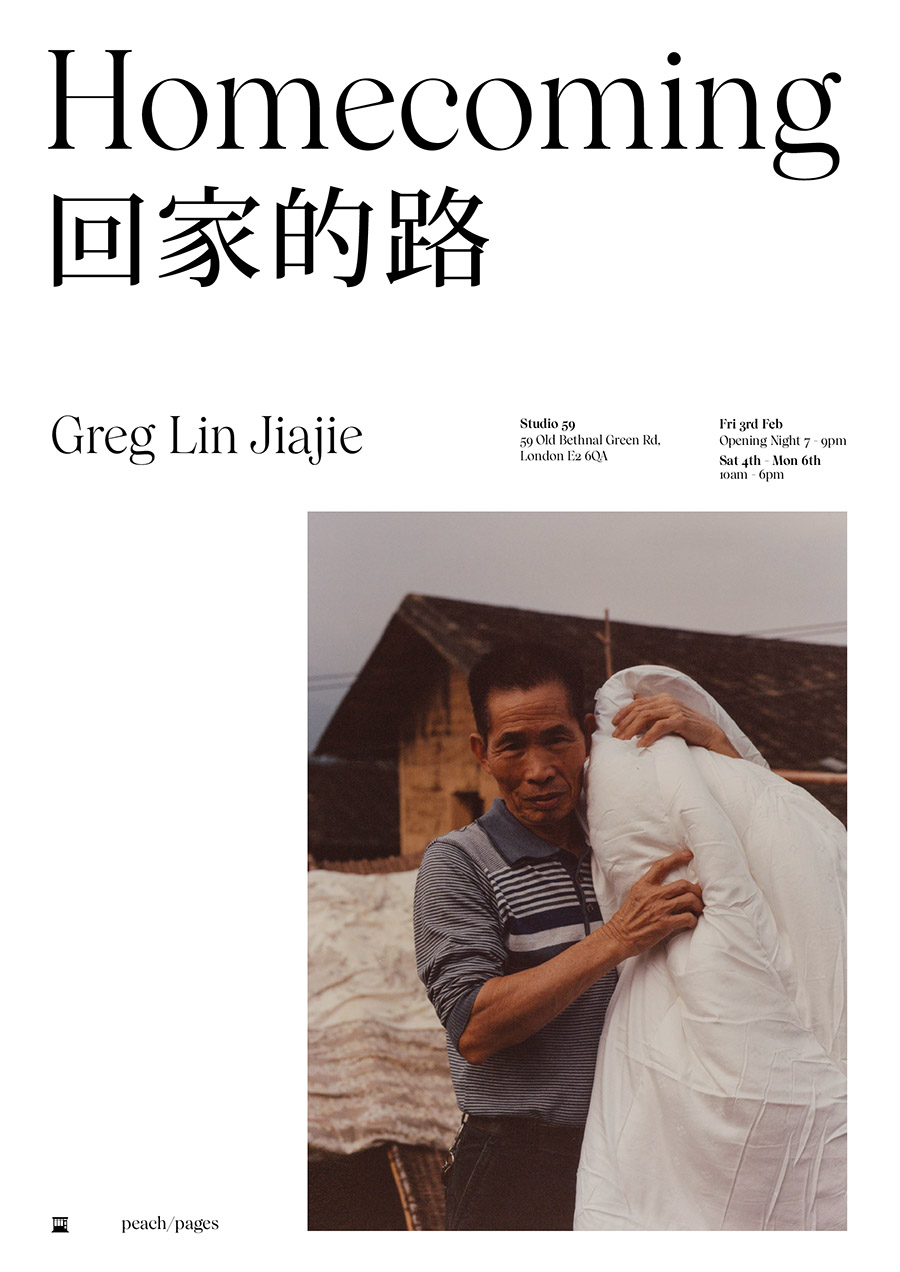
Going home might sounds easy, but is incredibly difficult for some people. For people who lives in a big city like London, home is not just a small corner in this massive metropolis. “What is home and where is it?” is what many foreigners constantly ask themselves when they are alone in the dead of night. For them, the definition of home is so simple, yet so unreachable.
Inspired by this complex feeling, Homecoming is the first solo photography exhibition of Chinese lens-based artist Greg Lin JiaJie. Noted for his intimate approach to photography, Greg’s work displays a strong sense of narrative throughout. He extracted the essence of his long-term Project Fujian and curated this exhibition. The exhibition will be held at Studio 59 Gallery in East London from Friday, February 4th to Sunday, February 6th, 2023.
Hailing from a small village in Longyan, Fujian, Greg Lin JiaJie left his hometown alone 11 years ago to study abroad. He likes to record the fragments of life through photography. Every time he returned to his hometown, he found out that people, things and scenery from his childhood memories were changing bits by bits. Under the policy of rural industrialization and the rapid development, much of the open land in his hometown has been replaced by factories. These factories created a polluted environment, which led to more land being abandoned. Villagers moved away from the village in pursuit of a more convenient modern life, and the familiar environment is gradually disappearing. He compared his hometown today to those photos of his hometown that he has taken in the past and asked, what caused such a big change in our lives?
The exhibition contains five walls of printed photography, displaying five aspects about “Homecoming”. On the first wall, Greg uses the largest print to showcase the traditional culture, customs and traces of past in his hometown, so as to express the beautiful memories of the good old days. At the same time, it projects his care for humanities, traditions and local culture.
On the second wall are three smaller frames of printed photographs juxtaposed to resemble a triptych. Titled “A Witness Tree”, the work is actually sequential pictures that Greg took while he slowly passed by the tree in a car. Unlike other of his works which he has to adjust the angle, the light and other elements, the spontaneity and originality of these pictures made him decide to keep them. From a distance, the protagonist of the work seems to be the old tree, but when the viewers look closely, they will find that the main story that Greg wants to tell is actually in the background. Behind the tree, some buildings are under construction, and it won’t be too long before the scenery will be completely different. Through the photos, he invites the viewers to imagine the future of this tree and this landscape, as well as the changes brought about by economic development and industrialization.
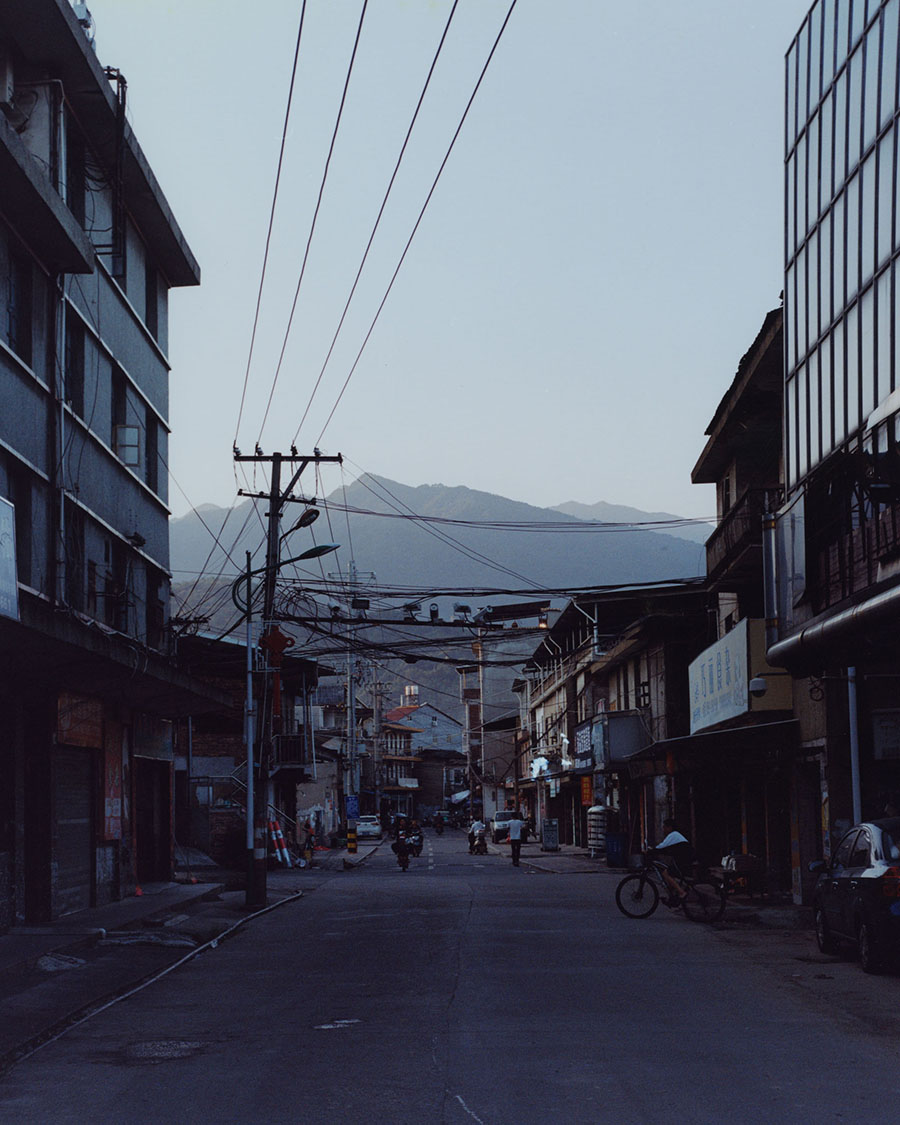
The Way Home © Greg Lin JiaJie
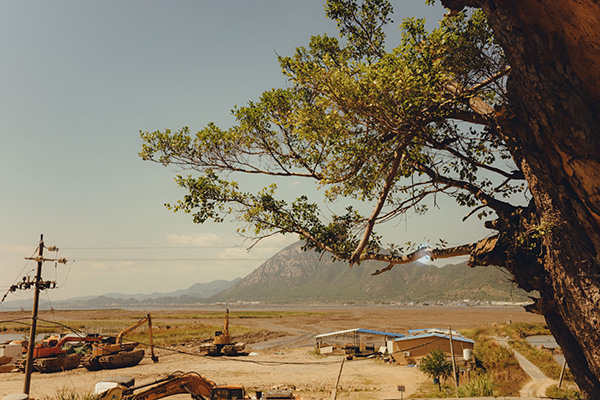
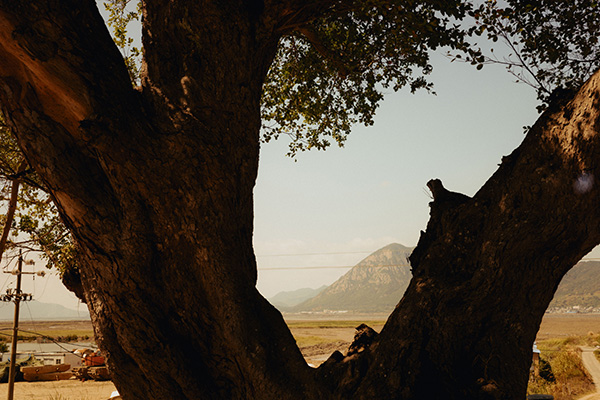
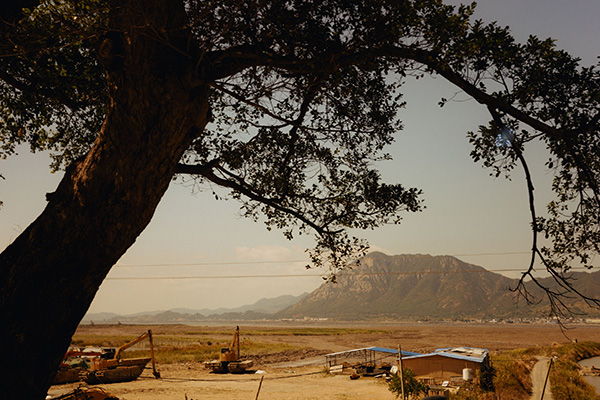
A Witness Tree © Greg Lin JiaJie
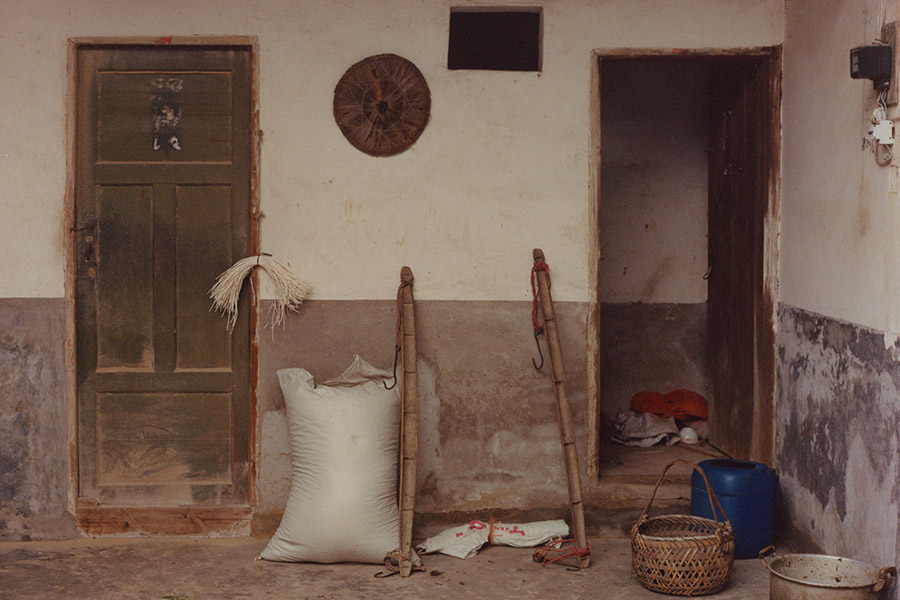
My Ancestral Home, 2 © Greg Lin JiaJie
Starting from the third wall, the size of the photos on the wall began to get smaller. Plastered with photos of Greg’s hometown, these are the earliest works in his entire project Fujian. The purpose of the work is to simply document the landscape and the environment of his hometown from an aesthetic point of view. Greg hopes to keep these most pristine and straight-forward images in the exhibition as a symbol of his nostalgia and love for his hometown.
The theme on the last two walls gradually shifts from environment to humanities. On the fourth wall, Greg documents the living conditions of his old countryside home. The house is where he and his twin brother grew up, and the field is the property that once supported the household. After the new policy of rural industrialization was drawn, the industrialization of agriculture and the conversion of land into factories resulted in environmental pollution and economic impacts. These factors led villagers to leave the village to make a living in big cities. The roads that have been treaded, the land that has been planted, and the tools that have been used were abandoned and left unattended, and even became worthless in the eyes of others. Greg composed a swan song through images for his old house. The land that was once productive is now barren, and the house that was once full of people is now uninhabited.
The last wall is full of stories about “people”. The protagonists in the images are Greg’s grandfather, twin brother, cousin who still lives in the village, and the neighbor’s kids. This is Greg’s memory of his childhood and his hometown; it recorded the transition that has happened in these places. People and their life are the stories on this wall, narrating his hometown’s past, present and future.
For hundred years, Fujian Province has a culture of “oceangoing migration to the South Sea”. Due to its mountainous, landless and seaward topography, many people in Fujian emigrated overseas and became the mainstream Chinese communities in Southeast Asia, some cities in North America and South America nowadays. Choosing to hold his first exhibition in London, Greg wants to find correlation between his emigratory hometown culture to this multi-ethnic and culturally diverse immigratory metropolis. Having settled in East London for more than eight years, he savvies the Londoners’ feelings of home, especially for those who were born in another country. Through the exhibition, he wants to arouses the viewers’ feeling of wanting to go home. Even though for those foreigners who lives in London, the scenery, the people and the culture in the photos may be unfamiliar to them, but the feeling of missing home is relatable. Greg transformed his nostalgia for his hometown into images, and found a way home for those who visit the exhibition. With an unfamiliar culture and environment, Greg invites them to feel the warmth and emotion brought by the concept “home”.
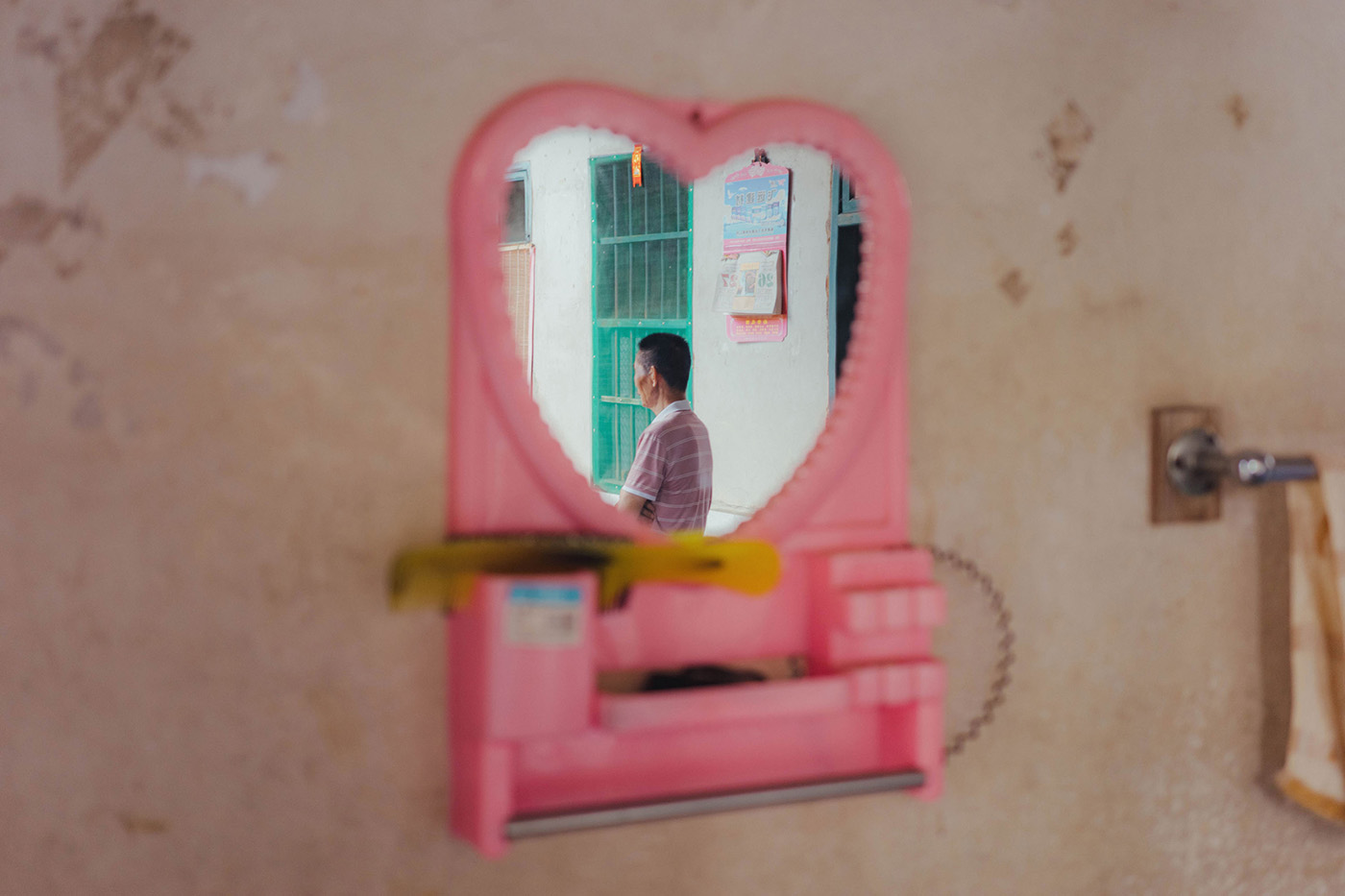
The Pink Mirror © Greg Lin JiaJie
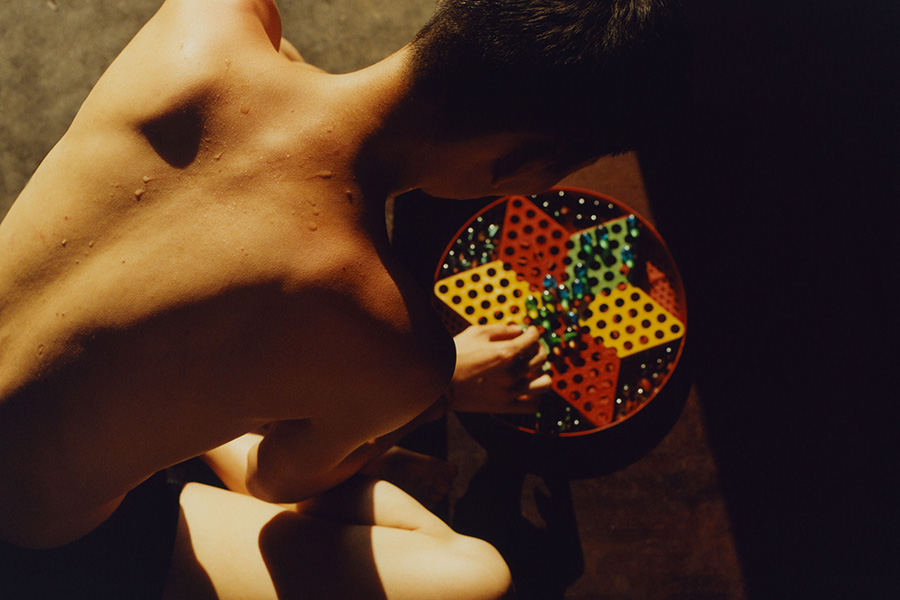
Longyan Boy © Greg Lin JiaJie
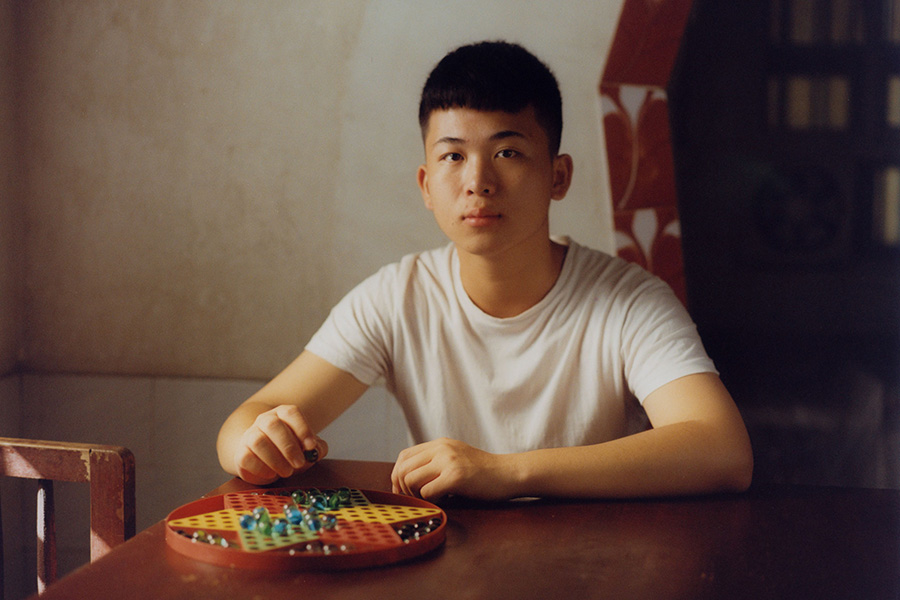
Yuhan At Home © Greg Lin JiaJie
Homecoming is Chinese lens-based artist Greg Lin JiaJie’s first solo exhibition. It will be held at Studio 59 Gallery in East London from Friday, February 4th to Sunday, February 6th, 2023.
Text: Yves Tsou
Rooted
Rooted
Collaboration between Olivia Ghalioungui & Julen Iztueta
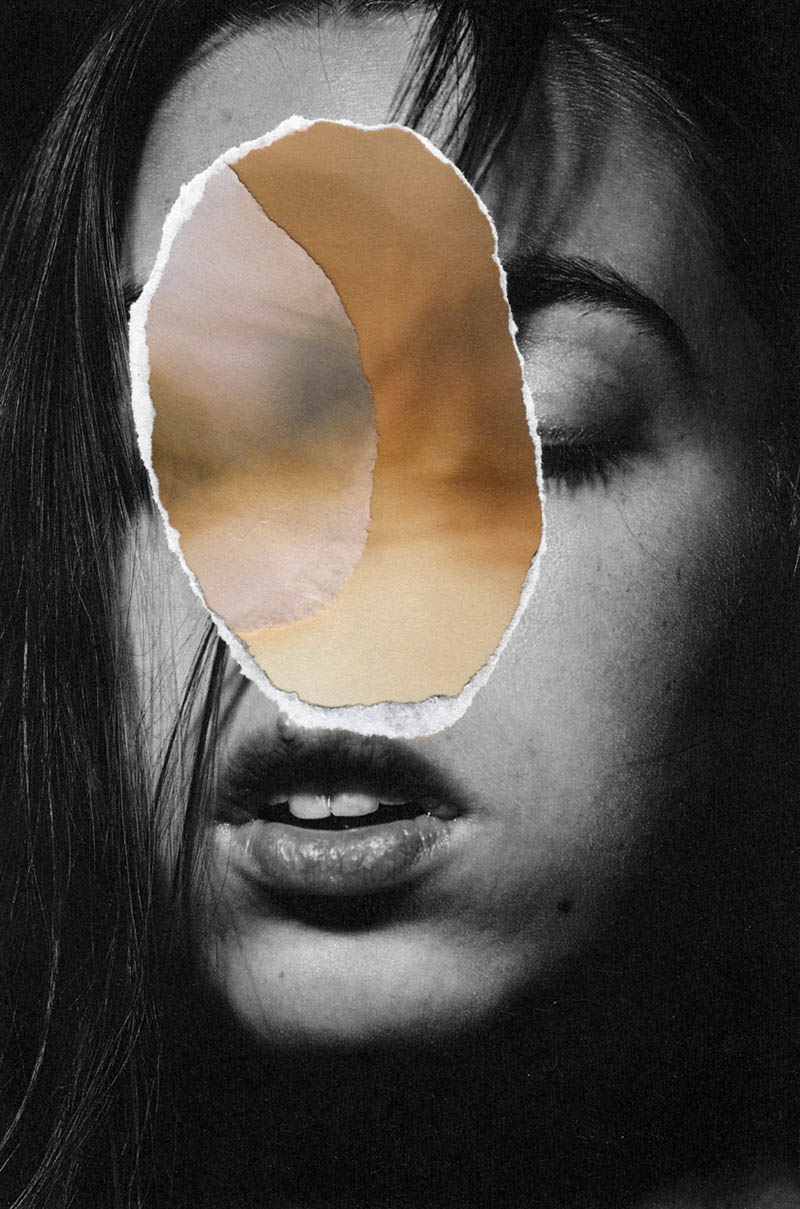
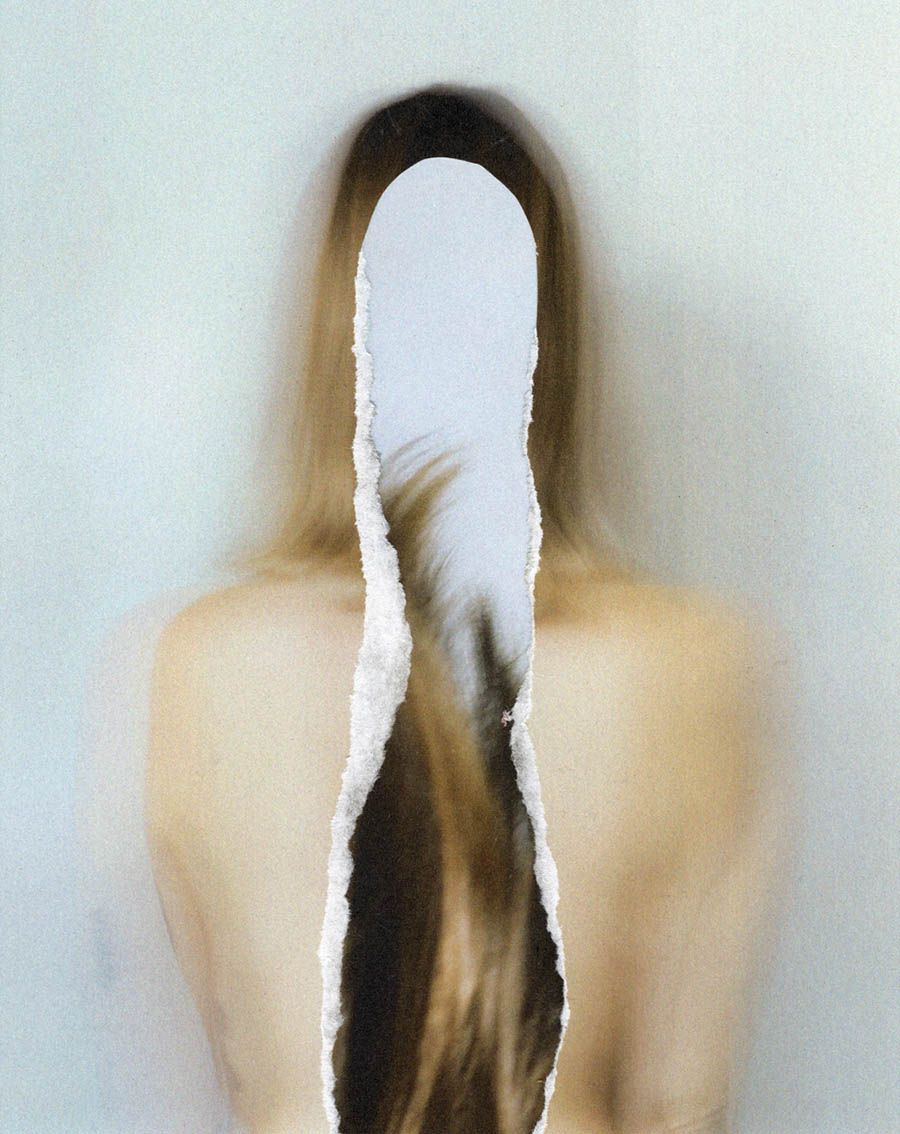
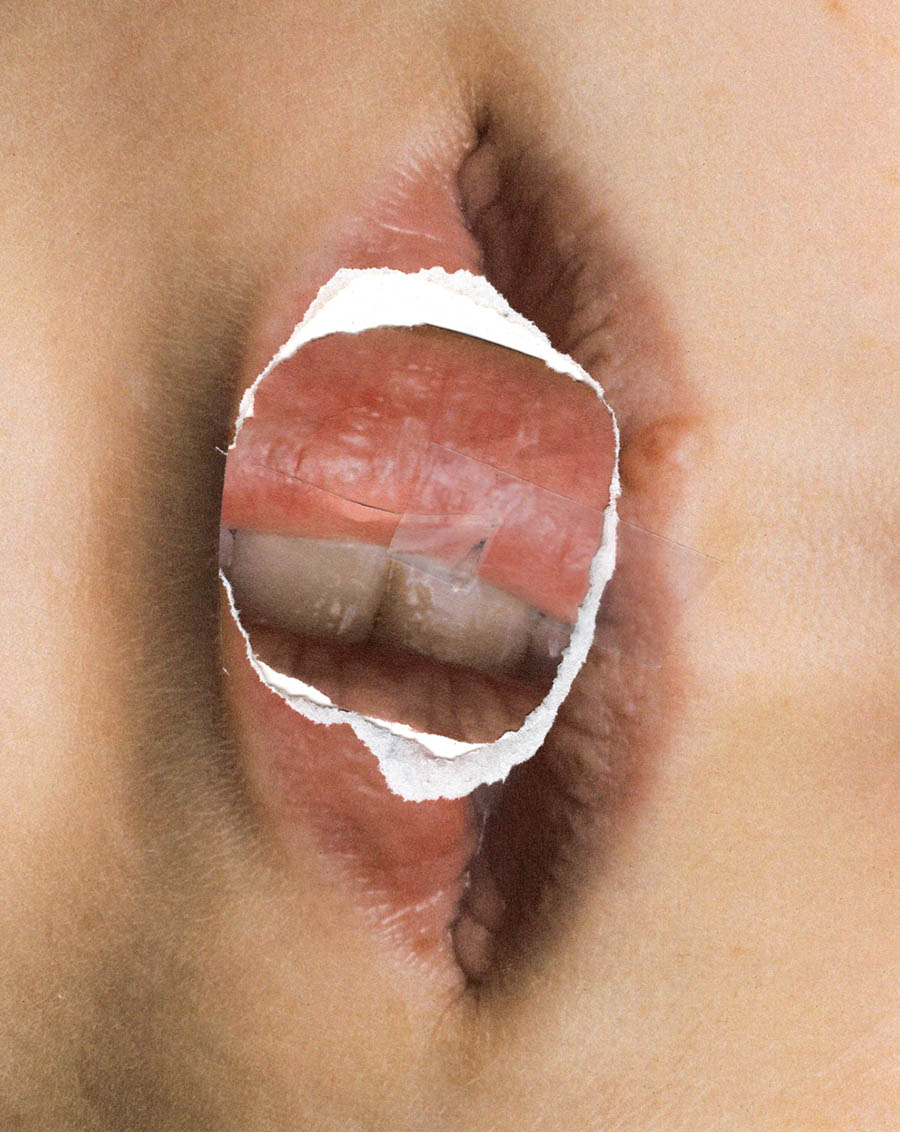
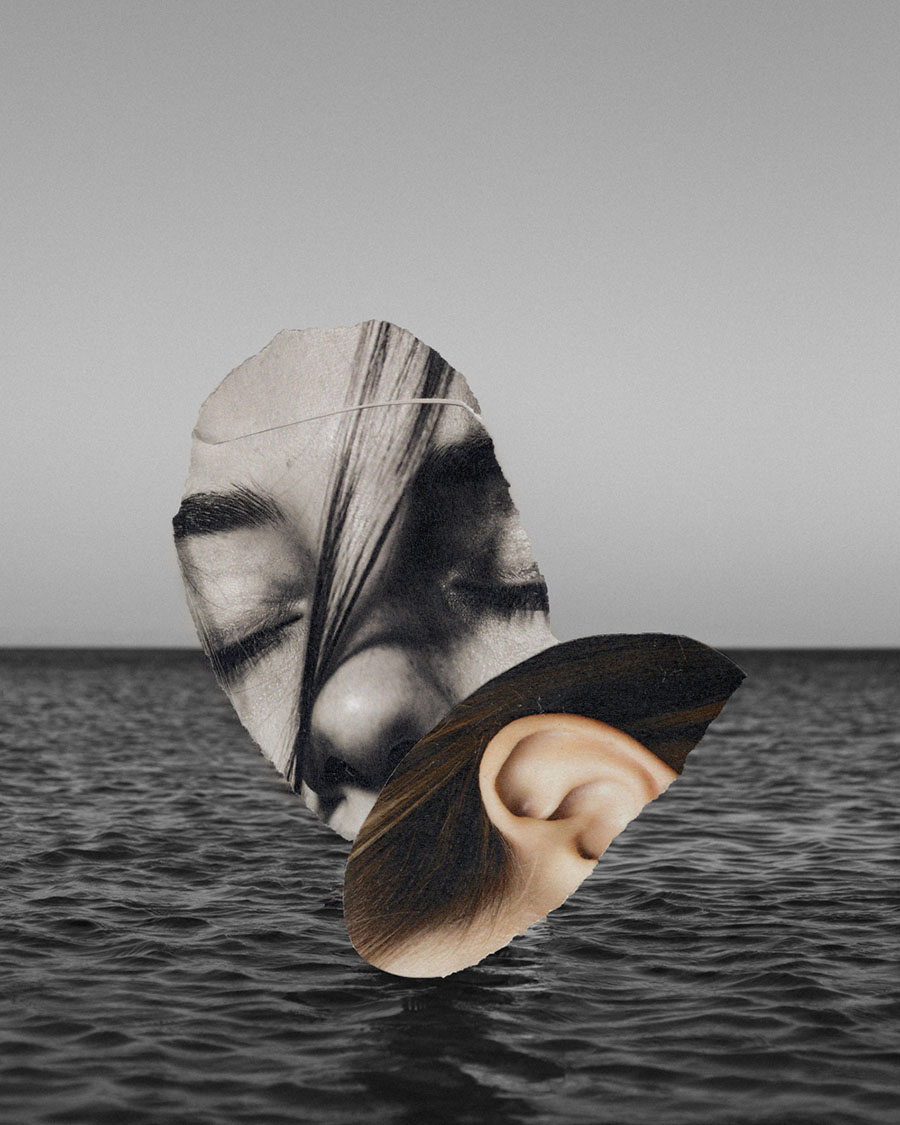
Olivia and Julen collaborated on a series of images, remixing them into collage format to combine the elements that inspire both of them. From nature and the physical body, these inspirations serve as an expression of the identity and the self. Parts of the way we see ourselves may sometimes feel broken and mangled, and a lot of the time people can find themselves in nature again. Through the action of ripping – which symbolizes the aggressive and oftentimes harsh view we have of ourselves, and placing the different pieces in naturescapes, it all seems to fit and the chaos balances itself out again. Then, in some other images, the pieces of the body are scattered, representing the chaos surrounding self-image and identity when lost.
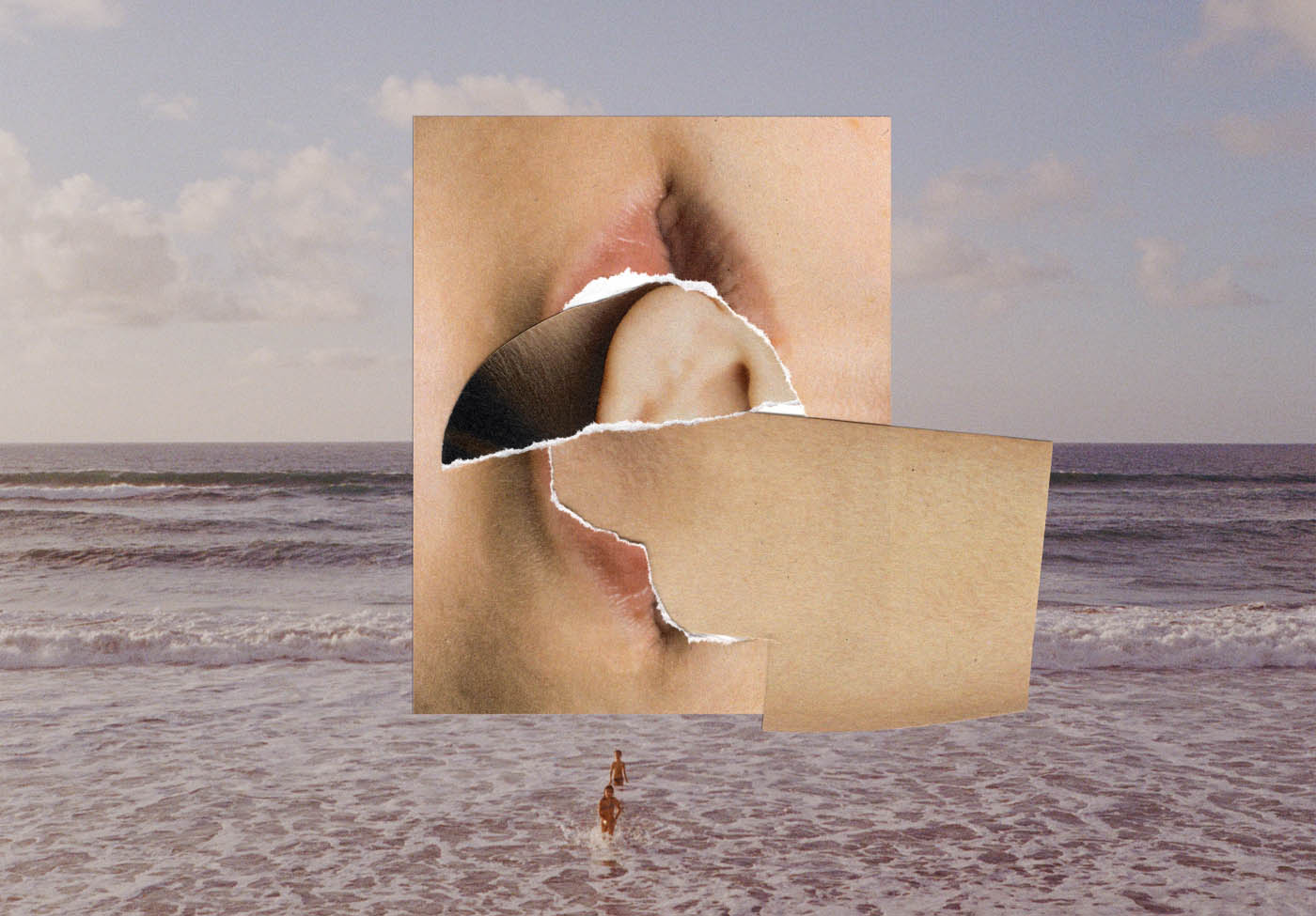
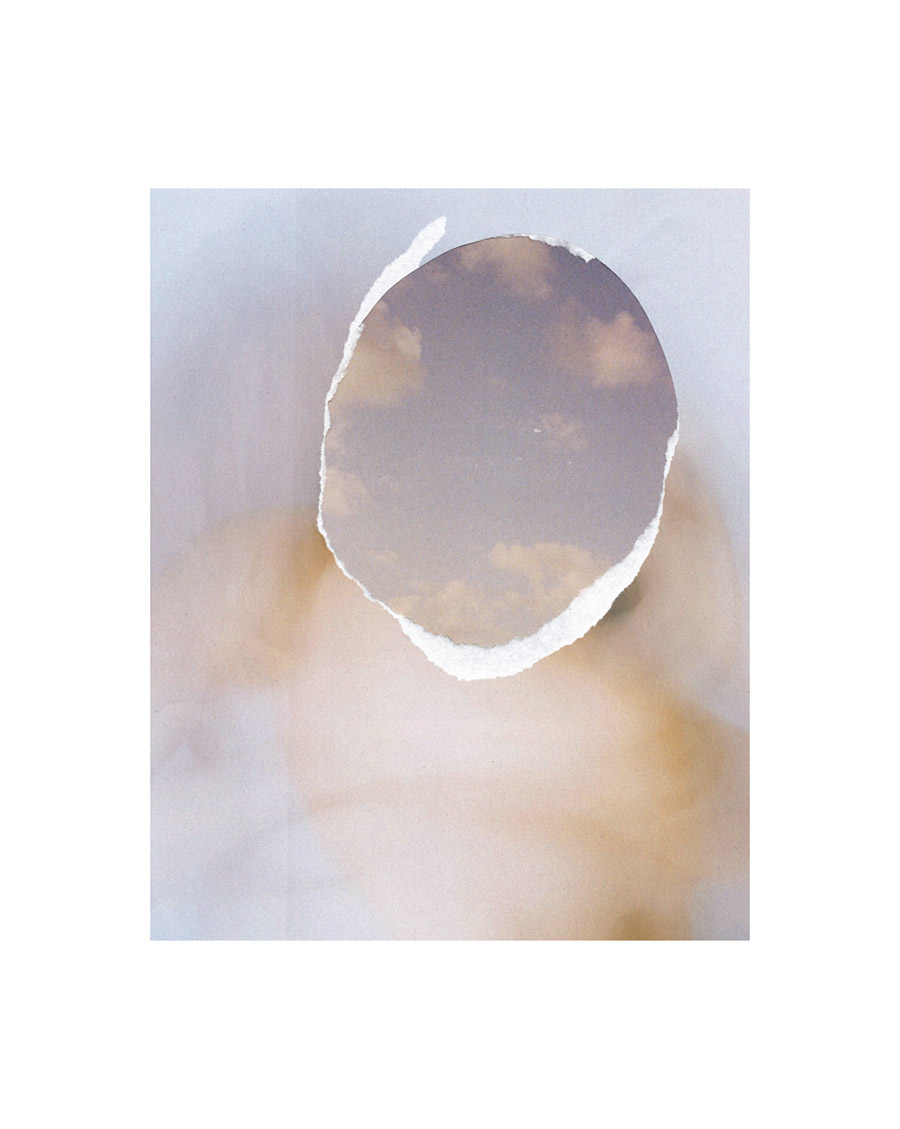
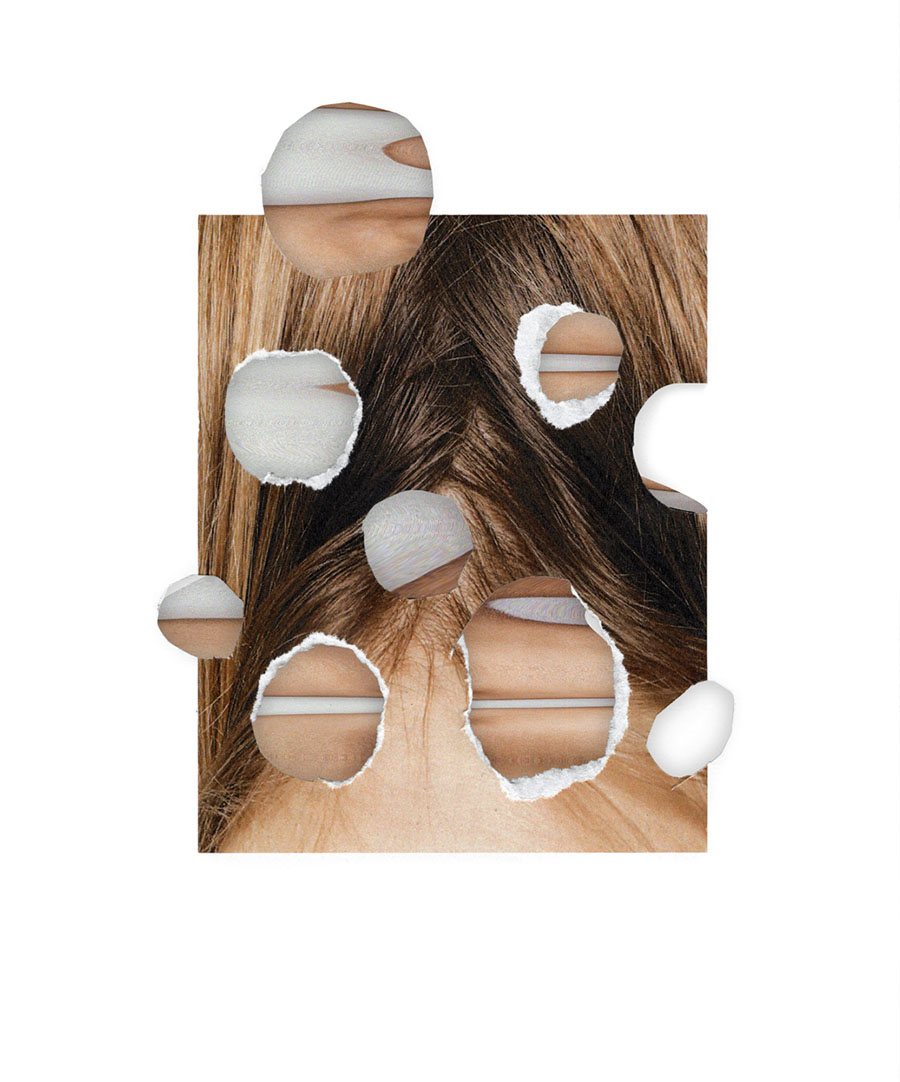
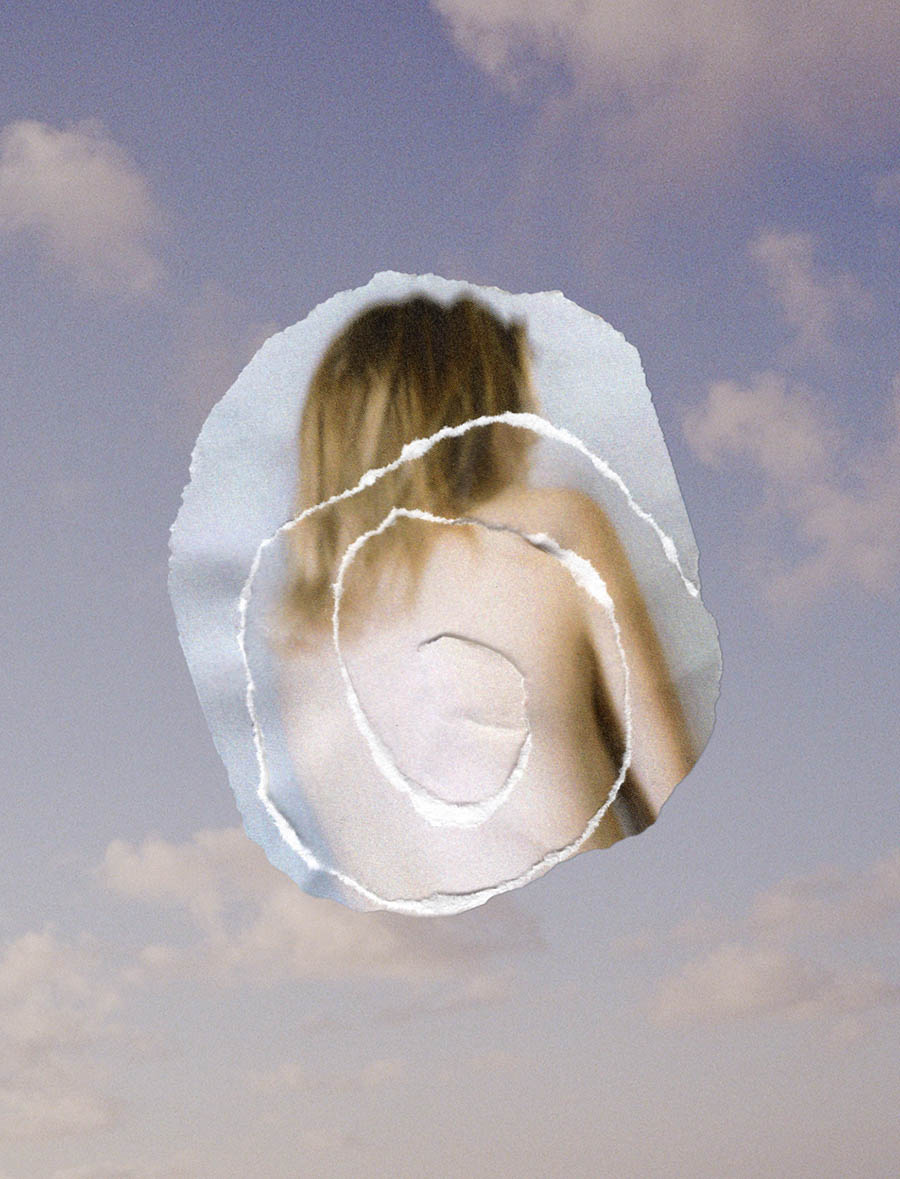
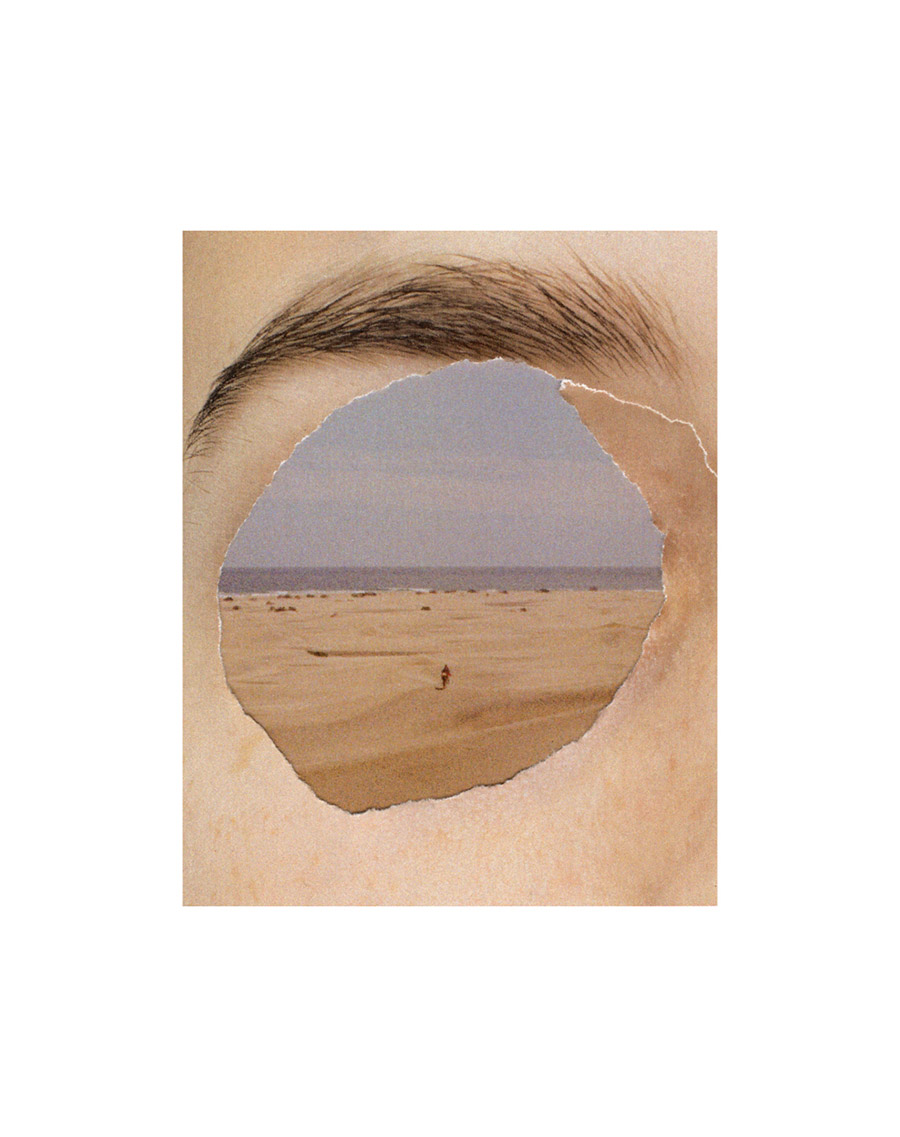
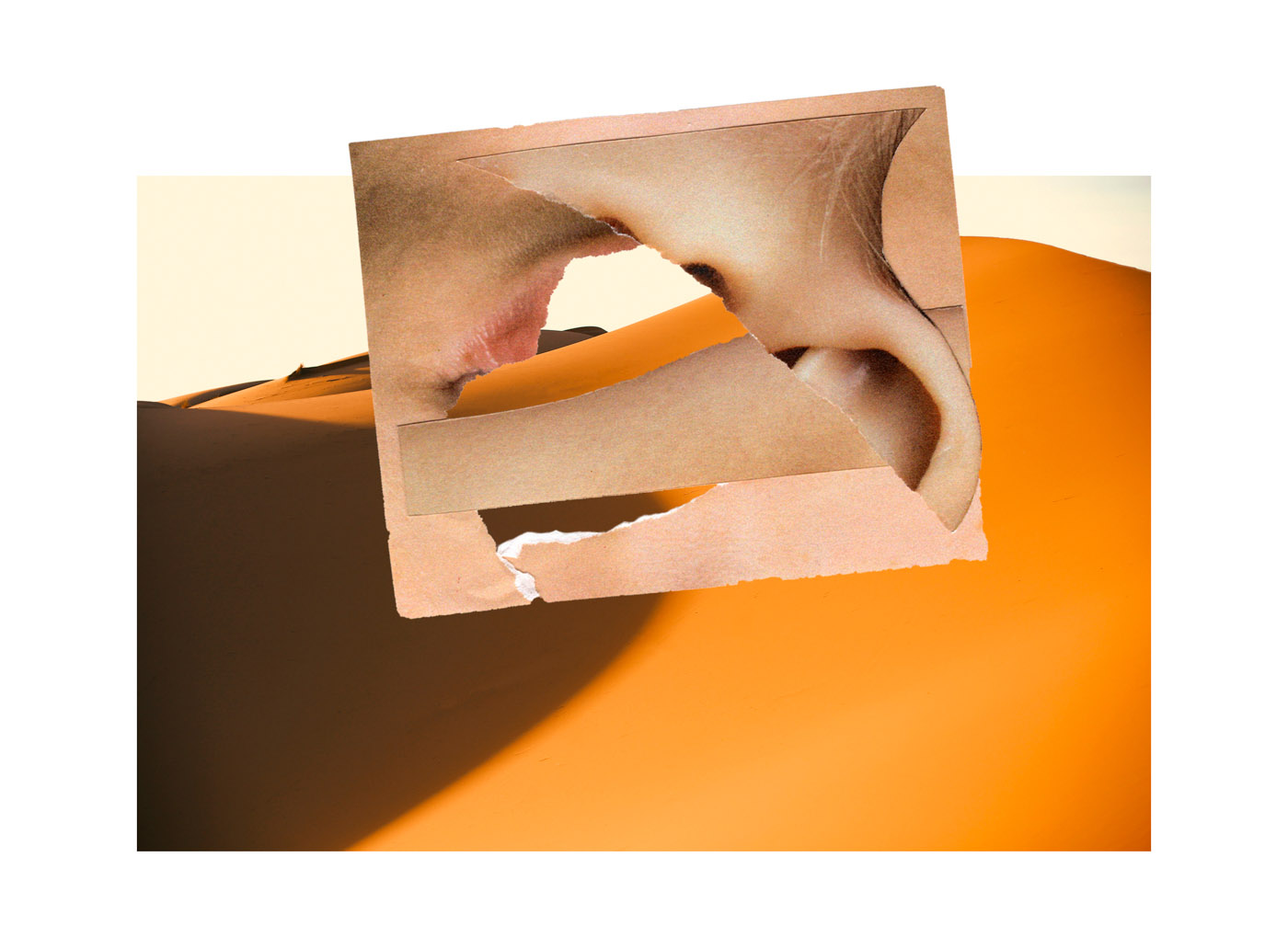
Photographer: Olivia Ghalioungui (@oliviaghalioungu)
Collage Artist: Julen Iztueta (@juleniztueta)
